The Jedi Order, also known as the New Jedi Order under Jedi Master Luke Skywalker, was a noble monastic and nontheistic religious order united in their devotion to the light side of the Force. With a history dating back thousands of years before the rise of the Galactic Empire, the Jedi Knights—noted for their lightsabers and natural ability to harness the powers of the Force—stood as the guardians of peace and justice in the Galactic Republic. The Order was originally established on Ahch-To in the Unknown Regions. In later years, the Jedi Grand Temple on the Core World Coruscant served as the hub of all Jedi activity in the galaxy. The Temple was also a training school for younglings and Padawans, who learned the ways of the Force under the supervision of Jedi Masters, twelve of whom were elected to serve on the Jedi High Council—the Order's highest governing authority. The High Council's staff officers were the Grand Master, who functioned as the leader of the Order and was a title reserved for the wisest Jedi Master, and the Master of the Order, who served as the Council's appointed leader. The Jedi Code governed the Order's way of life; therefore, every Jedi was duty-bound to observe and uphold the Code or else risk expulsion from the Order.
The emergence of the Sith Order was the result of a schism that fractured Jedi unity, dividing the Order between the Jedi who remained faithful to the light and a group of renegades that followed a rogue Jedi into exile for exploring the dark side of the Force. Thenceforth, the Jedi and Sith warred with each other for centuries. Although the last conflict concluded with the fall of the Old Republic, the ancient Sith all but perished as well, allowing a new Galactic Republic to rise under the protection of the Jedi Order. Unknown to the Jedi, however, the Sith endured in secret for a millennium beginning with Darth Bane, the sole-surviving Dark Lord of the Sith who reformed the Sith way by creating the Rule of Two—a rule limiting the Sith Order's ranks to two members: a Sith Master to embody the power of the dark side, and a Sith apprentice to covet that power. While the Jedi and Republic moved on, their ancient wars with the Sith fading from memory, Bane's legacy spawned a lineage of Sith Lords that culminated in the rise of Darth Sidious approximately three decades before the Battle of Yavin.
During the final decades of the Republic, the Jedi Order vowed allegiance to the Galactic Senate as the galaxy was beset by political instability and social unrest which, in turn, created a secessionist crisis that ultimately resulted in the formation of the Confederacy of Independent Systems. Lacking the sufficient manpower needed to protect the galaxy, the Jedi became commanders and generals in the newly-formed Grand Army of the Republic. For roughly three years they commanded armies of clone troopers in a conflict known as the Clone Wars, engaging the Confederacy's battle droid forces led by Count Dooku—a former Jedi Master who became a Sith Lord—and the cybernetic warlord General Grievous. Though the Jedi fought to preserve the Republic, the government they served was secretly taken over by Sidious who, as Senator Sheev Palpatine of Naboo, rose to power in the Senate and became the last Supreme Chancellor of the Republic. The Jedi were unknowingly being deceived by the Sith.
The Chancellor's deceptions and machinations culminated in the execution of Order 66, a secret protocol that forcibly turned the Jedi's clone soldiers against them, leading to an all but total extermination of the Jedi Order. With most of the Jedi eliminated, Sidious supplanted a thousand years of democracy with a new government known as the Galactic Empire. In addition, Sidious succeeded in turning Anakin Skywalker—the prophesied Chosen One who was destined to bring balance to the Force by destroying the Sith—to the dark side and renamed him Darth Vader. As a Sith Lord, the former Jedi Knight served the self-proclaimed Galactic Emperor by hunting down the few surviving Jedi, who had gone into hiding across the galaxy. In spite of the Sith's efforts, however, the Jedi continued to endure. Within a generation of the Empire's rise to power, Obi-Wan Kenobi and Yoda—both of whom survived the initial purge of the Order—trained Vader's son, Luke Skywalker, in the Jedi arts. Luke would later redeem his father, causing the redeemed Anakin Skywalker to return to the light and fulfill his destiny as the Chosen One, destroying both himself and his Master during the Battle of Endor.
The Empire dissolved into various remnants as a result of their defeat in the Galactic Civil War, allowing the Alliance to Restore the Republic to rise as the New Republic. Under the new era, Luke Skywalker endeavored to rebuild the Order by training a new generation of Jedi. Among Skywalker's students was his nephew, Ben Solo, the son of his twin sister, Princess Leia Organa, and the famed smuggler Han Solo. Ben, however, was seduced by the dark side of the Force at the coaxing of Snoke, an enigmatic figure who spearheaded the Imperial-inspired First Order. As a result, Ben adopted the name and persona of Kylo Ren, a First Order warlord and master of the Knights of Ren.
The new generation was betrayed and destroyed by Ren, who left the Jedi training temple burning by the time Skywalker recovered from the attack. Feeling responsible for Ben's fall and the massacre of his apprentices, he went into exile and disappeared from the galaxy, leaving only traces of his location on a star map. The First Order and the Resistance both sought to acquire the map, but ultimately it was the latter that succeeded due to the actions of the Jakku scavenger Rey. She followed the map to the planet Ahch-To, where the last Jedi had taken refuge in the first Jedi Temple.
Skywalker, stricken by grief and believing his return would only cause more problems, was reluctant to train Rey or another generation of Jedi. However, the last Jedi eventually returned to the fight, buying time for the Resistance to escape the siege of Crait led by Kylo Ren, who became the new Supreme Leader after killing his master, Snoke. Skywalker became one with the Force after exerting a great amount of energy to project himself across the galaxy to face his fallen nephew, but not before acknowledging that he would not be the last Jedi. His heroic tale spread across the galaxy, inspiring others and giving hope in a time of rising darkness.
Having returned from death, Darth Sidious urged Kylo Ren to end the Jedi Order by killing Rey, who was his granddaughter. After Ren renounced the dark side, Sidious attempted to turn Rey until he discovered her bond with Ben Solo. Realizing they were a dyad in the Force, Sidious nearly drained them of their life force to regain his full power. Though weakened by Sidious' attack, Rey was strengthened by the spirits of past Jedi, allowing the apprentice to stand against the Dark Lord of the Sith. She destroyed her grandfather using his own Force lightning against him, preventing the rebirth of the Sith Order, but the effort left her dead. Solo resurrected her at the cost of his life, becoming one with the Force as the last Skywalker. The Skywalkers were gone, but their legacy endured through Rey, who took the Skywalker name to honor her mentors and restore the Jedi Order to its former glory in time.
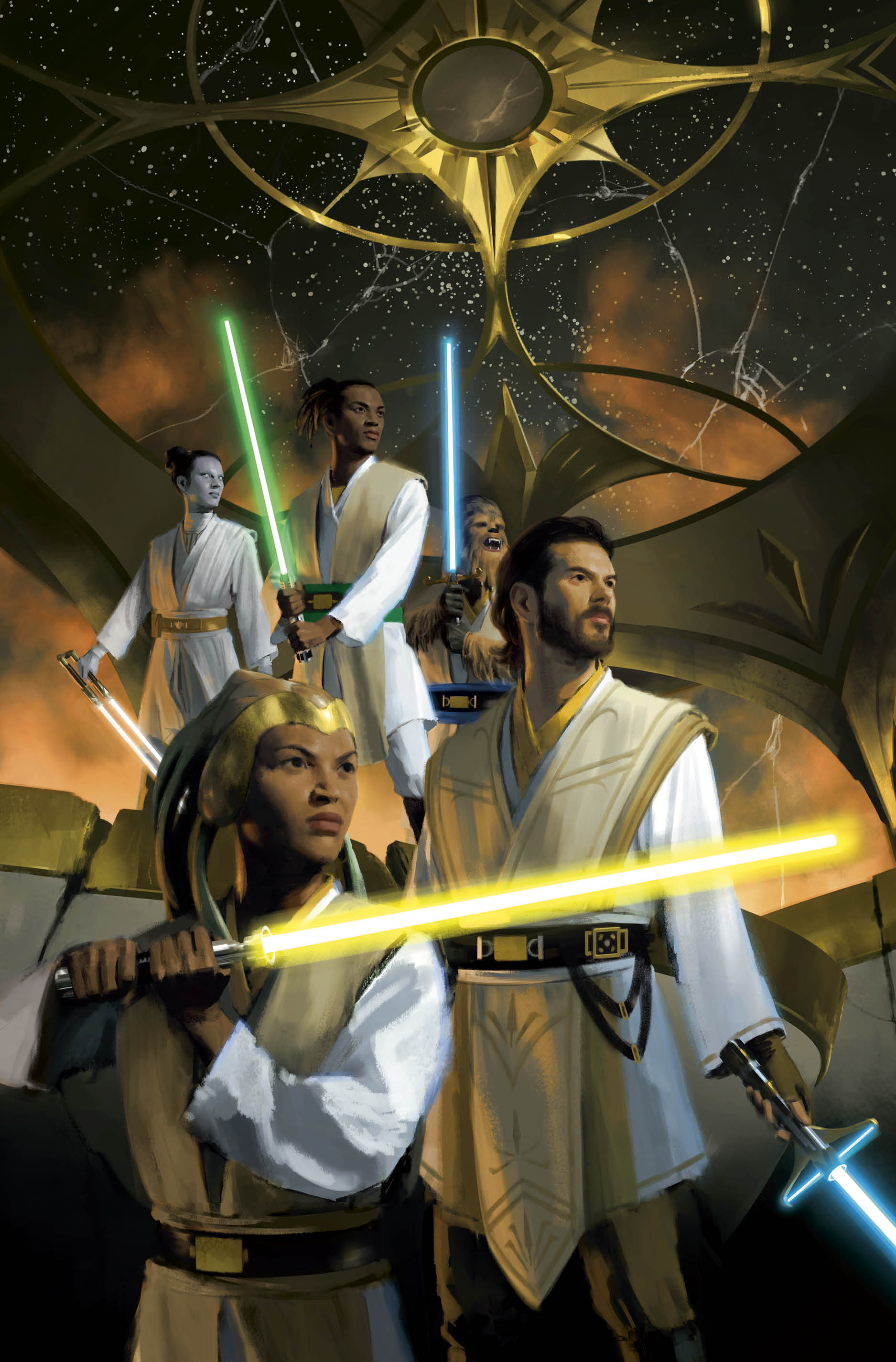
For a thousand generations, the Jedi Order protected the Galactic Republic as guardians of peace and justice.
The Jedi Knights were a noble order of Force-sensitive protectors—united by their ability to use the Force—who upheld peace and justice in the Galactic Republic for over a thousand generations, carrying out what they sensed to be the will of the Force as its instruments. As keepers of the peace, the Jedi Order undertook diplomatic missions on behalf of the Galactic Senate, and pursued interplanetary criminals across the galaxy. Whereas the Sith—the historic enemies of the Jedi Order—harnessed the dark side of the Force for power, the Jedi followed the ways of the light side of the Force. The Jedi Code, along with a collection of other foundational texts, guided the Jedi way of life, governing the behavior of individual Jedi to the philosophy and training regimen of the Order as a whole. Though the Jedi worshipped no specific deity, the Chosen One played an important role in Jedi prophecy and mythology. The virtues of the Order included compassion, generosity, peaceful resolution, and spreading justice.
Jedi needed to understand they were, like all people, imperfect and needed to always learn to be better. The Jedi were instructed in the ways of the Order and the Force; as their knowledge grew, each member progressed through several different ranks. With the exception of Anakin Skywalker, prospective Jedi were identified a short time after birth by the quantity of midi-chlorians in their blood, a factor which indicated the level of a subject's Force-sensitivity. Many of these children were listed within Jedi holocrons before being identified by the Order. Training began at the level of the Jedi Initiate; at some point in their training, younglings were expected to find their own Kyber crystal—the heart of the lightsaber, a distinctive and elegant weapon of the Jedi—in order to pass an ancient rite of passage known as The Gathering.
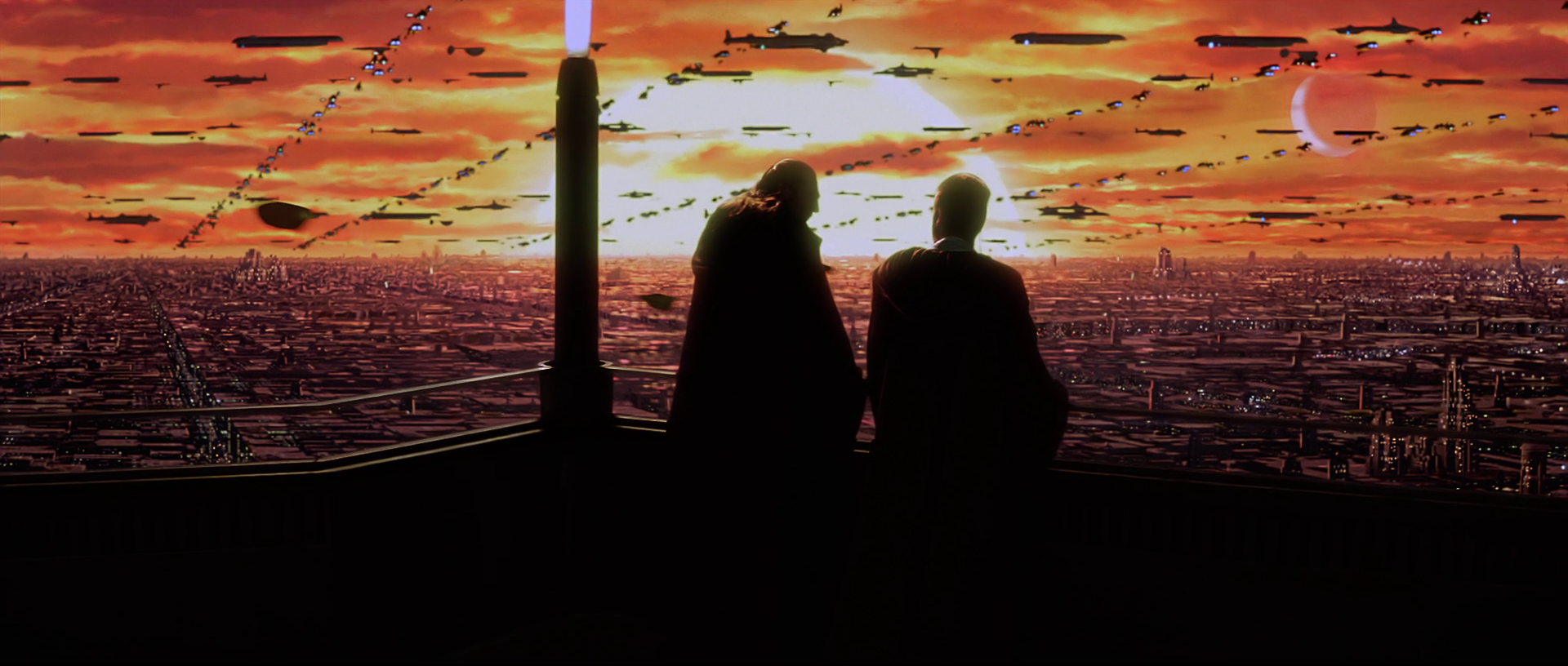
Padawans were assigned to fully-trained Jedi, such as Knights or Masters, in order to complete their training in the Jedi arts.
Younglings who succeeded in their trials graduated to the level of Padawan, the apprentice of a more experienced member of the Order. In accordance with the Jedi Code, a Master could instruct only one student in the ways of the Force at any given time. The Padawan braid, a symbol that represented a Jedi apprentice's status in the Order, was worn in the hair or head, depending on the Padawan's species. The braid was removed when a Padawan ascended to the rank of Jedi Knight or in the case of banishment from the Order's ranks.
The Jedi Trials were a series of tests that ultimately determined whether a Padawan was worthy of the rank of Jedi Knight. After becoming a full-fledged member of the Order, a Jedi could choose to adopt a Padawan of their own as part of the Order's tradition in training the next generation of Jedi. Teaching the ways of the Force to the next generation of Jedi was considered one of the greatest honors in the Order, its existence and traditions perpetuated through "a cycle of training and education." The Eye of the Nihil, Marchion Ro, believed that being structured into an order gave Jedi an advantage; in addition to tapping into the Force, any Jedi could tap into their Order to find confidence and structure. Being part of a united group made it so individual Jedi were willing to make large–scale decisions, which they believed would spread their light throughout the galaxy. In effect, a Jedi was not merely strong and bold because they could use the Force. Instead, being part of the overall Jedi Order helped them grow to embody those traits.
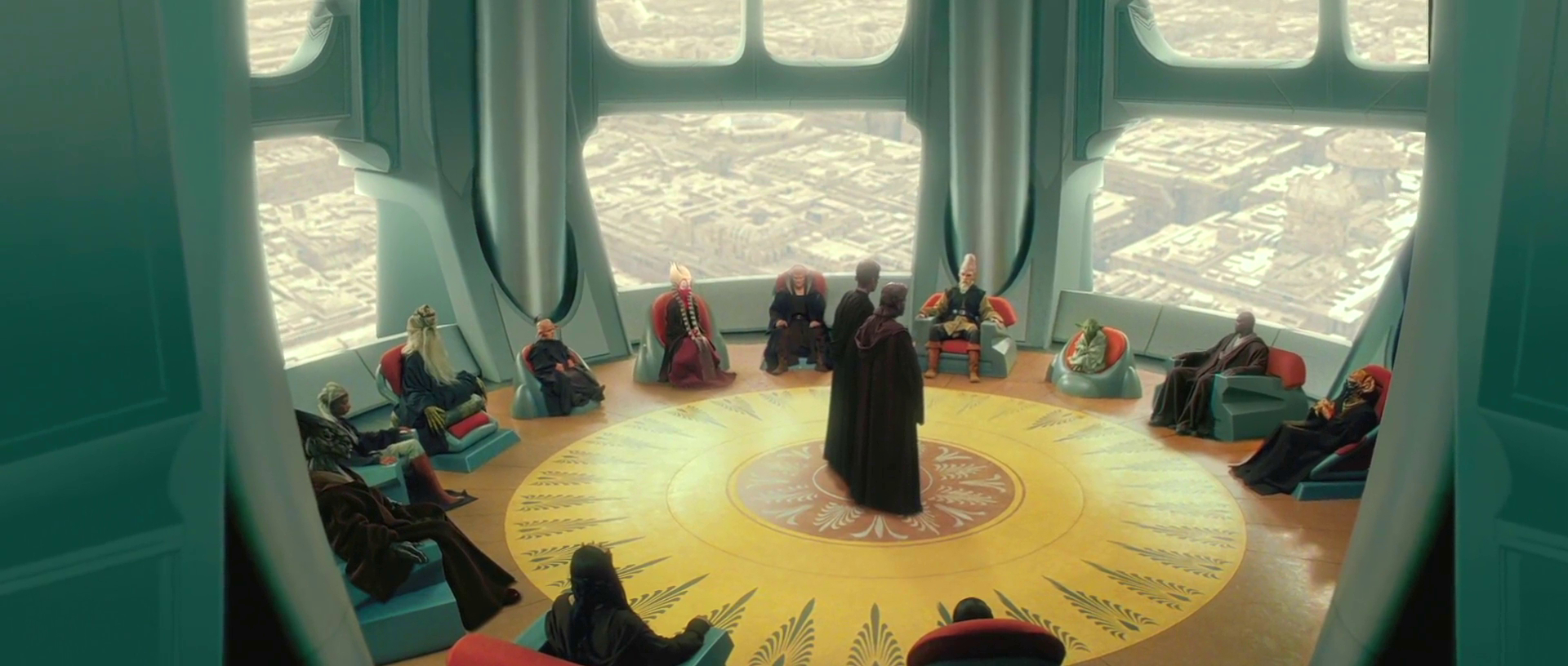
Comprised of twelve Jedi Masters, the Jedi High Council was the governing body of the Jedi Order.
The most powerful and legendary Jedi held the rank of Jedi Master. Again with the exception of Skywalker, the Jedi High Council—the highest governing body of the Order—consisted of Masters throughout the history of the Order. Among the High Council, the title of Grand Master was conferred on the oldest and wisest member of their group, while the Council's leadership rested with the Master of the Order.
The Jedi Order in its capacity as a peacekeeping force of the Republic vowed allegiance to the Galactic Senate and democracy. As an "extension" of the Republic's Judiciary branch, the Order was under the legal jurisdiction of the Senate, and as leader of the Senate, the Supreme Chancellor had the privilege to make requests of the Order. However, this prerogative did not give the chancellor direct authority over the Order, which was legally under senatorial oversight. According to Sheev Palpatine, the Office of the Chancellor would become a dictatorship if the Order was forced to comply with orders from the Republic head of state.
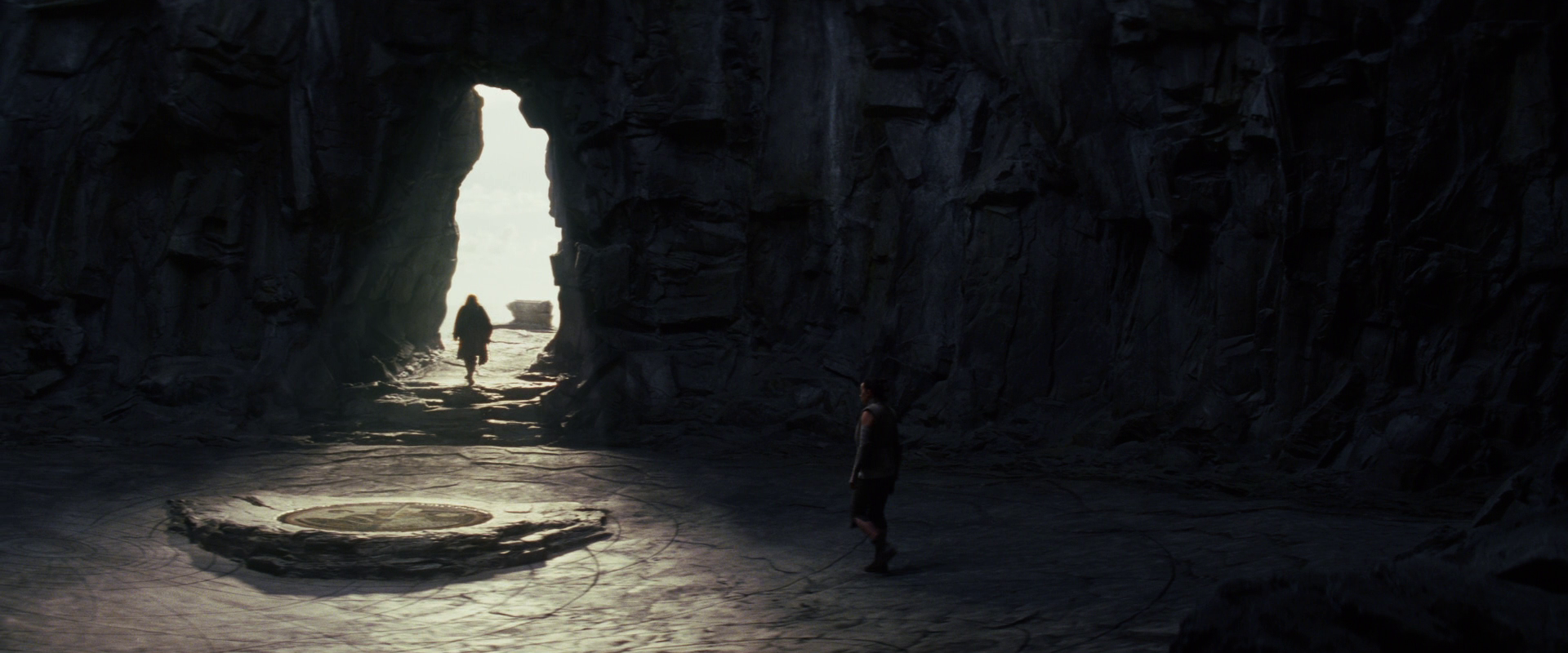
The first Jedi Temple was built on a sacred island of Ahch-To.
Jedi temples served as places of worship, training schools, and repositories of knowledge for the Jedi Order. The first Jedi Temple was built atop a sacred island on Ahch-To tens of thousands of years before the First Order-Resistance War. The temple rose high above the surrounding sea, and was worn down by erosion and time. Some signs of its past remained, however, such as mosaics and an ancient meditation ledge. One such mosaic depicted the Prime Jedi in a state of meditation; the same mosaic symbolized the nature of the Force as a duality between the dark side and the light.
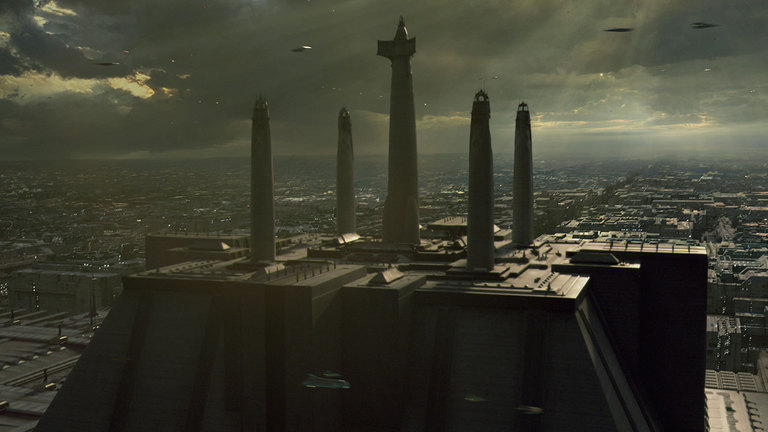
During the era of the Galactic Republic, the Jedi Order made its home in the Jedi Grand Temple on Coruscant.
The Jedi Order made its home in the Jedi Grand Temple on Coruscant, the capital world of the Galactic Republic. Over the millennia, the Temple served as the central hub of all Jedi activities in the galaxy; it was a school, a monastery, and the headquarters of the Jedi High Council. As a school, the Temple was the largest active Jedi training center in the galaxy where younglings trained to become Padawans and ultimately full-fledged Jedi Knights. The Jedi Archives, the source of all knowledge accumulated by the Order, was located inside of the Temple.
As the symbol of the Order, the Temple signified the Order's status in galactic affairs. While access to the Temple was not restricted to just the Jedi, all non-Jedi personnel were required to undergo compulsory entry tests before becoming employed at the Temple. Those who worked in the Temple often dedicated their whole life to serving the Order. Having sustained extensive damage during the fall of the Jedi, the Temple was renovated and renamed as the Imperial Palace, with only the original structure's corpse and five skyscraping towers remaining intact. In addition to the Temple on Coruscant, the Order maintained several ancient temples spread across the galaxy. Jedi understood they were connected to the entire galaxy through their Order, seeing the galaxy itself as their home instead of a singular location as deserving that term.
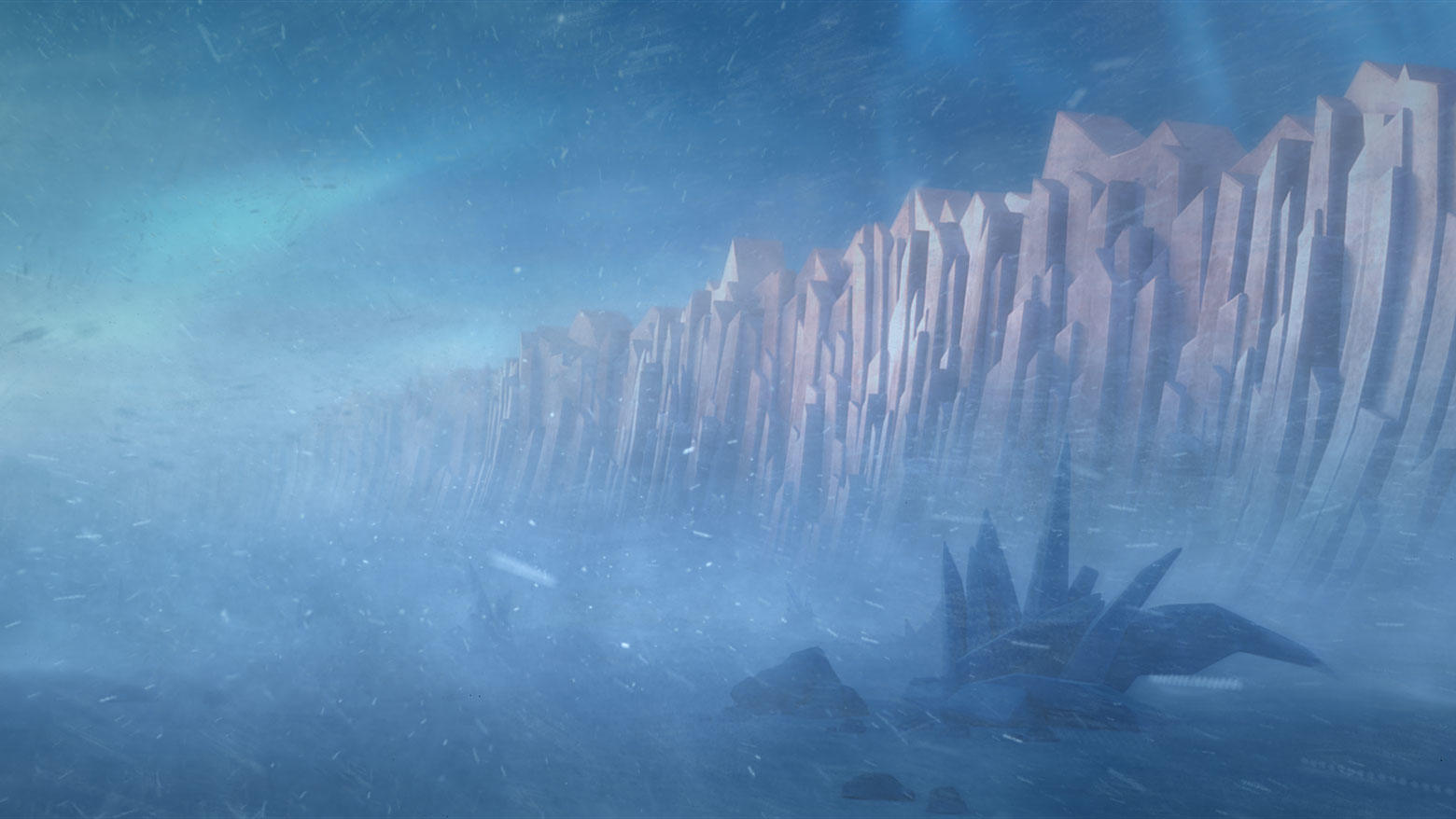
The Jedi Temple on Ilum was used for a sacred ritual known as The Gathering.
One ancient temple was located on Lothal, and was only accessible if both the Master and Padawan were present. The Lothal temple was where Padawans were sent to confront their fear without the support of the Masters, some of whom ultimately died while waiting for their students who never returned, leaving the temple's antechambers littered with their skeletal remains. Other Jedi enclaves included the Temple of Eedit on Devaron, the Temple of Vrogas Vas, and the Temple of Ilum where younglings were sent to participate in The Gathering. The Jedi Order established smaller outposts at various locations around the galaxy, including one on Elphrona. These outposts dated as far back as the High Republic Era and the great Jedi spread across the galaxy that saw them work alongside various communities. It contained various artifacts that were important to the history of the Jedi.
While Ilum was regarded as the most sacred planet to the Jedi Order, the desert moon Jedha—a holy site and home to one of the first civilizations that explored the nature of the Force—was considered a spiritual home of the Jedi. Like Ilum, Jedha contained the kyber crystals that the Jedi used to create their lightsaber. It was also a holy site for pilgrims throughout the galaxy, who sought spiritual guidance in the Holy City of Jedha. At one time it was an important world to the Jedi.
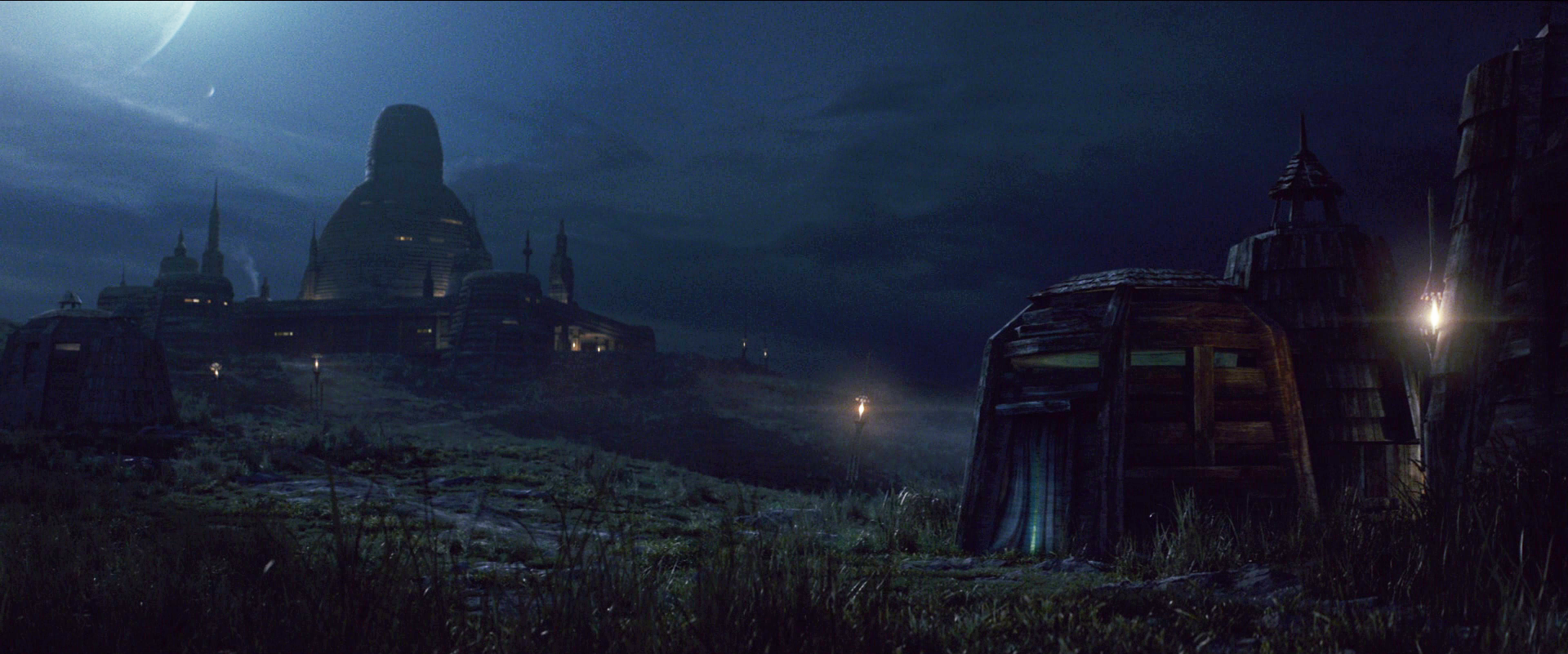
The Jedi Temple on Ossus served as a training school for the apprentices of Jedi Master Luke Skywalker.
A number of Jedi sites could also be found on the planets Tython and Ossus, such as the Jedi Temple of Tython or the First Temple on Ossus. The Jedi maintained a connection to Tython, and one of their sacred texts described "notable beasts of Tython." Ossus was also the location of the Great Jedi Library, which was destroyed before the Clone Wars and in complete ruins by the time of its rediscovery by Luke Skywalker. Despite this, Skywalker still located an original copy of the Rammahgon, one of the sacred Jedi texts, on the planet. During the New Republic Era, the Jedi Temple of Luke Skywalker was constructed on Ossus with the goal of becoming a "great school" for future generations of students in the restored Jedi Order.
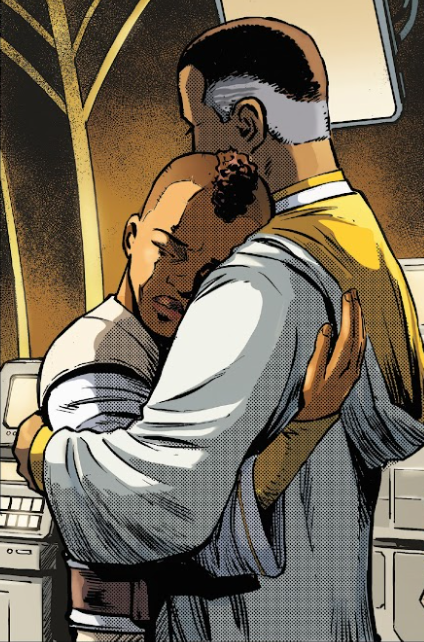
Compassion and non-attachment were regarded as essential to members of the Jedi Order
With the galaxy changing as new threats emerged, the Jedi Order took on many forms and traditions over its life in its mission to fight those threats. As such, the particular way members of the Jedi Order interpreted the current form of its ideals impacted the way they interacted with the galactic population. The High Republic Era was a time of greatly expanded Jedi activity, and the Order had many outposts throughout the galaxy. The Galactic Republic relied heavily on their role as guardians of peace and justice, to settle disputes through peaceful ways, to protect planetary leaders and senators. With the Republic's rapid expansion and the Order's role in protecting that effort, the Jedi also established many new temples across the Outer Rim, keeping the buildings in line with the planetary cultures they found themselves in. With many Jedi living amongst these communities through such temples or while out on their mission, the Jedi learned local customs and truly became part of the cultures they protected.
By the time of the late Republic Era, the galactic scale of their responsibilities required the Order to focus on and spend their time on the galactic astropolitical scene and the bigger questions: stopping menaces, some before they even develop, saving whole star systems at a time. Knowing that their decisions affected billions of lives, the Jedi Council regularly sent out Knights to report on the state of the various parts of the galaxy. However, as their duties amounted, several Jedi outposts were shut down to direct resources where the Republic needed the Jedi the most, and their withdrawal caused many people to abandon the settlements grown around the presence of the Order. Jedi Knights found it increasingly difficult to find time for personal interaction with the people of the galaxy, with many young Jedi often forgetting that concerns that seemed small on a galactic level were often huge for the individual, despite Master Yoda and other Council members' efforts to teach them to pay attention to the present and where they are. In effect, the Jedi Order grew increasingly isolated from the galaxy at large, much to the concern of Jedi Master Qui-Gon Jinn, due to its shrinking number of outposts.
Focusing on galactic issues instead of remaining on a smaller scale, the Jedi thus were focused more and more on the future of the Republic. Secluded from the galaxy at large due to its headquarters on Coruscant, the Jedi Order was left adrift, not only because of its isolation but also how it had become heedless of strange changes within the Force. While the Jedi still cared about the galaxy, the Jedi stayed locked away in their shrinking number of temples, instead of remaining a part of local communities as they had in the High Republic Era. Jinn and Master Yoda feared that, since many people of the galaxy saw and interacted with Jedi Knights less and less, they might start to believe or could be made to believe that the Order ceased to care about them. What with many of the Order's other outposts being shut down while the Temple on Coruscant remained, Jinn pondered if the Order's headquarters sitting on Coruscant was a problem, reasoning it made them look like Republic warriors. While Yoda warned him that the Council would not agree with his concerns about Coruscant, Jinn even feared the Jedi themselves could fall into that viewpoint and lose the true meaning of what it meant to be a Jedi.
During the High Republic Era, the Order and the Jedi Council enabled Jedi who were drawn to solitary action to become "Wayseekers"—Jedi who operated outside of the dictates of the Council to instead follow the Force on their own terms. Such a position was seemingly not permitted in the late Republic Era due to the defiance it showed towards the council. Wayseekers were still bound to the values of the Order, so their abilities and skills could not be used in the pursuit of selfish concerns.
Although they were not meant to be soldiers nor warriors, the Jedi of the last years of the Republic became generals of the Republic Military and fought in the Clone Wars. Jedi Knights of all eras adhered to the Jedi Code, however, there were debates on how to follow its doctrines, and many Jedi developed their own personal understanding of them. One major concept was that of avoiding attachments, but different Jedi expressed different understandings of that rule. Padawan Kevmo Zink explained the overall idea behind avoiding attachments was inspired by the Jedi Order's mission to the Force; if a Jedi was truly expected to work for the good of the entire galaxy, they could not tie themself down with one attachment, such as a romantic relationship with another being.
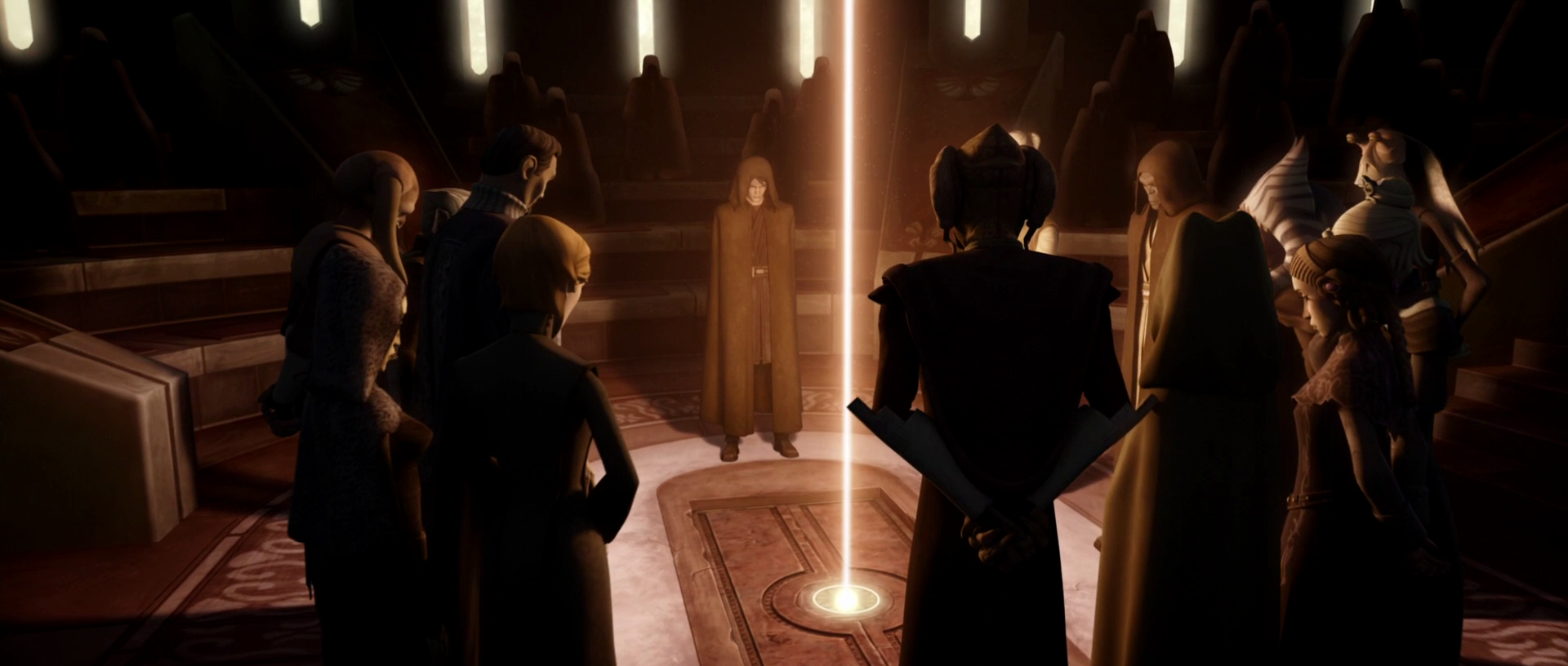
To be a Jedi was to let go: friends would live and pass on, but a Jedi could not allow their connection to give way to uncontrolled grief.
If a Jedi did form such an attachment, the Order believed that the Jedi would not be as ready to spread the ideals of the light side across the galaxy because of the relationship, which the Order taught would be a distraction. It was hoped a Jedi Knight would only be bound to the Force and the Jedi Temple. High Republic Era Jedi Master Stellan Gios explained that the Jedi tried to control their strong passions because the emotions one felt for those passions could cloud their judgement, particularly during a stressful moment. Still, he said it was wrong to deny that Jedi like himself had their own interests and desires; the task of a Jedi, he reasoned, was to not let those passions take control of their being. As late Republic Era Rael Averross reasoned, the text of the Jedi Code forbid strong attachments that divided one's loyalties and compromised their emotions. As such, he further reasoned that a casual physical relationship—which he enjoyed with a woman named Selbie—was only breaking the "letter" of the Jedi Code, not its actual binding spirit. While Averross's actions shocked his fellow Jedi Master Qui-Gon Jinn, Averross defended himself and pointed out how Jinn had made an actual violation of the Jedi Code in his past via a relationship with an individual, much to Jinn's pain. Jinn himself maintained fond memories of that past relationship despite having moved on to continue his life as a Jedi.
During the High Republic Era, according to Master Kantam Sy's viewpoint, there were many Jedi who twisted the notion non-attachment; to Sy, those who spoke of suppressing emotions, forsaking love and trying to numb themselves to discomfort were twisting Jedi teachings. Jedi like Sy and Grand Master Yoda taught non-attachment or detachment, just like love, was to let go of something or someone when the time called for it, instead of allowing oneself to be ruled by the need to possess. Indeed, close friendships were respected and valued throughout the Jedi Order, but a Jedi needed to understand they could lose those they cared for and thus would need to let go, instead of letting their grief consume them.
That belief tied into the Jedi Order's beliefs on death; according to the Jedi, an individual became one with the Force upon death because they transferred into the Cosmic Force, which, in turn, generated the Living Force. As High Republic Era Jedi Master Obratuk Glii explained, he was still allowed to miss his former apprentices, but he knew they were still with him through the Force, generating a joy within him that his fellows had become part of the Force. Furthermore, he declared it meant he could not be scared of his own mortality. As selfless defenders of peace and justice, Jedi were also willing to lay down their own lives in defense of others.
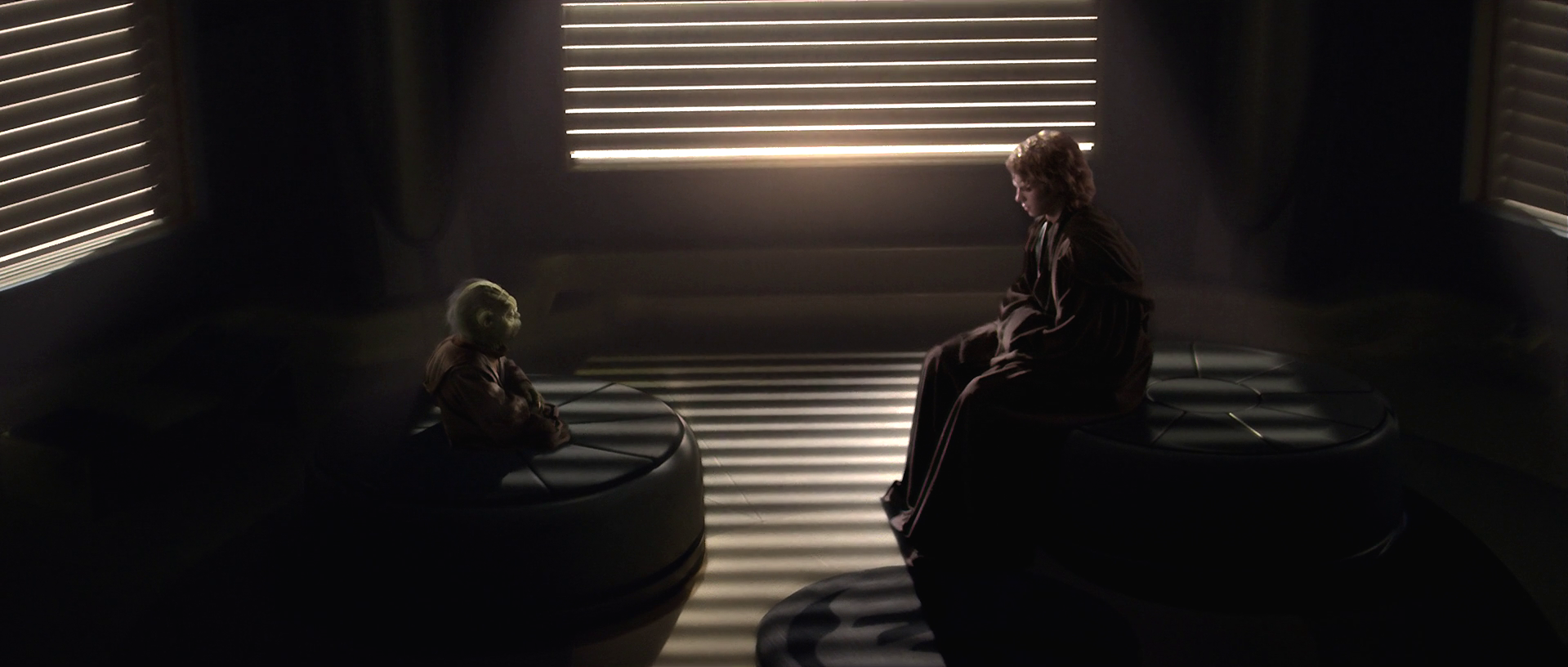
The Jedi Order taught its members to move beyond what they feared to lose, ensuring a Jedi did not cling onto the present in an ever-changing galaxy.
As such, a Jedi needed to be careful with their relationships so as to not let attachment, and the naturally ensuing fear of losing those attachments, consume them. It was not that a Jedi was not allowed to feel romantic love, as it was understood such feelings were natural, but a Jedi were not supposed to enter into a romantic relationship. It was essential for a Jedi Knight to make the right choice for the Order and not neglect their Jedi duties in the favor of their beloved, even if that would mean the end of the relationship. As Zink explained, a Jedi was able to use the Force to direct themselves through the tides of strong emotions and learn what the underlining motivations of those feelings were. With that, a Jedi would not be ruled by their passions, but instead could make tactical decisions with a better understanding of their own mindset.
For some outsiders, as such, the Jedi teaching on the matter often misinterpreted, believed the Jedi to be distant and seemingly unconcerned about the lives of those they were to protect and that "love" was forbidden for a Jedi. The actions of some emotionally distant Jedi Knights did little to help that misconception: during the days of the High Republic, a Jedi Knight saved the lives of a starship crew, including the young Axel Greylark, but needed to drag the badly injured boy away from his father, trapped under the rubble, thus leaving him behind. The Jedi told him that what happened was the will of the Force, something that left Greylark baffled. Years later, when he recounted the incident to Jedi Knight Gella Nattai and how the Knight later forgot his face, he concluded that one grieving boy in a galaxy full of them was nothing, but Nattai affirmed to Greylark that one grieving boy was everything.
Jedi of the High Republic Era displayed a great deal of emotional openness to those grieving or upset—showing it in actions like offering a hug. During the waning decades of the Republic, compassion was still meant to be central to a Jedi's life, with the non-attachment rule defined in theory as someone not meant to fearfully grasp on things and beings in a universe ruled by change. However, the actions of a Jedi appearing not to care could damage the entire Order's reputation or result in that Jedi failing to help someone who needed support. Jedi Knight Iskat Akaris found a lack of support amongst the Jedi as she grappled with her insecurities during the late Republic Era.
During the Clone Wars, amid an incident on Coruscant in which the Jedi attempted to recapture the Hutt crime lord Ziro Desilijic Tiure, a Jedi was forced to redirect a transport to ensure it avoided hitting a platform of people, but the redirected ship instead crashed into the Martez family apartment. Two children—Trace and Rafa Martez—became orphans in the incident with the demise of their parents in the crash. The Jedi in question then failed to properly explain herself in a compassionate matter, trying to assure both that she had needed to make a choice but that the Force would still be with them, a phrase that meant nothing to the two girls.
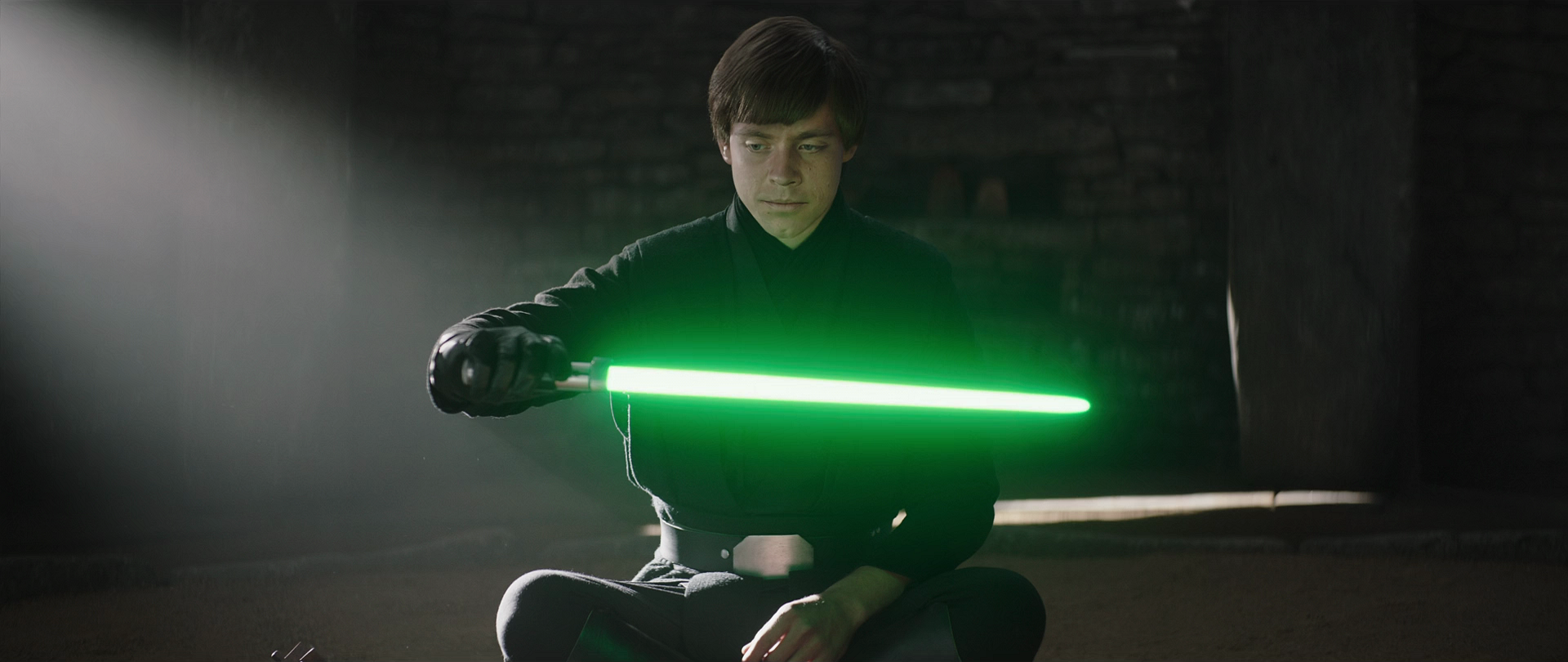
For Luke Skywalker, surrendering to one's attachments was to forsake the ways of the Jedi Order.
Luke Skywalker affirmed the Jedi Order's commitment to non-attachment since the early days of his efforts to rebuild it. However, he also told his sister, Leia Organa, that she could still be married to Han Solo if she joined the Order. Due to his unorthodox training in the Jedi arts, Skywalker sought to provide the next generation of Jedi with a more conventional path to knighthood. As the last Jedi of his era, Skywalker found comfort through adherence to the Jedi way, having largely isolated himself from his friends while rebuilding the Order. In addition, the Armorer—a Mandalorian who was familiar with Jedi history—stated that the Jedi were required to sacrifice personal attachments in order to master the ways of the Force. While in the process of training Grogu, Skywalker informed his apprentice that giving into attachments to those whom he loved was to forsake the way of the Jedi.
During the history of the Jedi Order, the lightsaber considered to be the Jedi's only true ally in battle. Beyond its existence as a weapon, however, the lightsaber was a symbol of care to the Jedi; as explained by Jedi Knight Obi-Wan Kenobi, the blade represented the care with which they approached and wielded their gifts, further serving as a message to their opponents and representing something that needed great skill and training to wield. In choosing a rather limited weapon, Kenobi explained, the lightsaber was also the symbol of their role and duty as protectors, not destroyers. Further reasoned by Kenobi to be a tool that showed the Jedi could be more powerful but openly chose not to be, the lightsaber represented a Jedi's duty to stand tall against darkness. While the phrase "this weapon is your life" was popular during the late Republic Era, a Jedi—as exemplified by the High Republic Era and Kenobi's speech—needed to be more than their lightsaber. Indeed, after the Order's fall, Luke Skywalker came to realize that a Jedi was not their lightsaber and instead the duty he was tasked with was something beyond a single weapon. Faced with either needing to rescue his friend Leia Organa or continue looking for his lightsaber on Cloud City, Skywalker came to his decision and left to help his friend.
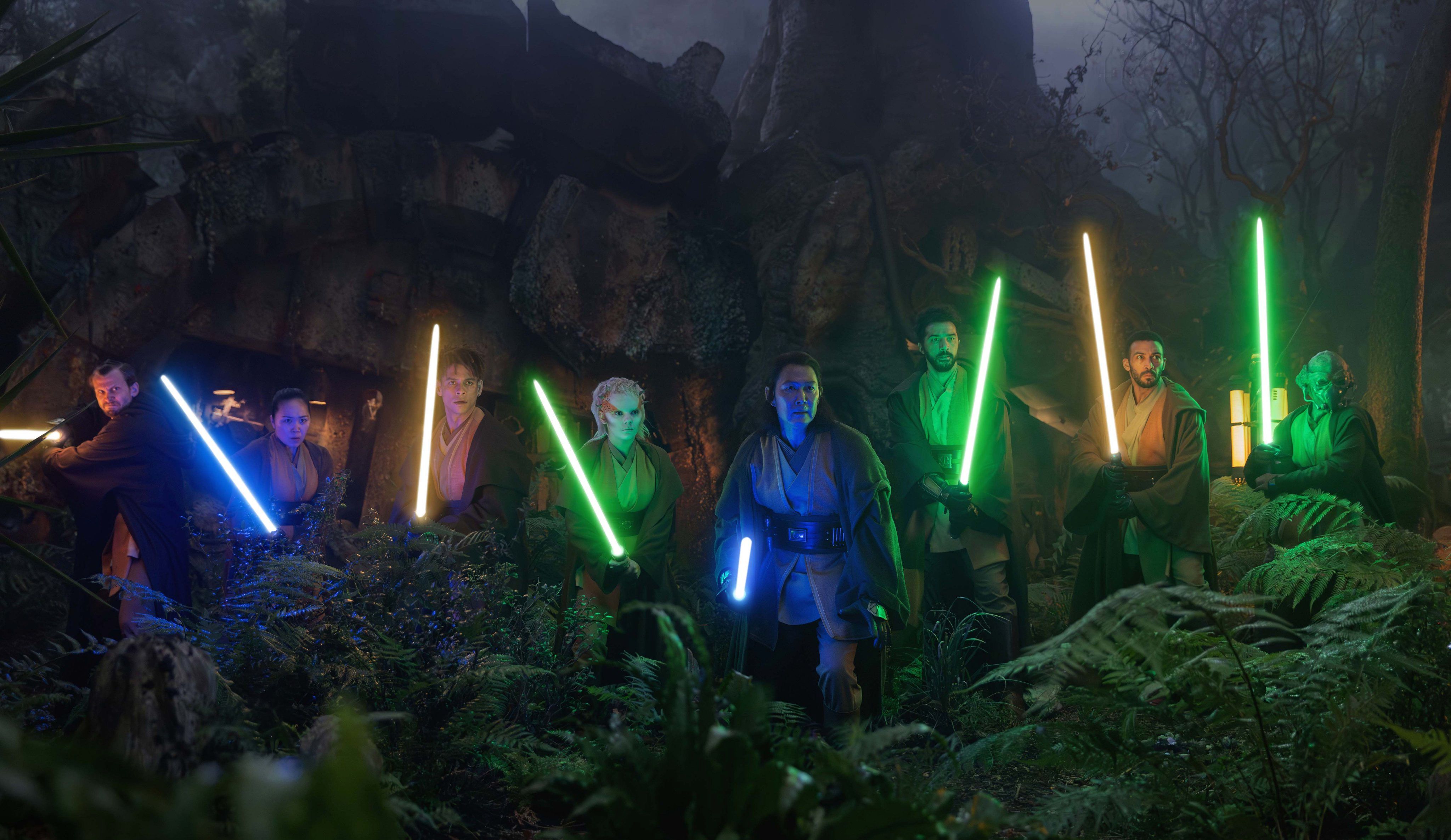
The High Republic Era saw a greater variance in lightsaber color than just green and blue lightsabers.
The High Republic Era would also see a greater variance in lightsaber color and hilt design than the Jedi of the late Republic. During the late Republic era, Jedi largely wielded blue or green lightsabers with simple silver hilts. A shift in lightsaber design could be seen in the High Republic Era: the Nihil conflict saw the Jedi Order implement the Guardian Protocols and prepare for greater conflict, during which the High Council knew Jedi could lose their blade and be forced to quickly replace it. Rather than have Jedi spend time building elaborated hilts, the Council reasoned that speed and effectiveness was of the essence and that a ready supply of lightsabers was something the Order needed. As such, the Council ordered Jedi to only construct battle sabers, hilts with a simple design like those seen in the late Republic Era. Even then, Jedi active in the later High Republic Era still had a wider variance in lightsaber color than the blue and green-filled Order of the late Republic. While each individual Jedi built their own lightsaber as a youngling to their own specifications, allowing for a degree of individuality in hilt design even during the late Republic Era, groupings of Jedi of that time were largely defined by cylindrical silver hilts of an overall similar design, with those hilts mainly producing green or blue blades.
During the High Republic Era, when the young boy Lohim Nara spoke to Grand Master Yoda about his life-long desire to join the Order, he confessed that he had faked his Force-sensitivity and midi-chlorian count, but Yoda told the boy of how the Force was not the sole answer to what a Jedi was. Yoda spoke of how the Force existed in all life forms and how, if he wanted to be someone worthy of the name Jedi, he could not dwell on what he did not have. He also told the boy not to worry about being "too old" to become a youngling, stating that he was still learning at over six hundred years old. While Yoda seemed to admit the boy could not be a Jedi Knight due to his age, he noted that other professions helped the Order and offered him a role as a after Nara realized he had a mentor in Reina Bilass.
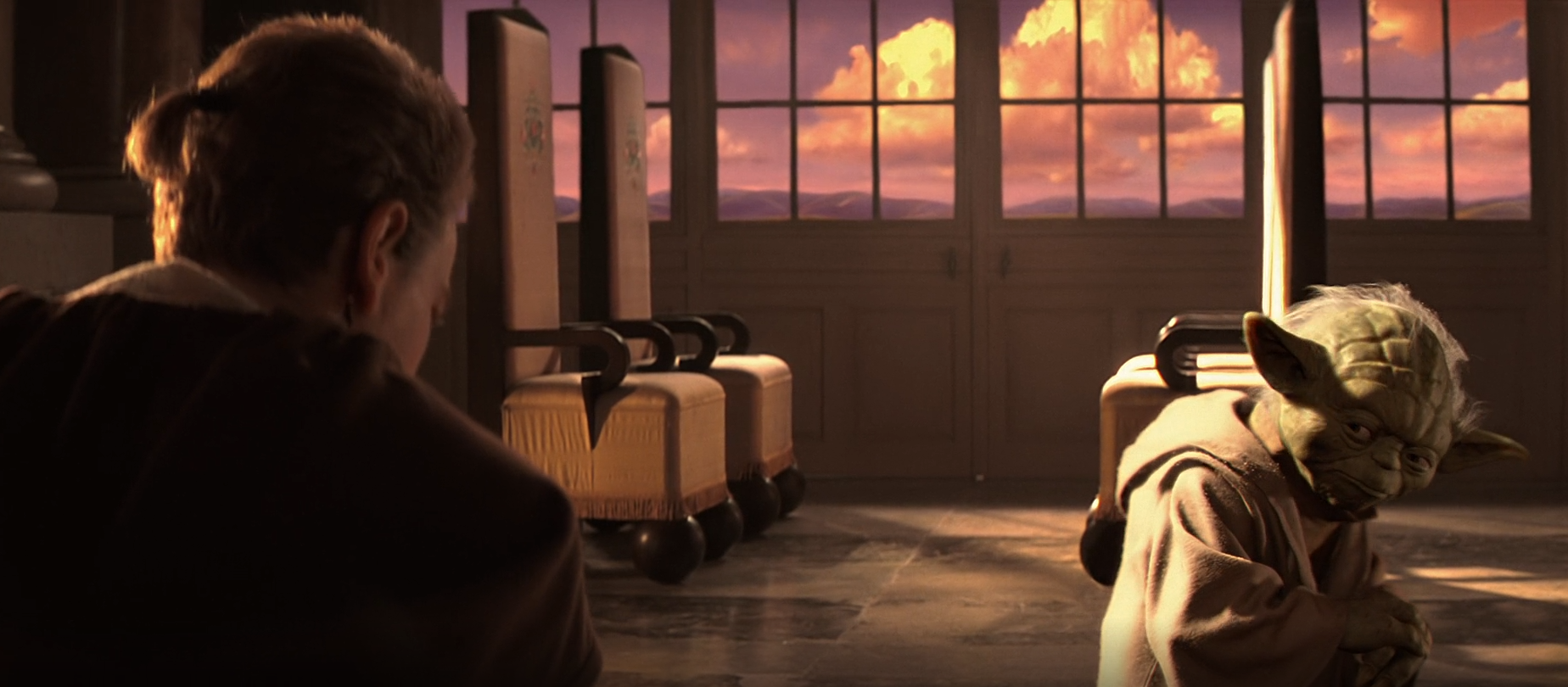
Yoda served as a Jedi Master for centuries and thus was present to watch as the Jedi Order changed with the galaxy.
However, later in its history, the Order proved reluctant but willing to bend their rules as the death of Jedi Master Qui-Gon Jinn and return of Sith convinced the Council to allow the young Anakin Skywalker to be trained, despite he was initially deemed too old. Decades later, Yoda also chose to take Luke Skywalker as his apprentice after initially pointing out how old he was. Alternatively, the Order of the High Republic also became a home for the young Force-sensitive Zeen Mrala, who did not train as a Jedi but became close to many Padawans and, despite Jedi regulations forbidding its members from engaging in romance, fell in love with Padawan Lula Talisola. Despite not being a Jedi, she was welcomed to train with the Padawans and their masters, with Talisola's master Kantam Sy helping her to control her anger. Later, in order to find and save Talisola, Mrala realized that she was willing to join the ranks of the Jedi despite her age, although her realization came from how she figured certain Jedi rules would be bent due to the evolving Nihil conflict.
The High Republic Era Order also maintained close ties with other Force orders, working as part of the Convocation of the Force on Jedha. Through its ties to other orders, the Jedi brought rescued children who were "too old" to be trained as Jedi to Jedha, where they were taken in by other faiths. In the late Republic Era, the Jedi continued to help orphans find new homes, but there were instances where they failed to do so because of local law or their own non-attachment rule going so far it blurred the line between non-attachment and apathy, such as when a Jedi of the late Republic Era left Trace and Rafa Martez on their own after the deaths of their parents. Beyond those deaths being an indirect result of the Jedi's own actions, the Jedi's apparent lack of concern and the fact they simply left the two girls on their own created a distaste in both girls towards the Jedi Order, on whom they did not want to depend upon.
While Grand Master Yoda once declared in the late Republic Era that a Jedi leaving the Order was a failure on the Order's part to keep that Jedi where they belonged, Jedi were permitted to leave the Jedi Order whenever they so chose without punishment, with Yoda accepting that fact, even if a Jedi leaving might sadden him. Should they feel it to be their calling, a former Jedi was even permitted to return to the Order. During the High Republic Era, one of Yoda's Padawans, Kantam Sy, walked away from the Jedi for over a year before returning when they met their soon-to-be Padawan Lula Talisola, who made Sy believe their place was with the Order. Jedi Master Cohmac Vitus was surprised Yoda would allow his Padawan to do a walkaway from the Order, but Sy believed Yoda knew it was necessary for them to find their place in the Order, with Sy at the time also thinking Yoda had seen it coming and thus was why he had held off on their Knighting.
Twenty Jedi Masters who departed the Order became known as the "Lost Twenty" and were commemorated by busts located in the Jedi Archives of the Temple. Yoda believed the Lost needed to be remembered and honored, which enabled the Jedi to learn from the failings that caused them to depart. Still, he advised the Jedi not to live in the past just because prior members had departed. The twentieth of the Lost was Dooku, a former Padawan of Yoda who departed over issues with the Jedi and Republic. Despite his departure, Dooku was allowed to visit the Temple on Coruscant, continued to have access to its Archives, and was even allowed to retain possession of his lightsaber, with Yoda reasoning being a Jedi was more than a title and thus the weapon would still be of use to him.
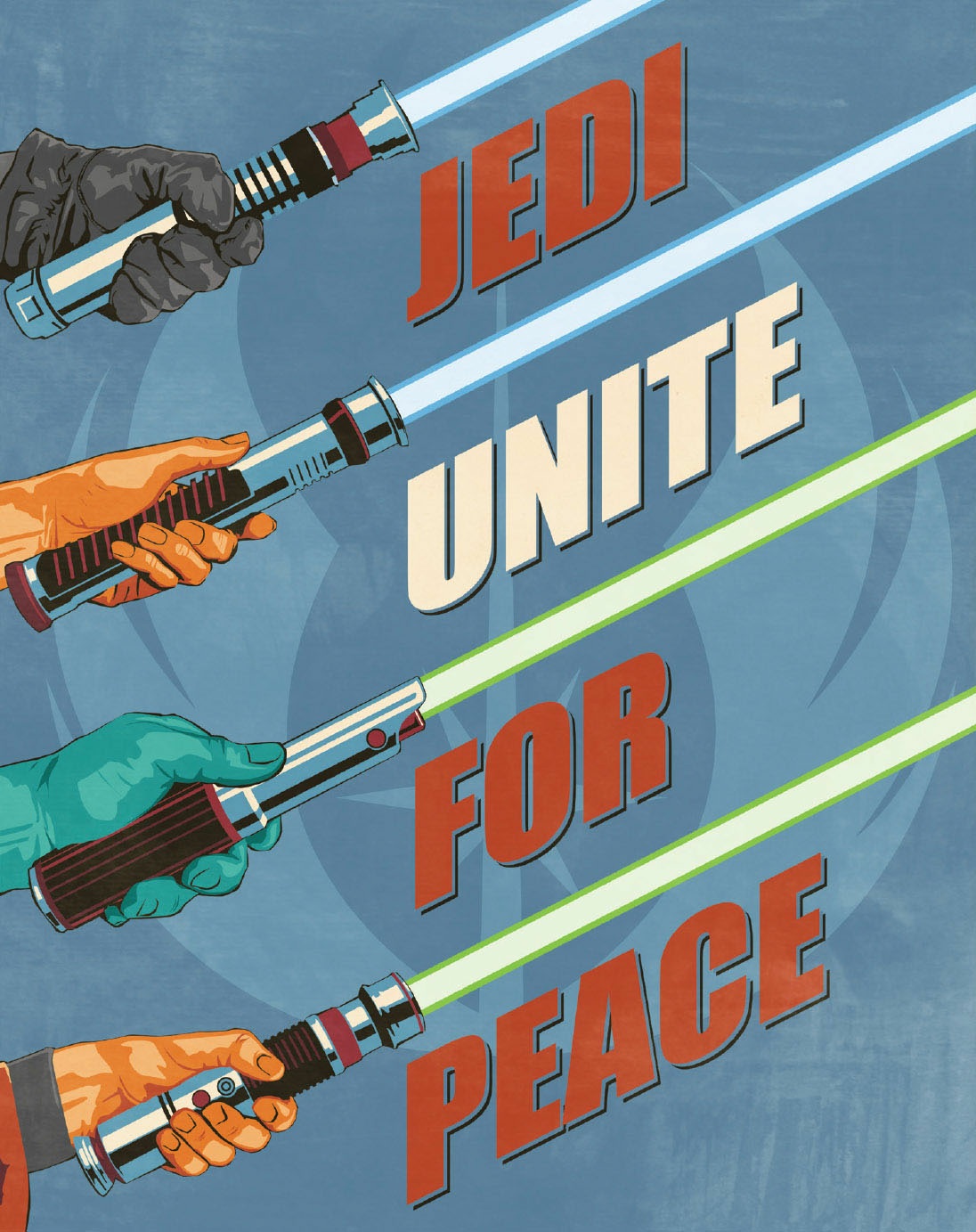
The Jedi were committed in their duty as guardians of the Republic, but had no desire to be celebrated as such.
The Jedi Order was regarded as a mysterious organization throughout its history. The Order was ingrained in the public consciousness of the galaxy as a result of its strong ties to the government of the Galactic Republic, but was nonetheless inscrutable to the general public. However, those who encountered the Jedi were awed by their Force abilities. Nevertheless, the Jedi were celebrities of their time, a status reflected by Jedi-themed holodramas as well as stories written about the Order. The Archivist, a historian who studied Jedi lore prior to joining Crimson Dawn, believed that to most people the Jedi exemplified the moral virtues that were affiliated with the light side of the Force, making them both loved and hated by the galaxy that they served.
During the High Republic, the Jedi actively worked to be part of local communities in addition to helping them. However, the Path of the Open Hand cult spread its influence by claiming all who used the Force were violating the energy field from its freedom, claiming that each use of the Force to solve a problem created an equal or worse problem elsewhere. The people of the planet E'ronoh were divided on the Jedi, with some believing they were miracle workers while others looked down on the Order as a group of Republic-backed outsiders. The arrival of the Path galvanized anti-Jedi sentiment on E'ronoh. The Path would, in time, evolve into the militant Path of the Closed Fist that hoped to war with the Jedi. Open Hand-adherent Path members and the Path's descendant movement, the Elders of the Path, maintained their anti-Jedi sentiment. Open Hand Elder Yulon Onning abandoned the Closed Fist yet still hoped to see it triumph over the Jedi, whom he continued to see as "filth" and a group whose defeat would be a victory for the Open Hand. In the end, the Closed Fist would be succeeded by the Nihil, a group of marauders who waged war with the Jedi and Republic in their name of securing what they saw as their true freedom.
Public discontent with the Galactic Senate led to manifestations of anti-Jedi sentiment during the late Republic Era. As an extension of the Galactic Republic's Judicial Department, the Jedi Order was subject to the authority of the Senate, and therefore, considered an instrument of the government's will. This belief was held both within the Senate and without; Senator Dagonet said that the Jedi served the Senate, and Semage of Raxus Secundus accused them of being "lapdogs" for the Republic government. Hostility toward the Jedi extended to violent acts against members of the Order, such as Jedi Master Katri who was by Semage and his guards. Jedi Master Dooku became disenchanted with both the Senate and the Order, claiming that the Jedi served a "corrupt Senate" that had "failed the Republic" in contrast to his former belief that the Jedi were servants of the Republic and its people.
During the Clone Wars, the Commission for the Protection of the Republic (COMPOR) initially attempted to use the Order as an instrument for wartime propaganda. This idea was discouraged by Supreme Chancellor Sheev Palpatine, who noted the Jedi's discomfort with their new role as generals in the Republic Military. COMPOR therefore focused its propaganda on the clone troopers who served under the Jedi's command, and as such the Jedi's contributions to the Republic war effort went largely unnoticed.
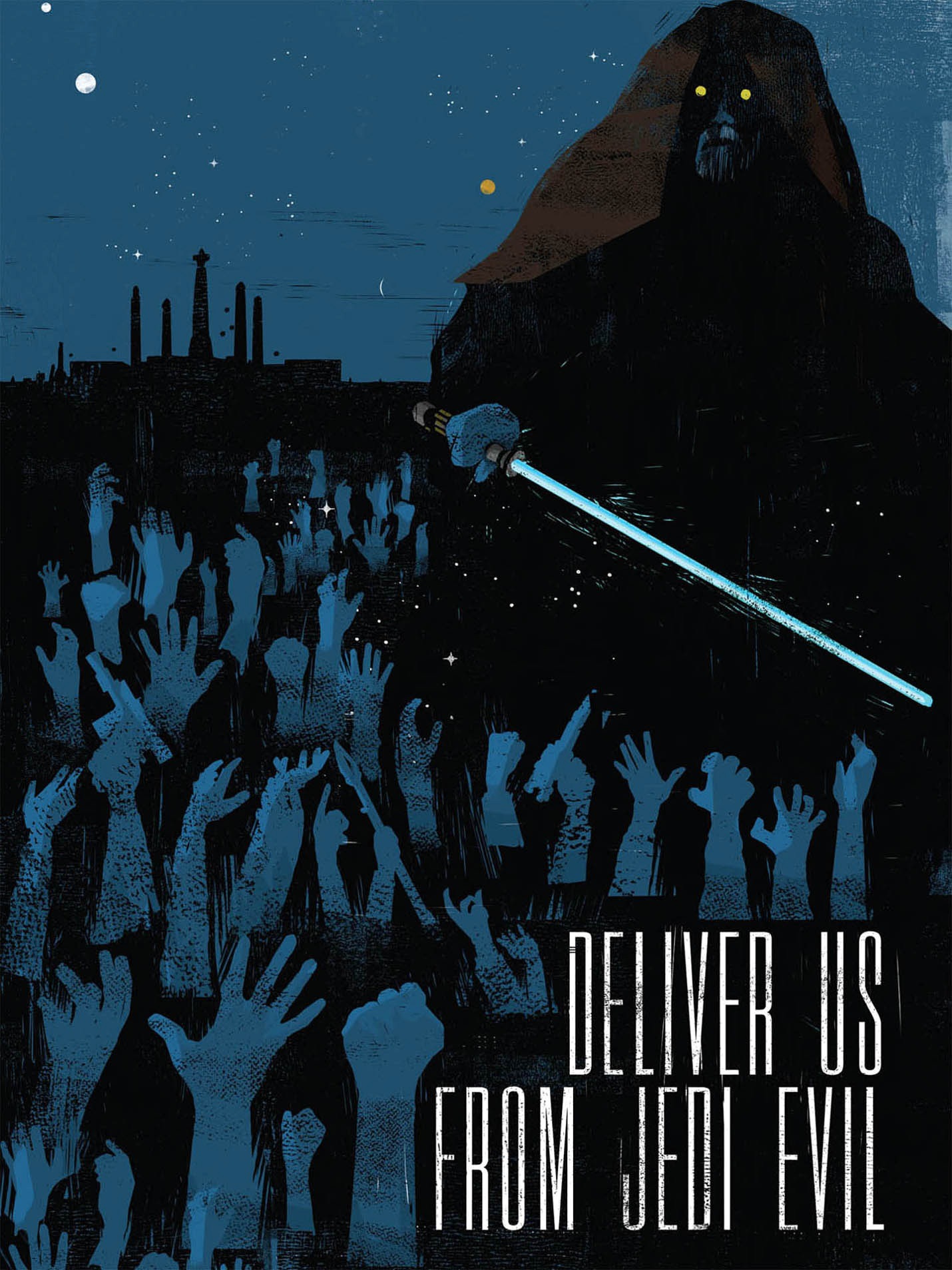
Anti-Jedi sentiment grew as a result of the Order's involvement in the Clone Wars.
The Jedi Order was vilified during the Clone Wars by elements within both the Republic and the Confederacy. The Separatists accused the Jedi of hypocrisy, claiming that the Order supported the Republic's inhumane practice—as portrayed through Separatist propaganda—of using clones as a "slave army." The Separatists' portrayal of the Jedi largely succeeded in maligning their character in the eyes of the public, as few in the Confederacy knew that the Order was not given a choice in the matter. It was the Order's preference to not be used as icons of heroism, having long resisted attempts at romanticizing the Jedi, especially for the purpose of wartime propaganda. The Jedi, therefore, were mostly absent from galactic culture, which allowed anti-Jedi sentiment to grow from preconceptions instead of a genuine rebuttal of the Order's practices. The Separatists were convinced that the Order neglected their worlds, forcing them to secede from the Republic. Separatist civilians conflated the Order with the Core Worlds' reputation for cultural elitism, and some even viewed the Jedi as "evil" and a fanatical sect of "warmongers." The historian Janyor theorized that such misconceptions of the Jedi could have been averted if the Order had been more engaged with the populace.
Anti-Jedi sentiment was openly espoused by the Republic's successor, the Galactic Empire. The self-proclaimed Galactic Emperor Sheev Palpatine accused the entire Order of treason, maligning the Order's reputation after several members of the High Council, having discovered his true identity as a Sith, attempted to arrest the chancellor. Grand Vizier Mas Amedda publicly denounced the Order as a symbol of fear and referred to the Order's downfall as the beginning of a new "age of freedom." With the exception of individuals like Lyra Erso, the Order was effectively forgotten by the galaxy during the early days of the Imperial Era. Despite the Alliance to Restore the Republic largely having pro-Jedi views, its individual members were not immune to the era's bias, with soldier Reyé Hollis believing stories he heard of the Jedi being ineffective fools who stole glory for themselves.
In general, Republic citizens were unaware of the Order's motives for fighting in the Clone Wars. To some individuals, such as the Mandalorian Duchess Satine Kryze or the Coruscanti civilian Letta Turmond, the Jedi had forsaken their principles as peacekeepers by becoming military leaders and battlefield warriors. Tee Watt Kaa, the head of a Lurmen village on Maridun, rejected the argument that the Jedi were peacekeepers, a function that he believed was incompatible with the Order's participation in the Clone Wars. A committed, to the death, pacifist, Kaa was unwilling to compromise his views, refusing to permit the other Lurmens to defend their village against the Confederacy military. They ultimately defied Kaa's authority upon witnessing the Jedi's efforts to save the Lurmens from extermination by General Lok Durd.
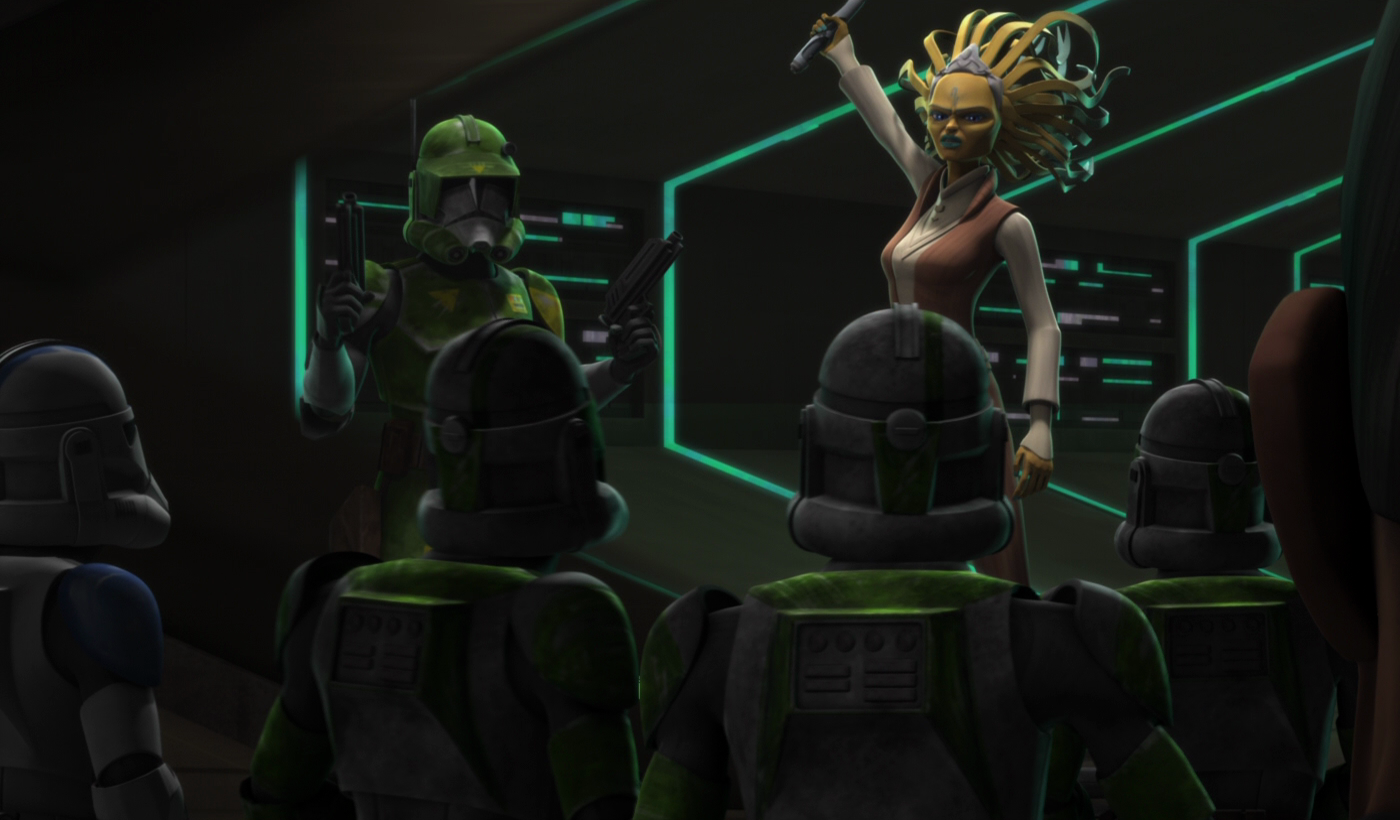
When the Jedi became military generals during the last years of the Republic, many took them as warmongers who had abandoned their peacekeeping mission.
At the height of the Clone Wars, people throughout the galaxy regarded the Jedi as warmongers, particularly in territories controlled by the Confederacy of Independent Systems. However, most beings did not know that the Order went to war to honor its commitment to protect the Senate, the Republic, and the galaxy at large. Nevertheless, the Clone Wars caused civilians like Turmond and the Martez sisters to lose faith in the Order. Rafa Martez and her sister, Trace Martez, faulted the Order for the deaths of their parents when a Jedi had redirected a transport from a platform of people, only for it to hit their apartment. With the Jedi seemingly uncompassionate towards their plight, the sisters found themselves left alone and with anger at the Jedi.
While Separatists were opposed to the Jedi due to their allegiance with the Republic, with many of Lux Bonteri's friends blaming the Jedi for the bloodshed of the Clone Wars, the citizens of the Republic would turn on the Jedi due to losing faith in their Order. To the public, the Jedi looked like a force who seemed more interested in playing politics or waging war than helping those in danger or need. Indeed, in focusing on the Clone Wars, the Jedi had less time to aid the people of the Republic they were meant to protect. Trace Martez thought of the Jedi as a police force who started the war and had forgotten about the less well off citizens of Coruscant. While a concern about the political ramifications of their actions could be seen in the late High Republic Era, former Jedi Ahsoka Tano believed that the Jedi of the Clone Wars era had overwhelmingly tied themselves to the Republic's political state, with Tano herself only regaining her faith in the Jedi when she was reminded of how important the Order could be when it helped those in need. Even then, she made sure to criticize what she regarded as political chess playing on the Order's part when again confronted by it.
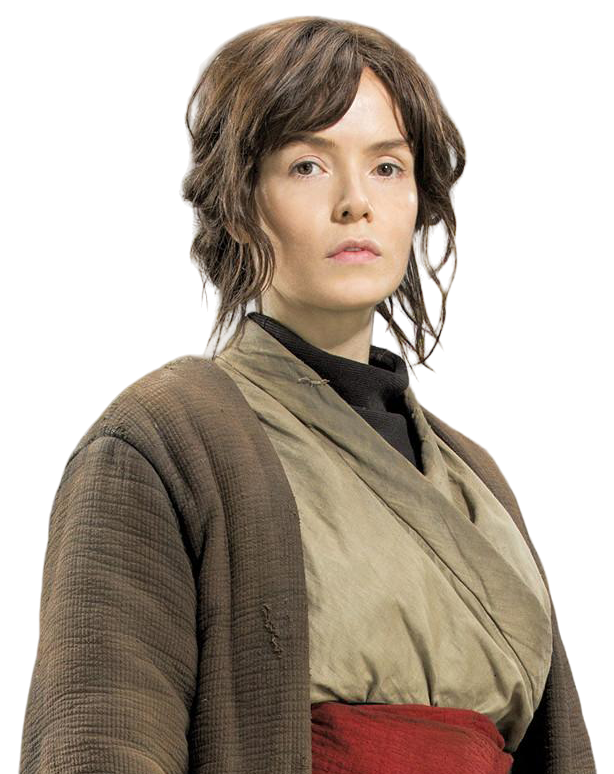
Lyra Erso was a spiritual woman who supported the Jedi Order out of reverence of the Force.
Prior to the Clone Wars, the people of the Galactic Republic kept faith with the Jedi Order that had acquitted itself through a thousand years of loyal service. Lyra Erso, the wife of Doctor Galen Walton Erso, supported the Order's views on charity, compassion, and peace. Erso's support for the Order was rooted in her faith in the Force, which evolved from her lifelong love of nature, and her belief in the concepts of good and evil. The Force, as Erso viewed it, was the epitome of perfection and good. During the Clone Wars, Erso believed that the Order was the Republic's best defense against the "powers of evil." Erso also admired the Jedi Temple on Coruscant for its elegance and location on a Force nexus. She often exercised on the Temple grounds prior to the Clone Wars; after the conflict began, however, Erso noticed a changed atmosphere at the now heavily patrolled temple district, which made the area virtually inaccessible to the public with the exception of individuals who carried high security clearance.
Erso's pregnancy was the closest she felt to experiencing the Force in the way that she imagined the Jedi's connection to it—an incomprehensible and "profound connection with life." She recognized the Force as the source of the Jedi's power, granting them abilities that far exceeded Erso's strengths and intuition. However, she comforted herself with the belief that while she could not use the Force as the Jedi could, she was able to sense it nonetheless. In the aftermath of the Order 66, Erso rejected the Galactic Empire's explanation for the Great Jedi Purge, refusing to believe that the Jedi betrayed the Republic. Whereas the public generally accepted the deaths of thousands of Jedi, largely out of relief over the end of the Clone Wars, Erso was heartbroken by the Order's destruction and cried for hours as a result, an experience she likened to the loss of a family member. Despite the eradication of the Order, Erso continued to believe in the Jedi whose principles influenced her sense of morality.
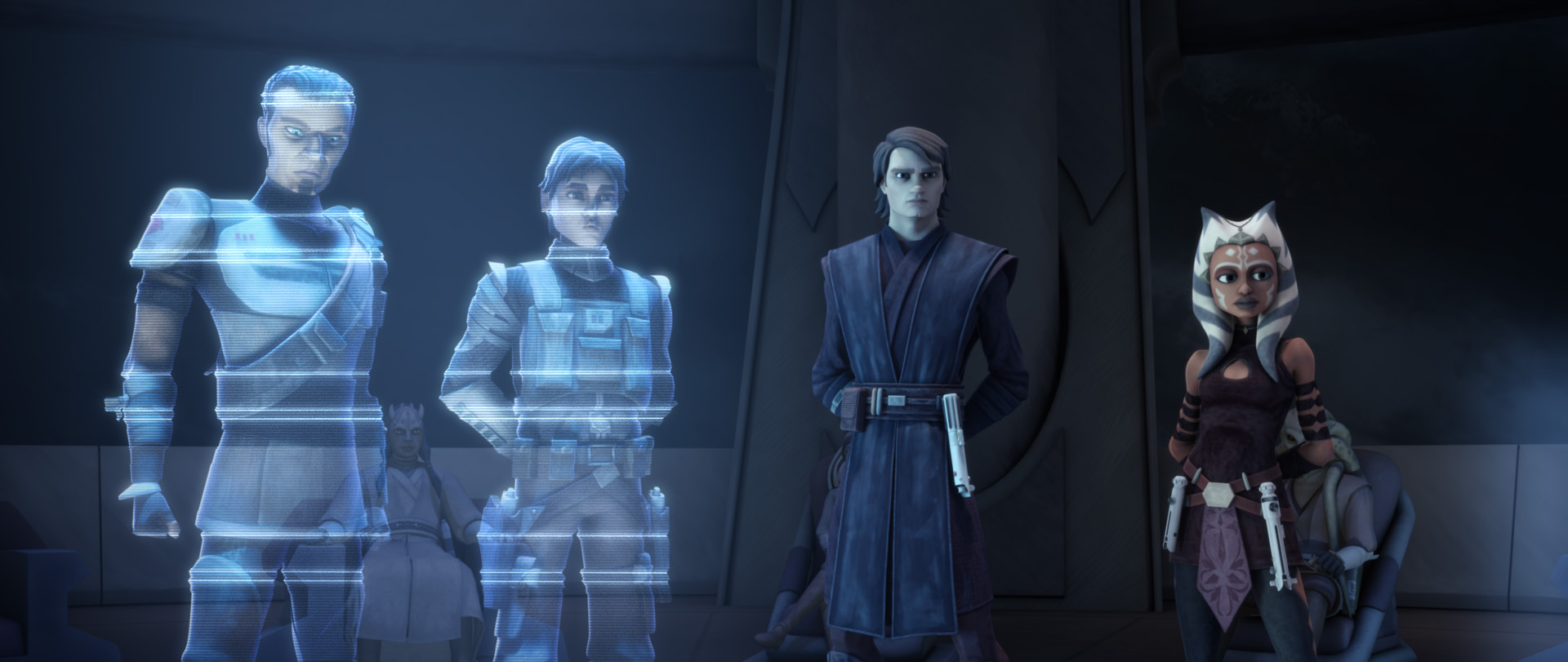
Though a former Separatist, Lux Bonteri grew to see the Jedi as heroes for their role in the liberation of Onderon.
In addition to Erso, the Jedi's deeds won the respect and admiration of individuals who worked closely with the Order, such as Cham Syndulla and Lux Bonteri. During the Battle of Ryloth of the Clone War, Syndulla was initially hesitant to accept the Order's offer of an alliance between the Grand Army of the Republic and the Twi'lek Resistance, knowing that the Republic would occupy Ryloth in the battle's aftermath. Ultimately, though, Syndulla developed a newfound respect of the Jedi for their role in the liberation of his homeworld, particularly Jedi General Mace Windu, whose memory the Twi'leks honored in songs dedicated to the liberation of their homeworld. Bonteri worked with the Order during the Onderonian Civil War, having joined the Onderon rebels after his mother, Separatist Senator Mina Bonteri, was assassinated at the behest of Count Dooku. By training and fighting alongside the Onderon rebels, the Jedi changed Bonteri's views on the Republic and the Order. Inspired by the selflessness and heroism of the Order, Bonteri vowed to restore the union between Onderon and the Republic.
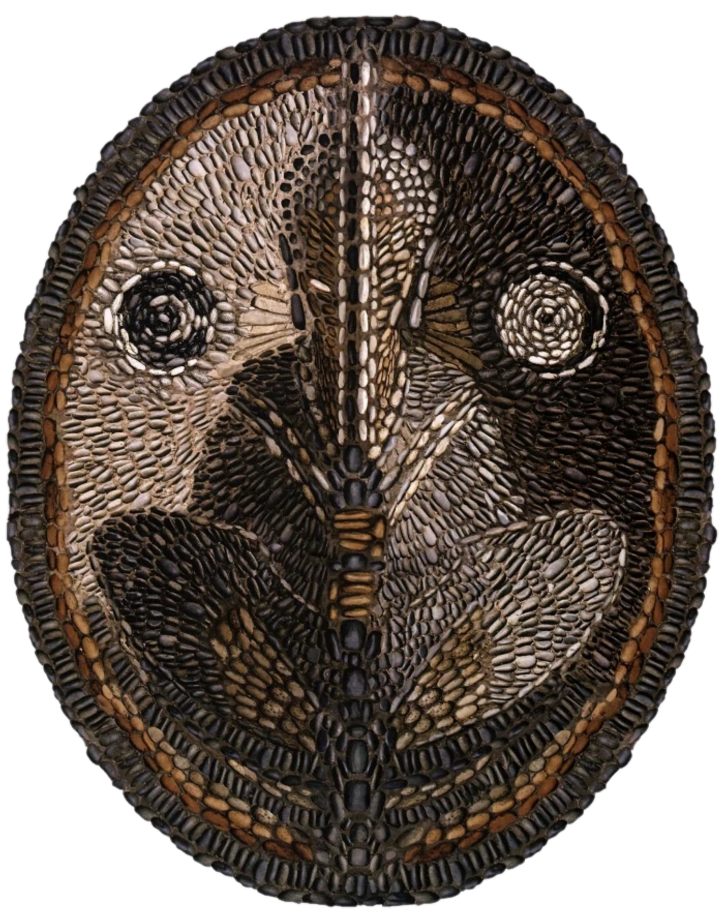
The Jedi Order began with the Prime Jedi a thousand generations before the Battle of Yavin.
The precursors of the Jedi were the Dai Bendu, but the Jedi Order itself was founded in the distant past on planet Ahch-To by the Prime Jedi around 25,025 BBY. According to the legend, Force-imbued swords were used prior to invention of the lightsaber by the earlier Force adepts and the Jedi Order. At the dawn of their order, the Jedi came into possession of Ilum, an ancient planet encased in ice and littered with kyber crystals, the heart of the Jedi lightsaber. Considered the Jedi Order's most sacred world, its ancient Temple would eventually host the Gathering, a tradition that would continue up until the fall of the Order. As the Jedi were spread throughout the galaxy, they acquired a vessel called the Crucible that would ferry students to Ilum so that they could perform the Gathering. It would become the base of the architect droid, Professor Huyang, for over a thousand years as he instructed on lightsaber designs and kept records of every single Jedi weapon created. During this early period, the Order also established itself on Ossus, Jedha, Xenxiar, and other worlds. Later, some Jedi scholars argued that a number of locations could be considered the birthplace of the Order. The scholars argued that Coruscant, Jedha, and Ossus as well as worlds shrouded in myth, such as Tython and Ahch-To could all be considered candidate worlds for the Order's birth and the location of the first Jedi temple.
The Jedi religion, as it was called by Luke Skywalker, was based around eight "sacred texts" that "describe tenets, history, and specific guidance to those studying the path of the Jedi." These texts included the Rammahgon and the Aionomica—separated into two volumes, Aionomicum I and Aionomicum II. These books included a number of aspects of the Jedi religion that appeared to have little influence on later Jedi, such as references to "gods" and the World Between Worlds. They also included more mundane information, such as lightsaber designs. The theology of the Jedi religion changed over time; many Jedi, such as Master Odan-Urr, annotated even the sacred texts. Much was added to the Jedi canon over time, giving rise to the belief that the Aionomicum II doubled in size during its compilation.
At some point prior to around 20,000 BBY, a Jedi sect known as the Ordu Aspectu broke off from the Jedi Order. Led by the enigmatic Rur and his second in command, Amon, they sought to achieve the secrets to immortality. Eventually, a conflict broke out between them and the orthodox Jedi. The conflict ended with the signing of a peace treaty. The treaty allowed the Ordu Aspectu to continue their research but under Jedi scrutiny. During his experimentation, Rur attempted to copy his intellect into his citadel's computer core, only to accidentally transfer his very sentience as well. When the Jedi sought to investigate the computer closer around 20,000 BBY, the computer activated the citadel's security droids, killing all members of the Ordu Aspectu and Jedi alike; but not before it was deactivated by Rur and Amon before they died themselves, thus ending the Ordu Aspectu.
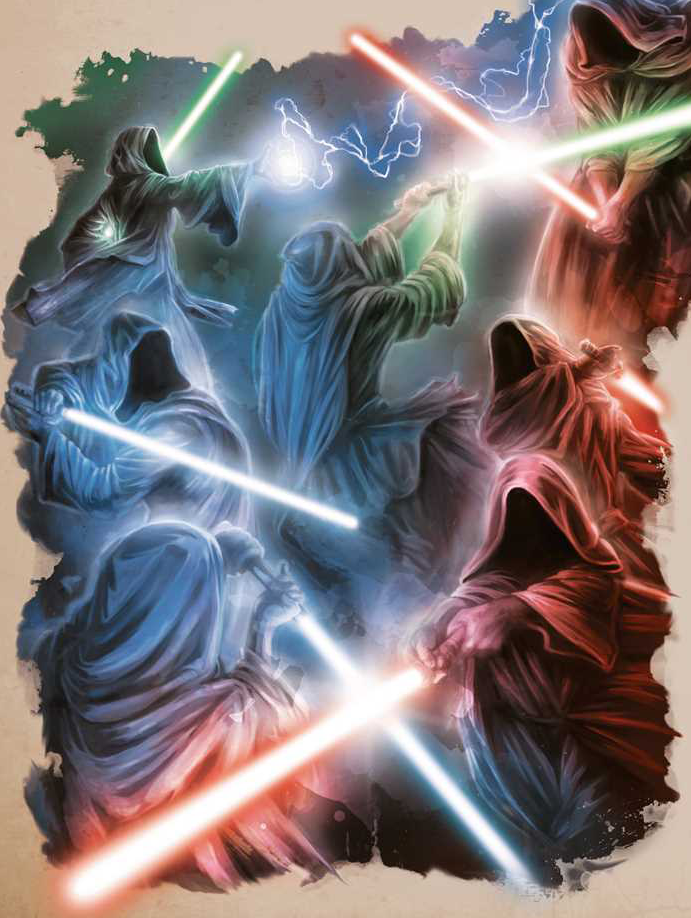
The Hundred-Year Darkness saw a schism within the Jedi Order, with the followers of the dark side becoming known as the Sith.
The Sith and the Jedi were once considered "brothers" in the Force prior to the Hundred-Year Darkness, from which the Sith Order was born. A rogue Jedi had come to believe that the true power of the Force lay not in contemplation and passivity, and instead sought abandon and strength through the dark side of the Force. The Jedi High Council at the time balked at this new direction, and the fallen Jedi was cast out of the Order's ranks. In spite of his banishment, the outcast gained followers to his new order. The power-hungry Sith sought to control the galaxy and opposed the Jedi, against whom they waged a series of wars which brought destruction to many worlds, including the Sith homeworld of Moraband, which the Sith were eventually forced to abandon. On another occasion, the Jedi Order and the Sith fought a battle on the planet Takodana. These wars also saw the construction of ancient superweapons powered by giant kyber crystals which possessed the power to destroy entire planets. These weapons, along with the crystals, were destroyed and a thousand years later believed by many Jedi to be merely legends.
About five-thousand years before the Battle of Yavin, the Order eventually came to be headquartered at Coruscant, wherein they built a Temple that would pose as their main hub for thousands of generations. Underneath the structure lay buried an ancient Sith shrine, the inherent power of which was believed by the contemporary Jedi to have been neutralized and successfully capped. In truth, that power had seeped upward and outward since its entombment, infiltrating the hallways and rooms above, and weakening the Jedi Order for millennia without their knowledge.
The Jedi Knights protected the galaxy as the guardians of peace and justice since the time of the Old Republic.
It was during this time that the Jedi Order came into the service of what would be later called the Old Republic. Promising to uphold its ideals, the Jedi fought to maintain peace and freedom. When the Old Republic outlawed slavery, the Jedi set about to free those held, notably under the Zygerrian Slave Empire. The Jedi declared war on Zygerrians, whose economic success had resulted from enslaving beings from all corners of the galaxy before selling them at auctions. The Jedi Order managed to put an end to their practices, destroying their empire and exiling them to their homeworld, Zygerria. The Zygerrians developed a fierce hatred for the Jedi as a result.
Conflicts also arose between the Jedi and the inhabitants of the world of Mandalore who had rapidly developed into a warlike culture in which strength was valued above all else. Their beliefs of continual warfare went contrary to the Jedi's mission of protecting the weak, they quickly mobilized to stop the destructive Mandalorians from expanding in the galaxy. The constant warfare was a strain and, as the Old Republic crumbled, the Mandalorian warriors sacked the Jedi Temple on Coruscant, an event during which Pre Vizsla's ancestors stole the Darksaber.
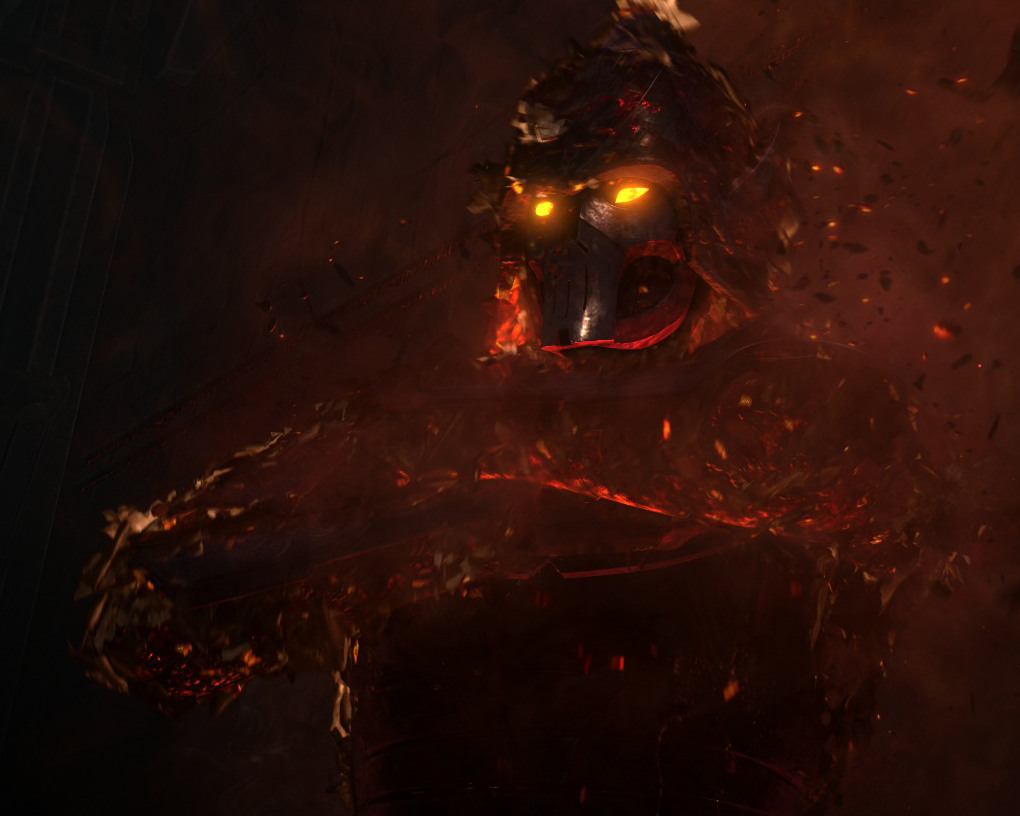
Though defeated by the Jedi, the Sith would survive for centuries as a result of Darth Bane's reforms.
Prior to 1032 BBY, the galaxy entered an era known as the Dark Age. During this time the Jedi-Sith War occurred. Early on in the war, the Sith attacked and captured Coruscant and with it the Jedi Temple. Towards the end of the war the Jedi reclaimed the Republic capital and their temple during the liberation of Coruscant.
Even as the Old Republic collapsed, the Jedi emerged victorious from their wars with the Sith. In their constant thirst for power, the Sith had weakened themselves through infighting, which allowed the Jedi to defeat the weakened Sith. Unbeknownst to the Jedi at the time, Darth Bane remained as the sole surviving Dark Lord of the Sith. As a result of the infighting that weakened the Sith, Jedi Knights were able to defeat the Sith at the Mid Rim planet Ruusan This confrontation nearly destroyed the ancient Sith Order, and forced the Sith to go into hiding. After this, Bane established the Rule of Two, declaring that the Sith thenceforth would consist of a Sith Master and a Sith apprentice. Bane's Rule of Two was discovered by the Jedi, but, as recounted by an imprint of later Jedi Elzar Mann, the Jedi Order believed they ended Bane's rule. His death falsely convinced his enemies that the Sith had truly died out.
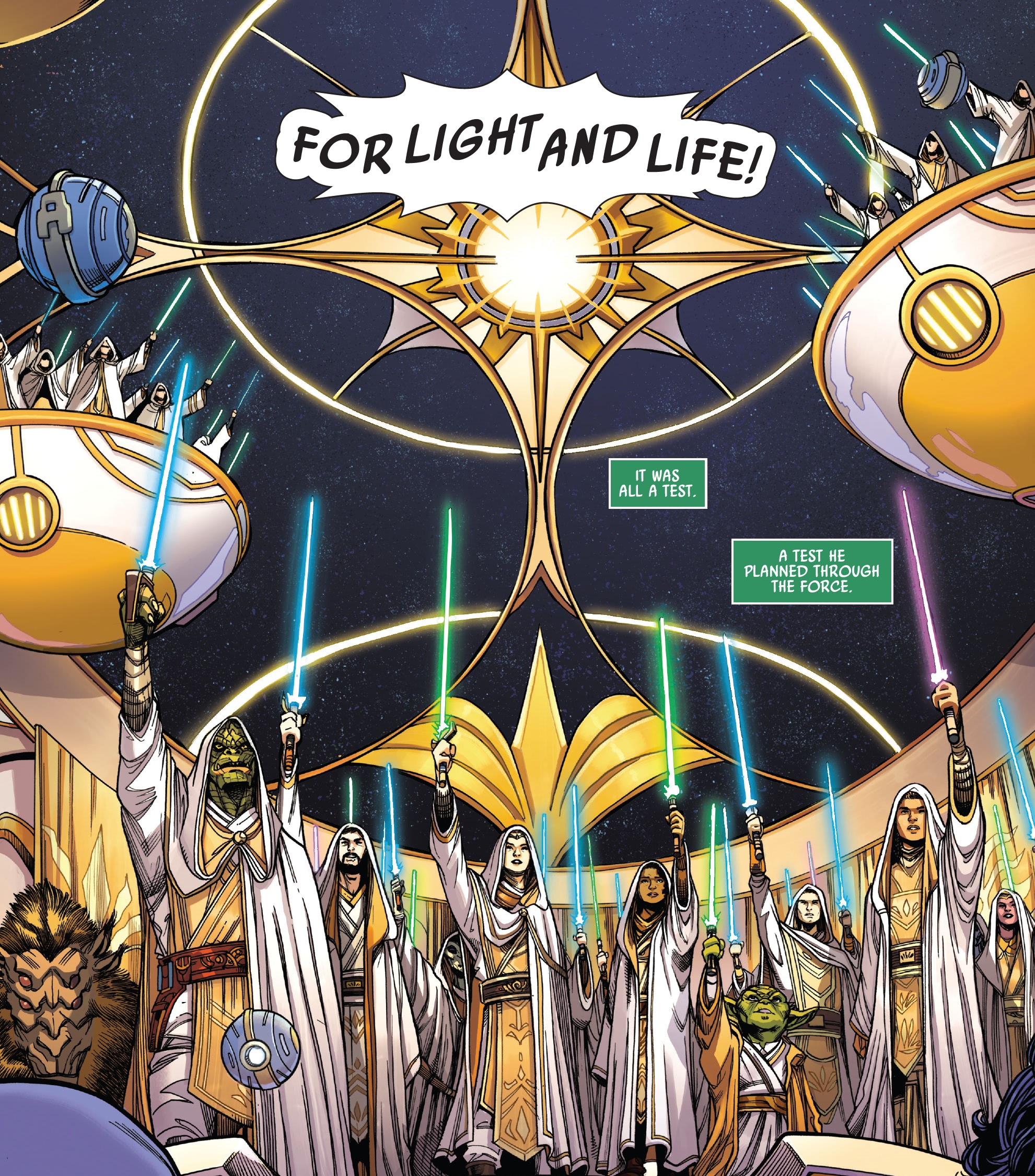
The Jedi Order reached its zenith of power in the High Republic Era.
The formation of the modern Galactic Republic heralded a new era of democracy, peace, and prosperity under the Galactic Senate and its elected leader, the Supreme Chancellor. Due to the Galactic Republic's demilitarization, the Jedi Order fully embraced their responsibilities as peacekeepers and rejected their roles as soldiers. Assisted by the Republic Judicials, the Jedi were responsible for maintaining law and order, namely by mediating conflicts to bring about peaceful solutions between various rival factions and planets, as well as serving as interplanetary law enforcement by pursuing wanted and dangerous criminals, pirates, and smugglers. While they ultimately collapsed, the Galactic Republic and the Jedi Order were able to preside over a thousand years of peace sustained without major warfare. One of their philosophical sayings was "the simplest gesture of kindness can fill a galaxy with hope."
In approximately 319 BBY, a copy of a third volume of the Aionomica was put forth. Though the existence of Aionomicum III had been rumored, this volume was later found to have been forged, causing a scandal. The Republic reached the zenith of its power and influence in a time remembered as the High Republic Era. During that time, the Republic relied heavily on the Jedi Order to render aid and settle disputes through peaceful methods. The Jedi worked alongside the Republic in its effort to expand into the Outer Rim Territories, believing it also presented a chance to meet new groups and let them know they could rely on the Jedi for help. However, an investigation into the stolen Rod of Seasons brought the Jedi into conflict with the Path of the Open Hand cult, which sought to use members of the Nameless species against Force users in the name of "freeing" the Force. The Jedi Order fought in the Republic-Togruta conflict.
Padawan Sav Malagán fought alongside pirate queen Maz Kanata's crew during the Battle of Jedha, a conflict instigated by the Path. Several Jedi teams investigating the Path converged on Dalna, where the Battle of Dalna exploded into being. The conflict had such a high death count it would devolve into massacre arguably caused by Republic and Jedi's close connection. All the same, much of the death was caused by the Path, which reformed into the war-like Path of the Closed Fist. During the battle, they also released Nameless that proved highly effective against the Jedi. Nonetheless, many Dalnans held the Jedi responsible for the massacre they remembered as the "Night of Sorrow." At the time, however, the defeat of the Path was seen as proof of the benefits of Jedi-Republic partnership; as reasoned by former Supreme Chancellor Kyong Greylark, current Chancellor Orlen Mollo, and Master Yoda, the Path's defeat was only possible thanks to the work between both organizations, with their alliance a strength they believed the galaxy could call on for centuries to come.
After the battle, Yoda and Jedi Master Creighton Sun also agreed to cover up all information on the Nameless, including keep details on the creatures out of the Jedi Archives, until they learned more about the mysterious threat. However, one Jedi who encountered the effects of the Nameless, Azlin Rell, abandoned the Order and attempted to learn more about the creatures. Driven mad from his fear and falling to the dark side, Rell still heard the song Shrii ka rai ka rai from his encounter with the Nameless on Dalna and kept the secrets he learned tucked away, yet still lost due to his insanity, in his mind.
Even though some of its members would come to question whether it was right to do so, with Jedi like Cohmac Vitus remembering the massacre on Dalna as proof that the Republic and Jedi could not always act as one force, the Jedi continued to work closely with the Republic, with each organization respecting the strengths of the other. Thus, the Jedi aided the Republic Defense Coalition and—through their outposts built to explore and help people in the wild portions of the Outer Rim—became the only group upholding justice in the Outer Rim Territories before the dedication of the Starlight Beacon. During the era, the Order's understanding of the Force was expanded thanks to the actions of Jedi Knight Elzar Mann, who liked to "experiment" with his Force techniques in ways that sometimes failed. Even though he never attempted such actions when lives were at stake, his experiments often meant he worked alone.
Despite the High Republic's supposed peace, the Jedi were suddenly faced with a crisis during the Great Hyperspace Disaster in the Hetzal system when the transport Legacy Run was destroyed in hyperspace, making its remains rain upon the system. Jedi Master Avar Kriss commanded the rescue operation, yet she learned via her Force bond to the other Jedi that the fragments raining upon the Hetzal system contained living beings, forcing them to begin rescue operations as well. Towards the end of the crisis, the Jedi worked together—ultimately being joined in the Force by members of their Order who were even further away—to push a fragment containing liquid Tibanna past the system's R-class star. Their successful rescue of the system was broadcasted across the Outer Rim and even reached the Republic's inner planets. Unknown to the Jedi, the disaster had been masterminded by Eye of the Nihil, Marchion Ro, who wanted revenge on the Jedi due to past events involving their Order, his family, and an artifact that controlled a being known as the Great Leveler, which was a member of the Nameless species and thus could overwhelm Jedi and other Force-sensitives.
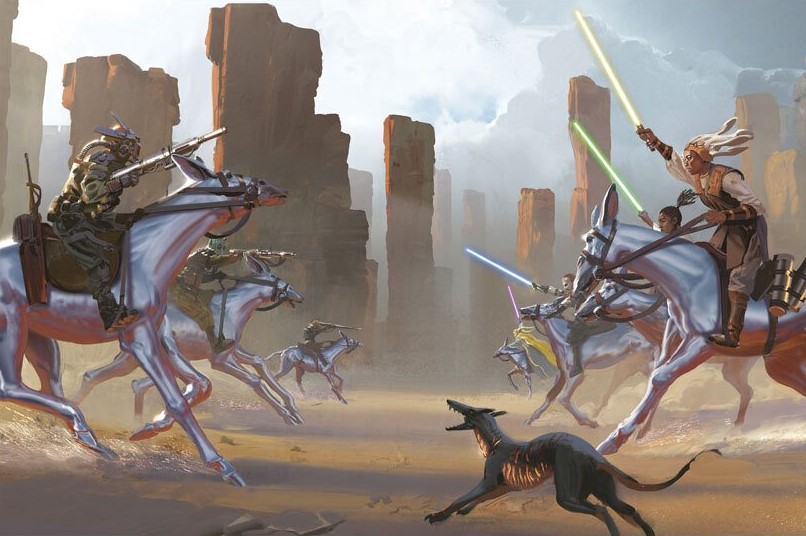
The Nihil disrupted the peace of the High Republic Era by waging a conflict with the Jedi Order and the Galactic Republic.
While Ro was not one to share details on what had exactly happened, his ancestors, Yana Ro and Marda Ro, had been part of the Path, who were remembered as "the faithful" by later Ros. As the Ros later remembered, the Path fought the Jedi because of their differing opinions on "balance" and believed the Jedi were leading the galaxy towards its destruction. However, the Path was beaten back, with their religion mostly falling out of favor as time went by. Inheriting the family goal of revenge and the title of "Eye" after his father Asgar was murdered, Ro plotted to reform the Nihil raiders into a unified force he could use for his ends and to beat back the expanding Republic. Additionally, the remains of the Legacy Run continued to rain upon Outer Rim systems as Emergences, forcing the Republic to blockade hyperspace routes and making the Jedi Council realize the Jedi would be needed in the Outer Rim more than normal. In time, the Order began to battle the Nihil, only for Ro to cement his control over the raiders after the Battle of Kur.
The Republic underestimated the Nihil until the massive attack on Valo, where the raiders cut down Jedi and civilian alike amid the Valo Republic Fair, which was supposed to be Chancellor Soh's show of unity for the Republic. When the Jedi launched a counterattack through the Battle of Grizal, Ro unleashed the Great Leveler, which petrified Jedi Master Loden Greatstorm, leaving the Jedi to realize their enemy had a weapon they did not yet understand. The Republic and Jedi Order grew closer during the Nihil conflict, with Soh and her aides even continually trying to become part of the Jedi High Council's meetings. As debate on how involved with the Republic they needed to become spread across the Order, many Jedi expressed worry that the Order's focus was at risk of moving to politics and war. Vitus was one such Jedi who questioned how much the Order actually owed the Republic, even though he agreed the Nihil were a serious threat, while his Padawan Reath Silas saw both sides to the debate.
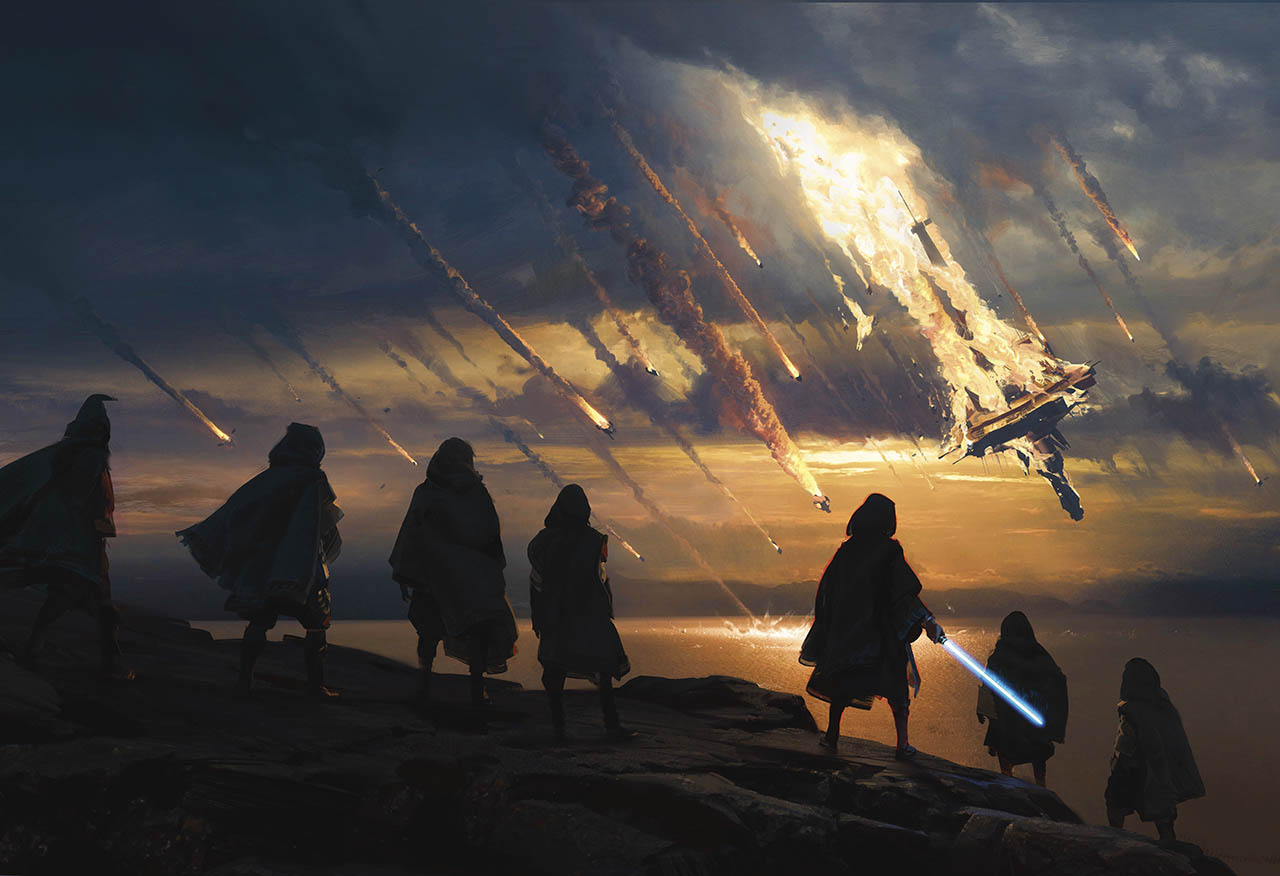
Starlight Beacon was destroyed during the conflict between the Jedi Order and the Nihil.
As the conflict and bloodshed carried on across the Galactic Frontier, more and more Jedi fell in battle against the Nihil, who the Jedi came to see were ruthless enemies who lacked any form of honor. Many Jedi had trouble adapting to the newly war-torn Outer Rim they needed to serve in. With it even coming to seem like acting only as peacekeepers was a recipe for defeat, Vitus came to believed the galaxy had grown to become a different place than the type the Jedi Order was made for and refused to finch in battle. After Ro unleashed more Nameless during the destruction of Starlight Beacon, the Jedi Order's reputation took a hit when it ordered a mass recall of its members back to Coruscant; while Grand Master Pra-Tre Veter argued the Jedi needed to retreat until they could learn how to fight the Nameless, some Republic officials took it as the Jedi running away in fear.
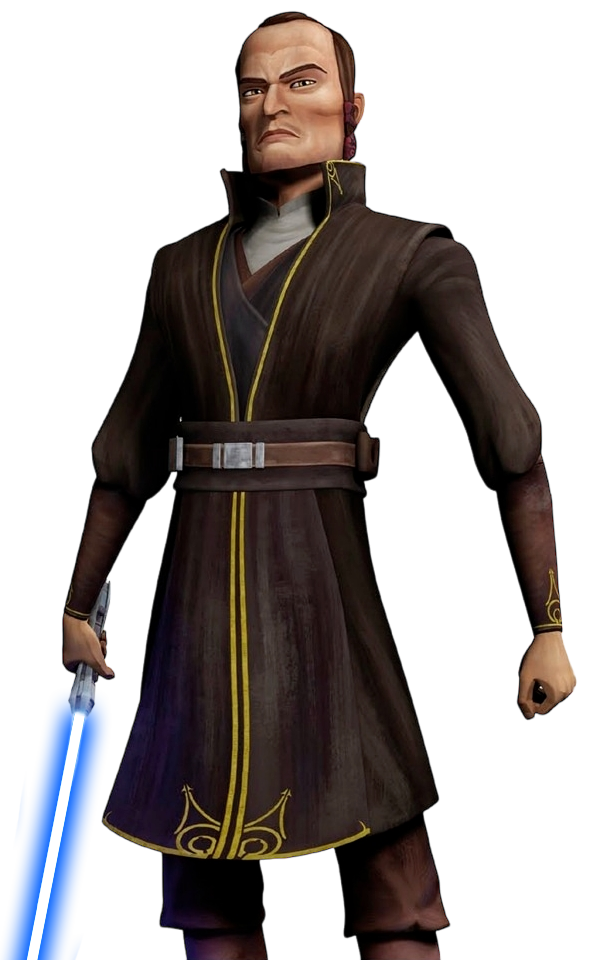
Premonitions of a galactic conflict caused Jedi Master Sifo-Dyas to commission the creation of a clone army.
Prior to the Invasion of Naboo, Jedi Master Sifo-Dyas served on the Jedi High Council until he was removed from its ranks for advocating the mobilization of a Republic Military to defend the galaxy. Through the Force, Sifo-Dyas predicted a galactic conflict but the High Council at the time considered his views radical. Certain in the accuracy of his Force visions, Sifo-Dyas secretly commissioned the inhabitants of Kamino to grow an army of clone soldiers—genetically engineered for growth acceleration and increased docility—for the Republic. Unbeknownst to Sifo-Dyas, however, his plan factored into the designs of the Sith. For a millennium, generations of Sith Lords plotted revenge against the Jedi Order after the death of Darth Bane. Darth Sidious, who had become a Sith Master after betraying and murdering his master Darth Plagueis, was the culmination of the Grand Plan that would see the Sith returned to a position of dominance over the galaxy.
After serving as an unwitting pawn for the Sith, Sifo-Dyas was betrayed by his childhood friend, the Jedi Master Count Dooku, who had him assassinated by the Pyke Syndicate at the behest of Sidious. Disillusioned with the Jedi Order, yet also ambitious for power, Dooku rejected the light side and became a Sith Lord, adopting the moniker of Darth Tyranus, and replacing Darth Maul as the Sith apprentice of Darth Sidious.
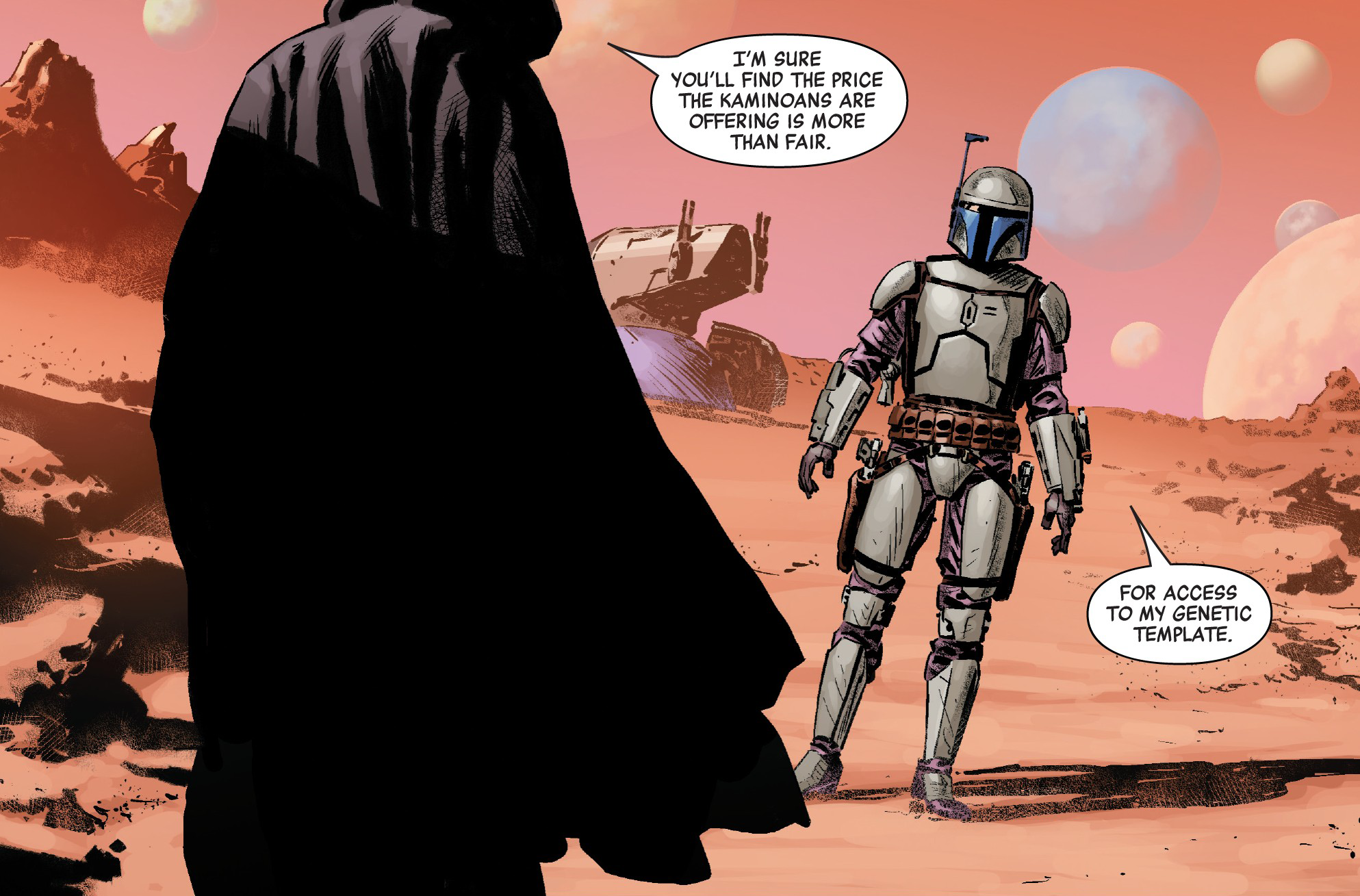
From the shadows, the Sith controlled the creation of the clone army.
The Sith guided the creation of the clone troopers after Sifo-Dyas' death, covertly taking control of the army and its Kaminoan developers. Tyranus maintained secret contact with two officials of the Kaminoan government, Prime Minister Lama Su and the Chief Medical Scientist Doctor Nala Se, who were supplied with behavioral modification biochips to ensure the clones' compliance with their Sith programming. The chips were implanted in the brain of every clone trooper during the early stage of their development; Sifo-Dyas, who originally thought of the chip, intended for it to be a safeguard against rogue Jedi, but Tyranus and Sidious retooled the chip. Tyranus deceived the Kaminoans into believing Sifo-Dyas' intention. However, the biochip's true purpose was to guarantee that the clones would carry out Order 66, a secret protocol that was integral to the destruction of the Jedi Order.
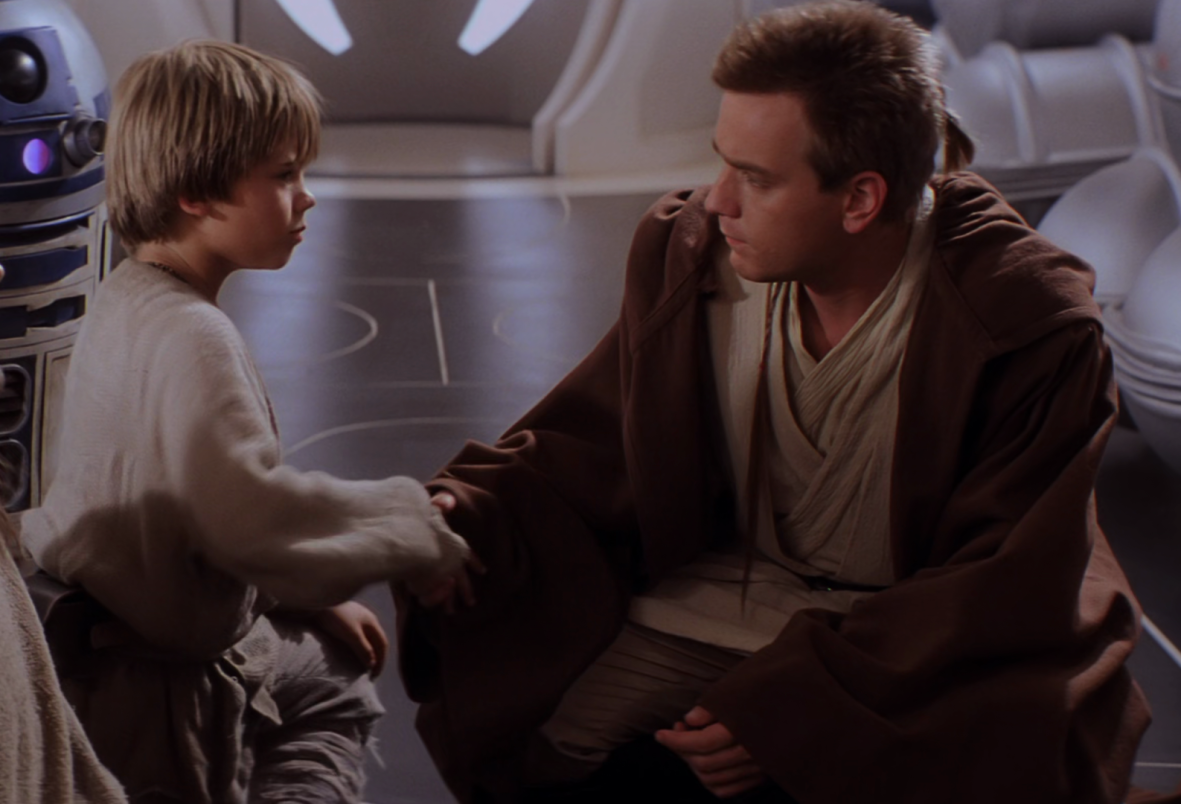
Anakin Skywalker was the Chosen One discovered by the Jedi in the late Republic Era.
In 32 BBY, Supreme Chancellor Finis Valorum requested the Jedi Order's assistance in negotiating a dispute that resulted in the Trade Federation's blockade of the planet Naboo. The High Council dispatched Jedi Master Qui-Gon Jinn and his Padawan, Obi-Wan Kenobi, to negotiate with the Trade Federation. However, Darth Sidious, whose public persona was Senator Sheev Palpatine of Naboo, insisted that the Trade Federation, which was under his sway, initiated an invasion of Naboo and overwhelmed the Royal Naboo Security Forces. Circumventing a trap by the Federation, Jinn and Kenobi were able to escape to Naboo and arrive in Theed in time to rescue the Naboo Queen, Padmé Amidala, who was being held captive by Federation forces. Together with the Queen's Handmaidens and her close security detail, the Jedi fled the planet but their ship was damaged in the escape, causing them to land on the desert planet of Tatooine.
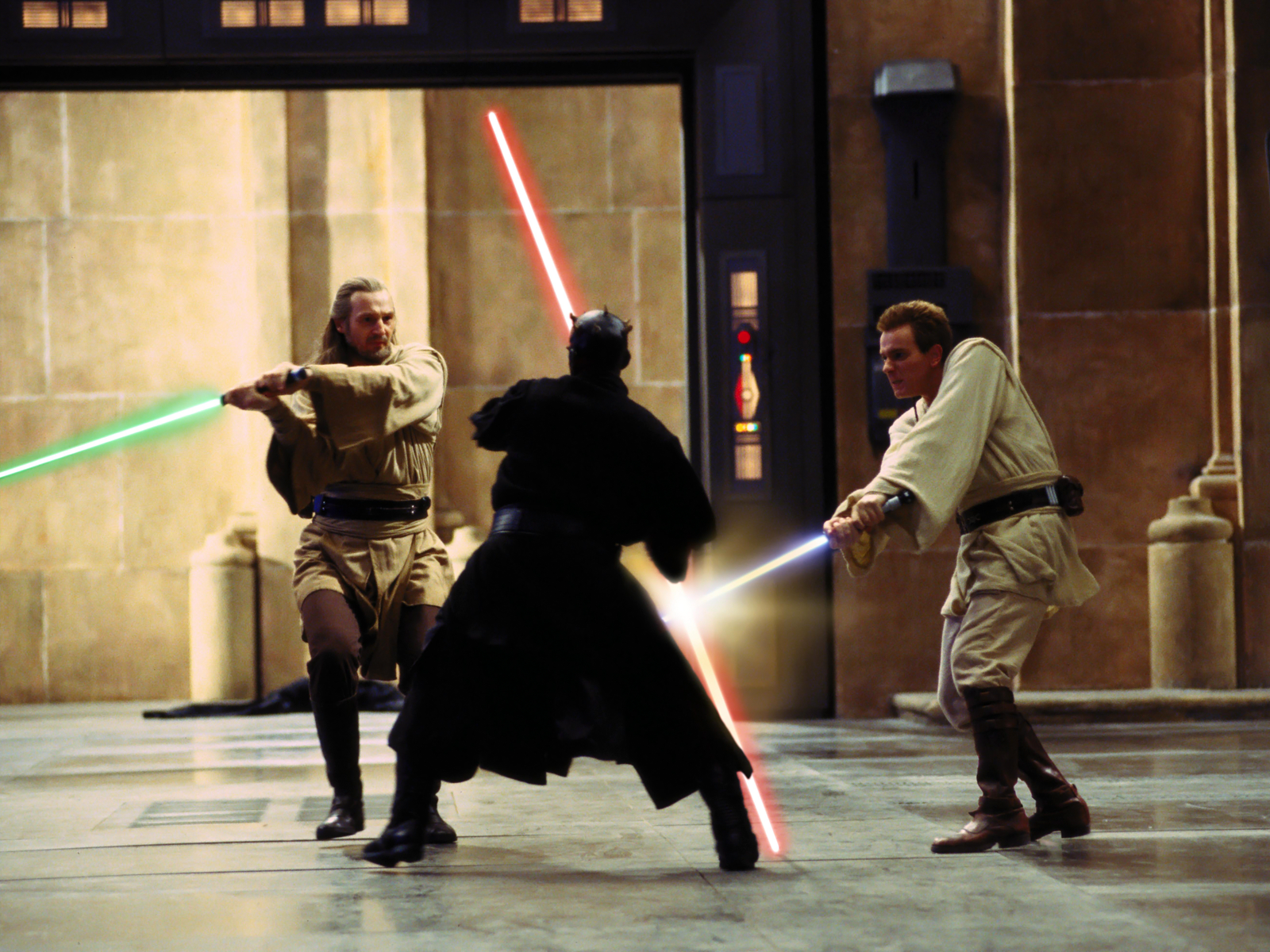
After a thousand years in hiding, the Sith revealed themselves to the Jedi during the Invasion of Naboo.
While stranded on Tatooine, the two Jedi discovered a young slave named Anakin Skywalker. Jinn believed Anakin to be the Chosen One, the one that would bring balance to the Force. By betting on the boy winning the Boonta Eve Classic, Jinn was able to secure both Skywalker's freedom and the needed parts to repair the Queen's ship to reach Coruscant. It was after this that Jinn was attacked by Darth Maul, apprentice to Darth Sidious, who had dispatched Maul to kill the Jedi. As the Jedi had believed the Sith to be extinct, Jinn was at first unsure of who Maul was except that he had been trained in lightsaber combat. Arriving at the Jedi Temple on Coruscant, the Council refused to induct Skywalker into the Order because, according to the the Code, he was too old. The Council then ordered Jinn and Kenobi to protect Queen Amidala on her return to Theed. At the same time, Amidala was deceived by Palpatine into calling for a Vote of No Confidence in Chancellor Valorum, which would eventually lead to the election of Palpatine to the chancellorship. Jinn and Kenobi then assisted Amidala and her forces during the ensuing battle against the Trade Federation, when Maul killed Jinn in combat, only for the Sith to be defeated by Kenobi. Given the status of Jedi Knight afterward, Kenobi took Skywalker as his apprentice, despite Yoda's reluctance, and the Jedi Order was left in the dark as to what the Sith's actions were for ten years. The Jedi were left unaware that they were being deceived by Palpatine, who was using his double identity to eventually complete the Sith's revenge by destroying the Jedi and taking over the Republic.
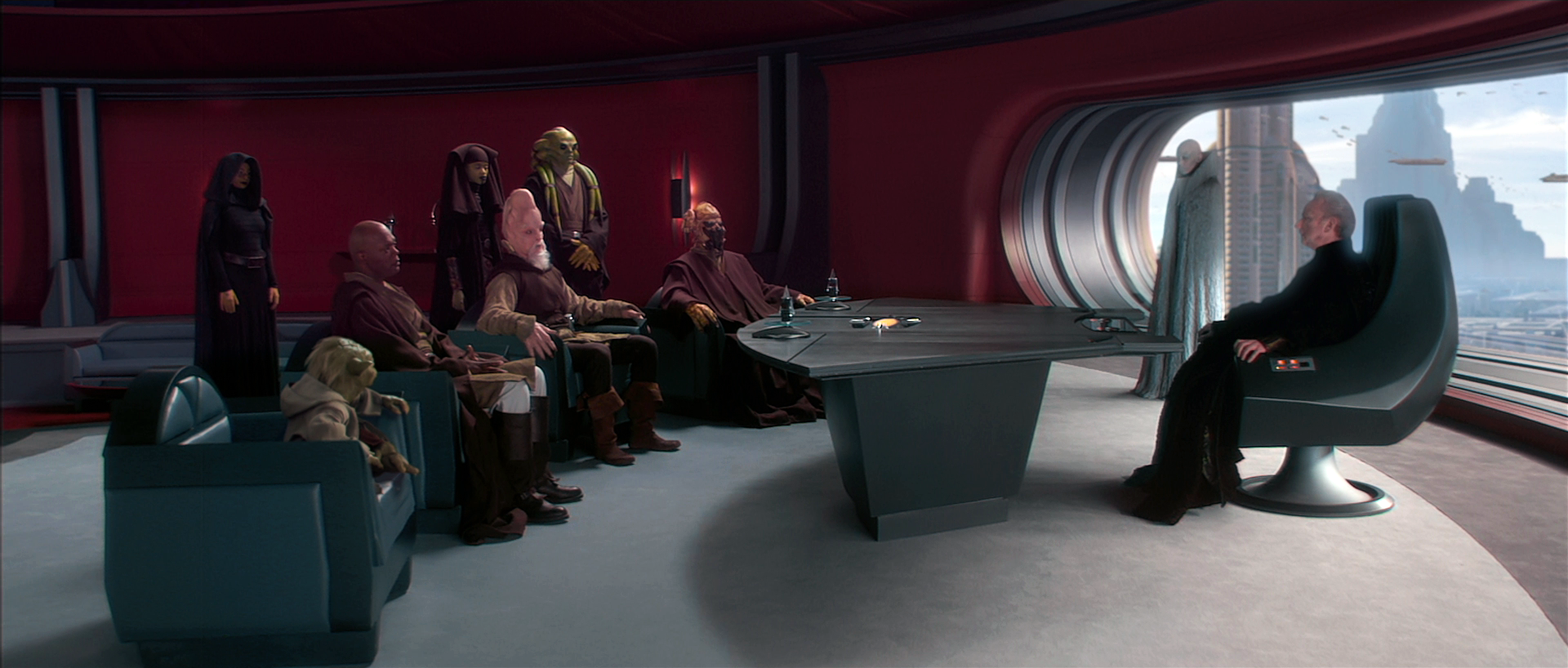
The Separatist Crisis threatened to end the era of peace established by the Republic and the Jedi.
Having broken all ties to the Jedi Order, secretly replacing Maul as Sidious' apprentice, Dooku was believed to be a mere "political idealist" by his peers at the Jedi Order. For eight years, Dooku was scarcely heard about until he staged a theatrical return to public life by delivering a rousing speech that condemned the Republic and essentially set the stage for the Separatist Crisis. At the same time, he fomented political turmoil in many worlds, including Ryloth, Kashyyyk, Sullust, and Onderon, or tried to convince their leaders to leave the Republic, as in Eriadu's case. Soon enough, Dooku became the face of the Confederacy of Independent Systems, convincing several thousand systems to leave the Republic.n
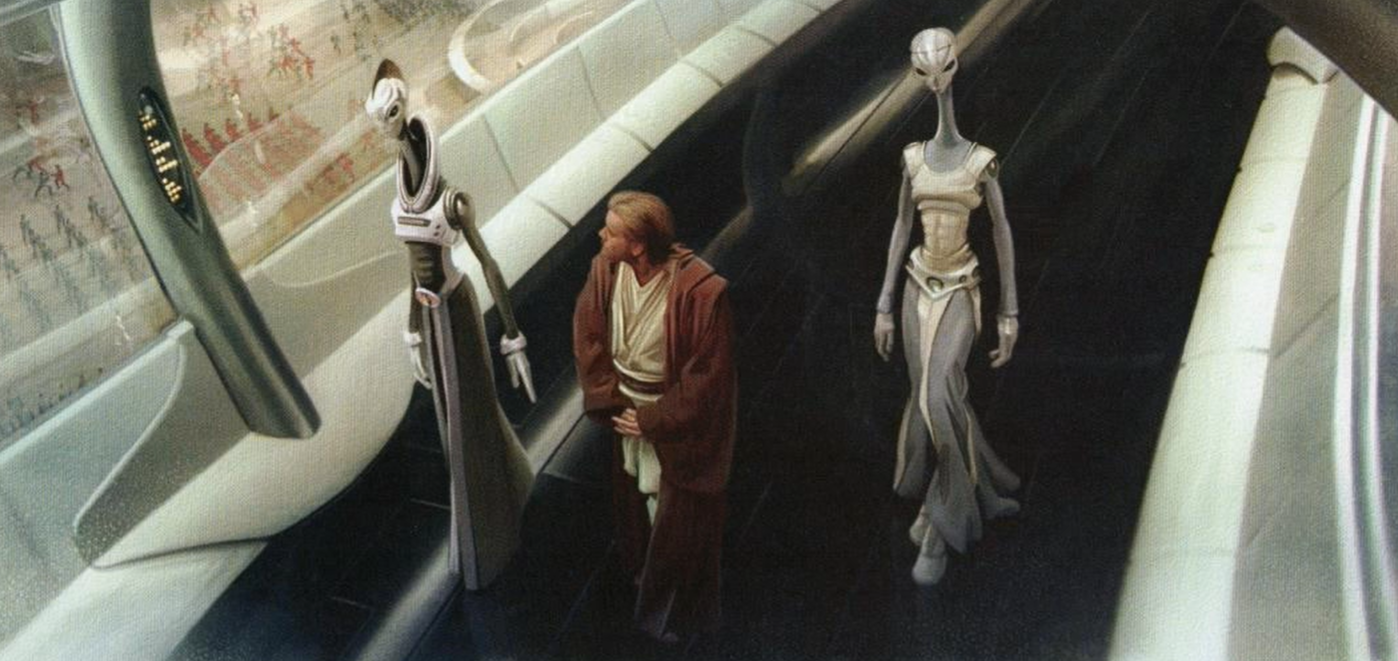
Jedi Knight Obi-Wan Kenobi journeyed to Kamino where he discovered the creation of a clone army.
The Jedi Order was unable to ensure the Republic's safety in the event of a war due to its limited numbers. The Republic lacked a standing army, while the mandate of the Jedi was to maintain order as peacekeepers instead of soldiers. Concerned by the growing number of star systems seceding from the Republic, the Senate debated the Military Creation Act. During the debate, a plot to assassinate Senator Amidala forced the Naboo senator to return to her homeworld with Padawan Anakin Skywalker serving as her bodyguard. The task of investigating the plot against Amidala was given to Skywalker's master, Jedi Knight Obi-Wan Kenobi, who tracked the assassin to the planet Kamino.
After discovering the Kaminoans' creation of the clone army at the behest of the late Jedi Master Sifo-Dyas, Kenobi deduced that the army's clone template, the bounty hunter Jango Fett, was the assassin who tried to kill Amidala. Jango and his cloned son, Boba Fett, fled from Kamino to escape interrogation by the Jedi. However, Kenobi followed the Fetts to Geonosis where he discovered the Separatist Droid Army, prompting the Senate to empower Chancellor Palpatine to unilaterally create the Grand Army of the Republic.
As the Republic prepared for war, Jedi Master Mace Windu led a Jedi assault team to rescue Kenobi on Geonosis. The Jedi confronted the Separatists in the Geonosian Petranaki Arena, destroying many battle droids but also sustaining a large number of casualties, including Tan Yuster, Sar Labooda, and Coleman Trebor. The remaining Jedi were evacuated from the arena by the Republic clone army that arrived on Geonosis under the command of Grand Master Yoda.
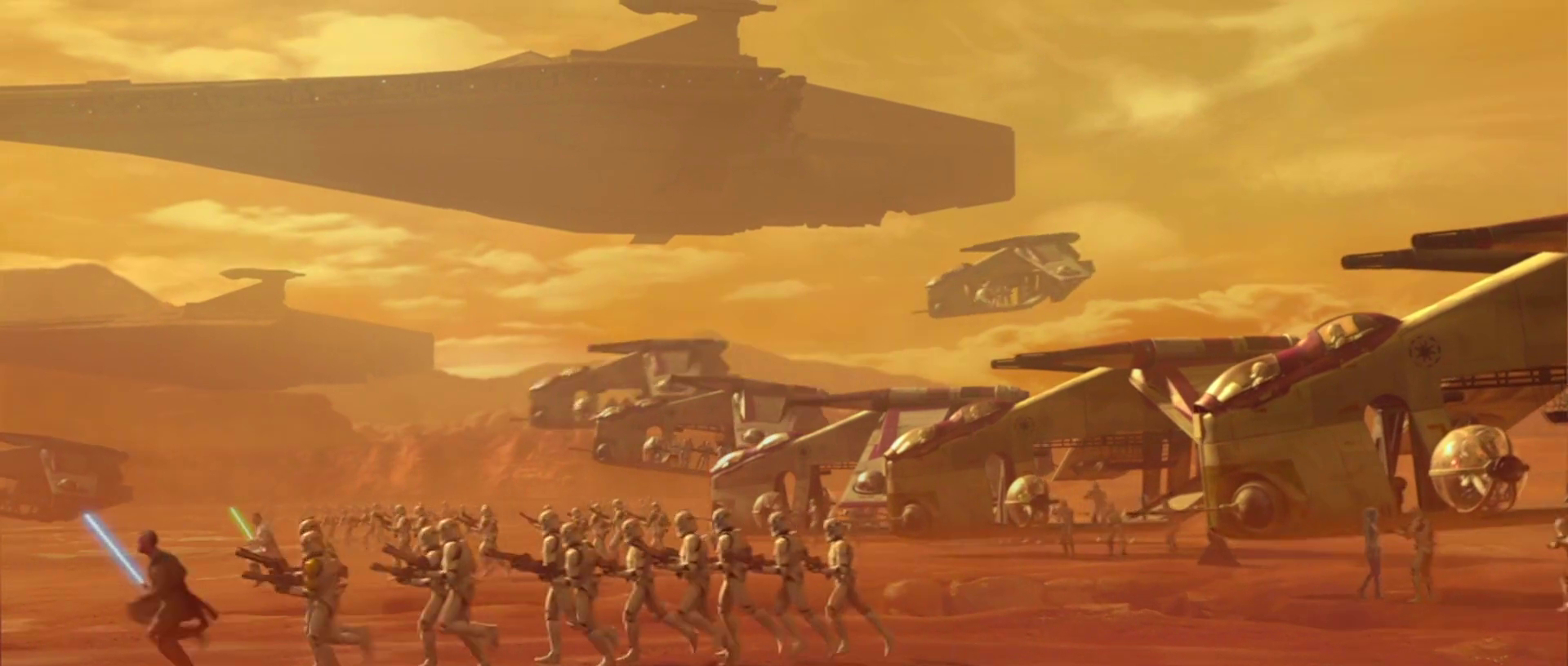
Through the combined efforts of Jedi and clones, the Republic defeated the Separatists in the first battle of the Clone Wars.
Along with the requisite LAAT gunships and AT-TE walkers, over eighty regiments of clone troopers engaged the droid army with the Jedi leading the charge. Although the Jedi had not yet received a formal commission in the newly formed Grand Army, the clones nonetheless complied with their orders. Windu, Kit Fisto, Aayla Secura, and other Jedi fought alongside their troops on the battlefield while Yoda was occupied with overseeing the Republic army's strategy from the forward command center. The Republic attack caught the Separatist leaders by surprise; despite their initial efforts to organize an effective counterattack, the Separatists ultimately retreated from Geonosis as the clones achieved ground and air supremacy under the skilled leadership of the Jedi High Council. Although the First Battle of Geonosis concluded as a victory for the Republic, Yoda lamented its outcome as the beginning of the Clone Wars.
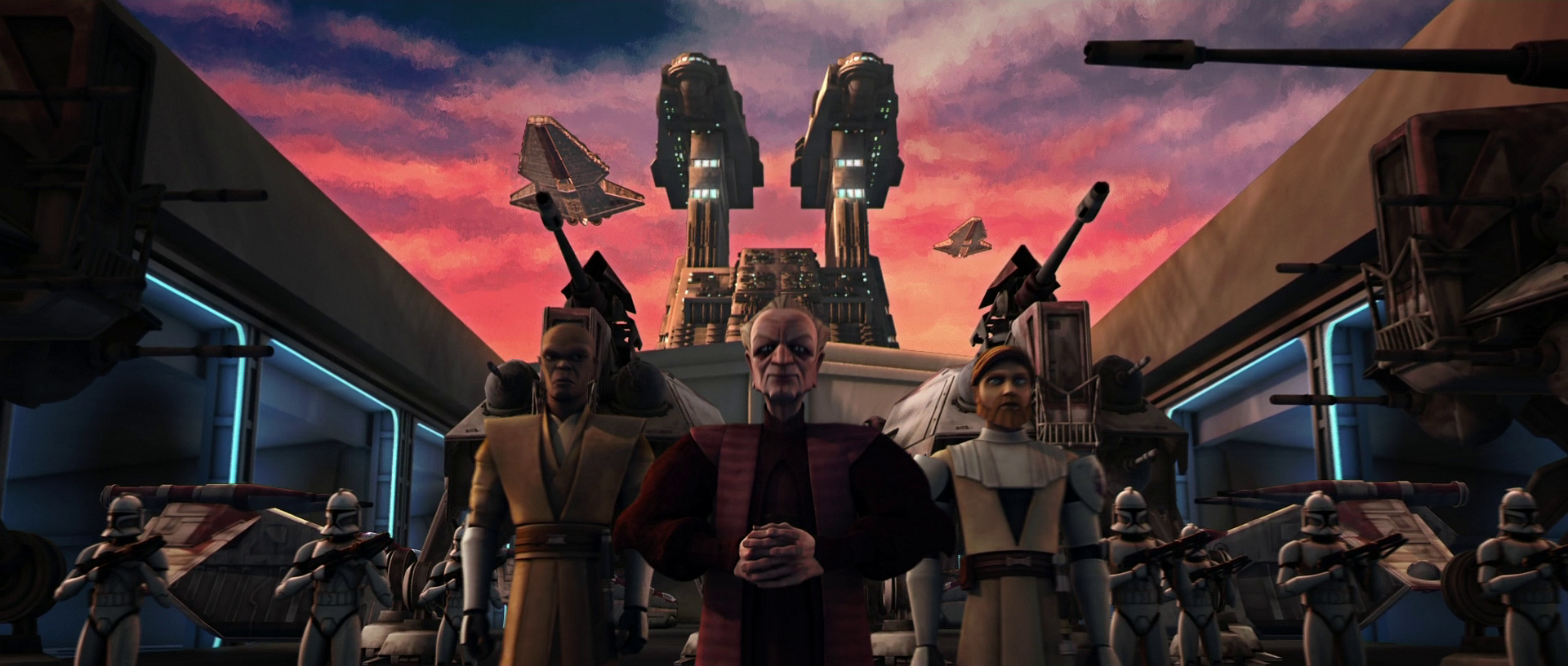
The advent of the Clone Wars forced the Jedi to lead the Grand Army of the Republic.
The aftermath of the battle on Geonosis saw the Jedi commissioned as officers of the Republic Military, with the military rank of Jedi General bestowed to Knights and Masters, and the rank of Jedi Commander to Padawans. The Jedi Military Integration Act formallized this and offically made the Jedi Order a part of the Republic Military.
The Order experienced division in its ranks at the onset of the Clone Wars with Prosset Dibs opposed to the Jedi's involvement in the Clone Wars. Although Mace Windu believed that the Jedi should strive to serve as an example by leading the Republic's soldiers on the battlefield, he was affected by the loss of Jedi lives early in the conflict nonetheless. Windu was troubled by the prospect of more Jedi dying as a result of the Order's decision to fight in the Clone Wars, but Yoda counseled his colleague to set aside his doubts and trust in the Force, acknowledging Windu for his wisdom and capable leadership.
Following the operation on Hissrich, Windu called on the High Council to grant clemency to Dibs whose opposition to the war led to his attempt to kill Windu. Despite his personal reservations, Windu's experience on Hissrich reminded him of the Jedi Order's commitment to safeguarding the lives of others. With his newfound resolve, Windu affirmed his belief that the Order had a moral responsibility to defend the citizens of the Republic as well as all beings throughout the galaxy.
During the Clone Wars, the Jedi were victorious on battlefronts across the galaxy, including Christophsis, Ryloth, and Umbara. In their capacity as leaders of the Grand Army of the Republic, the Jedi came to be seen as great warriors. Jedi Knight Anakin Skywalker, for example, was considered by some to be the greatest warrior of the Jedi Order.
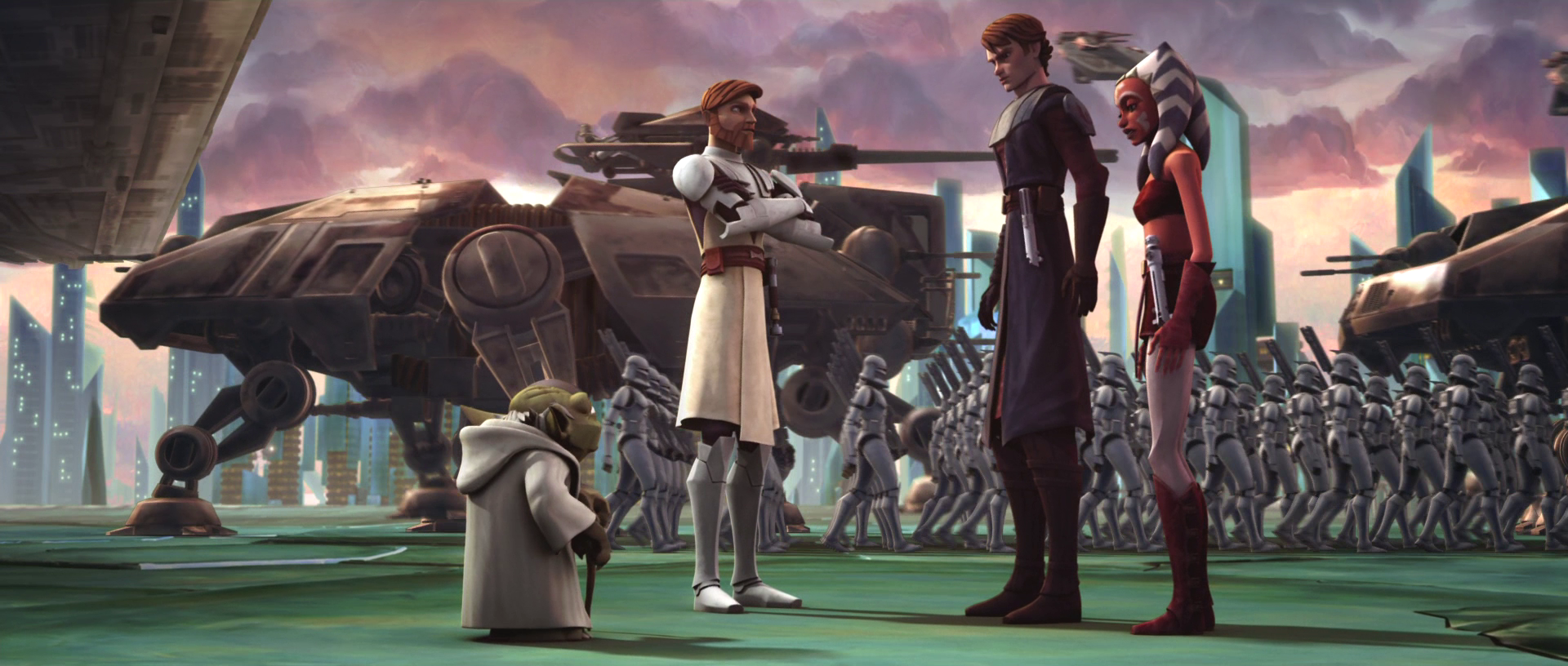
The Battle of Christophsis was an early victory for the Jedi-led forces of the Galactic Republic.
During the Battle of Christophsis, Clone Sergeant "Slick" was arrested as a spy for the Confederacy of Independent Systems. The sergeant claimed that he acted in the interests of the clones, whom he viewed as a slave army fighting for the Jedi and the Republic. However, the clone trooper officers who arrested him—Clone Commander CC-2224 "Cody" and Clone Captain CT-7567 "Rex"—questioned Slick's motives, noting how he betrayed the Republic for money and that his actions endangered clone lives. Although Slick succeeded in sabotaging much of the Republic's military equipment, Jedi Generals Obi-Wan Kenobi and Anakin Skywalker successfully led their battalions, respectively the 212th Attack Battalion and the 501st Legion, to victory over the Separatists on the Christophsian homeworld.
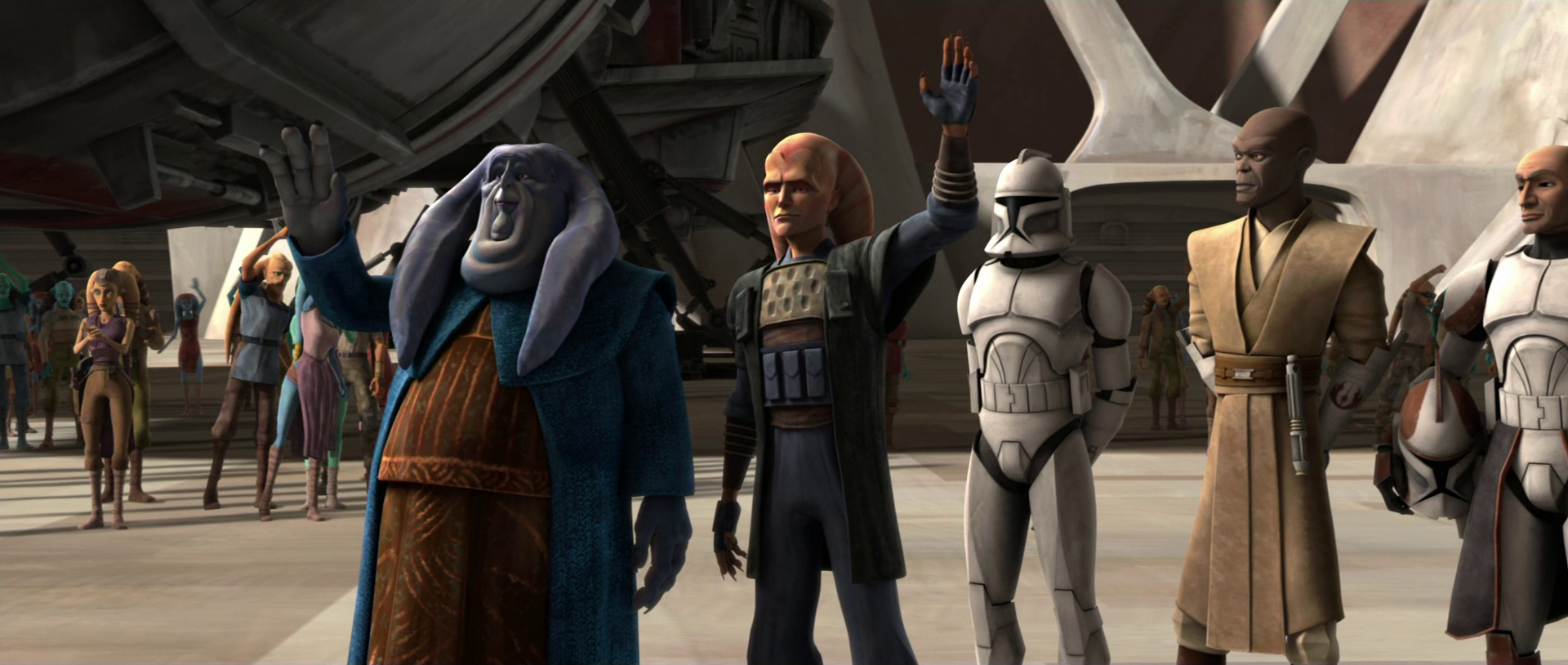
The Jedi's forces won the Battle of Ryloth with the support of the Twi'lek Resistance.
The Battle of Ryloth was a coordinated effort by the Republic to liberate the Twi'leks' homeworld from Separatist occupation. With the Jedi in command, the clone troopers mainly relied on using blaster rifles and Electro Magnetic Pulse grenades to reduce the level of destruction on Ryloth. Whereas the Separatists used the Twi'leks as living shields to deter a direct Republic attack, the Jedi and their clones were careful to avoid causing civilian casualties. During the final phase of the invasion, General Windu endeavored to take the capital city of Lessu with the support of the Twi'lek Resistance led by Cham Syndulla. Setting aside his dislike for politics, Windu used diplomacy to win the freedom fighter's help, convincing the rivals Syndulla and Senator Orn Free Taa to work together in common cause. The combined forces of Jedi, Republic, and Twi-leks captured the capital along with the Separatist Emir of Ryloth Wat Tambor.
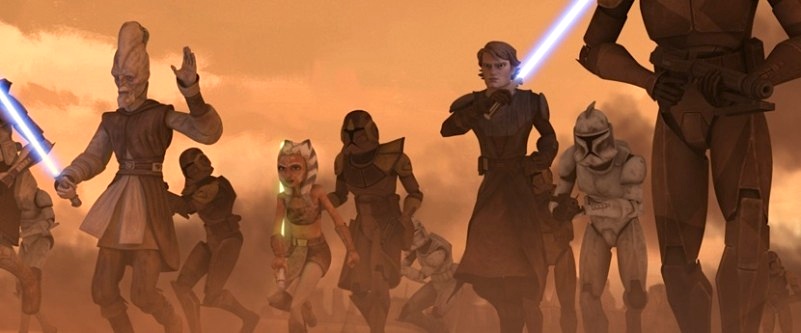
The Jedi successfully invaded Geonosis and destroyed the primary battle droid foundry.
The Second Battle of Geonosis occurred after the Geonosian resistance ousted the Republic's occupation force from their world. With the Separatists in control of the Geonosian droid factories once more, the Jedi returned to Geonosis at the head of an invasion force, having deemed Geonosis crucial to their efforts at restoring order to the Republic. The attack was led by Jedi Generals Ki-Adi-Mundi, Obi-Wan Kenobi, Luminara Unduli, and Anakin Skywalker. After the generals' forces converged at the Point Rain staging area, the primary droid foundry was destroyed by Jedi Commanders Barriss Offee and Ahsoka Tano. The capture of Archduke Poggle the Lesser subsequently ended Separatist control of Geonosis, thereby depriving the Confederacy military of further support against the Republic from Geonosis.
By the time of the Alderaan Refugee Conference, Padmé Amidala stated that over one hundred Jedi had been killed in the war. More Jedi were killed as the war continued; Jedi Master Even Piell died at the Battle of Lola Sayu; during the assault on Vizsla Keep 09, Count Dooku killed Jedi Master Tiplee. In addition to the casualties of war, the Jedi Order lost a few of its members to the dark side of the Force, such as Jedi Master Pong Krell and Padawan Barriss Offee.
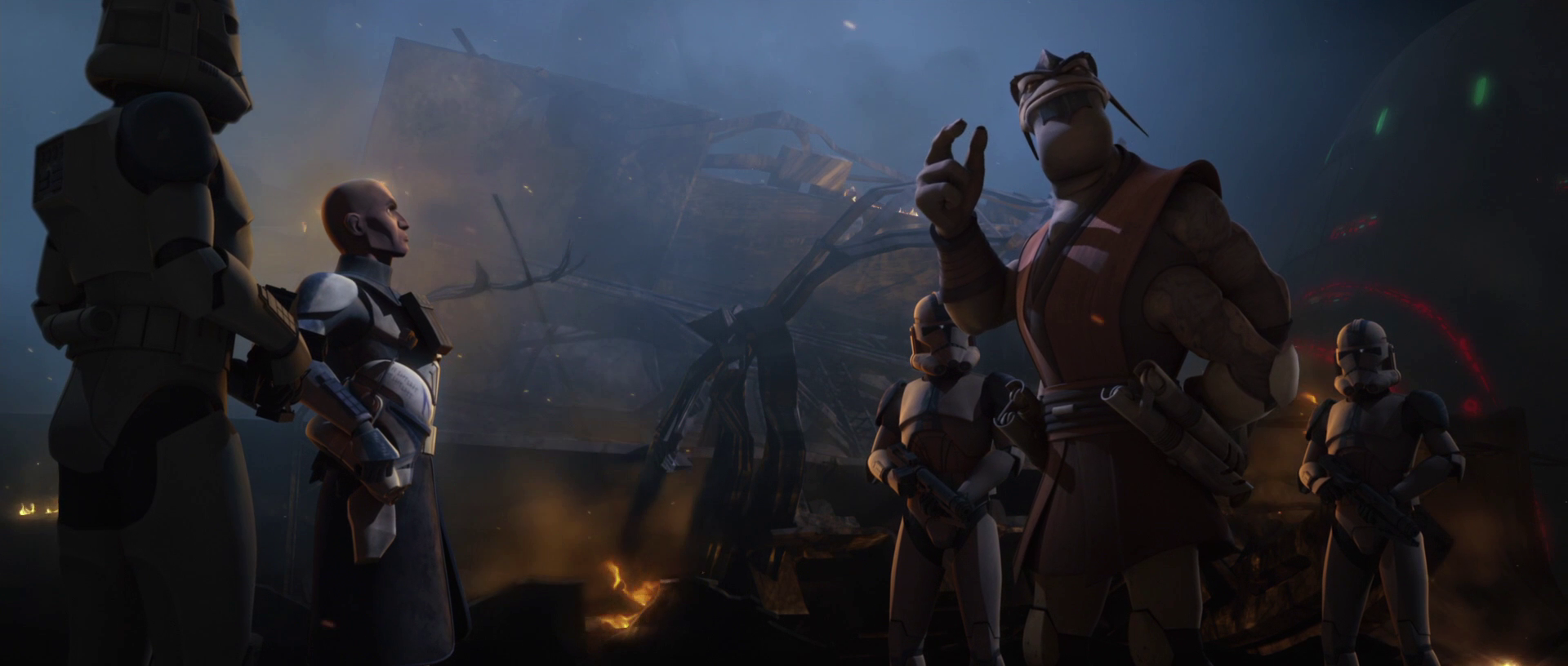
Jedi General Pong Krell assumed command of the 501st Legion during the Battle of Umbara.
Krell served in the Clone Wars as a successful Jedi General whose record reflected numerous victories for the Grand Army of the Republic. His command style resulted in high levels of clone trooper casualties; nevertheless, Krell was an acclaimed war hero by the time of the Battle of Umbara, during which he temporarily assumed command of the 501st Legion after Anakin Skywalker returned to Coruscant at the behest of the Jedi High Council and Chancellor Palpatine.
Though originally a Republic loyalist world at the onset of the Clone Wars, Umbara defected to the Separatists in the wake of Senator Mee Deechi's assassination. The Republic therefore invaded the Umbaran homeworld, precipitating the Battle of Umbara. By then, Krell had foreseen the rise of a New Order in the aftermath of the Clone Wars. Convinced that the Jedi Order would be defeated, Krell secretly turned against both the Order and the Republic. He sought to prove his new loyalties to Count Dooku by undermining the Republic's efforts to retake Umbara. However, Krell's plans ended when the 501st mutinied against the general's command. Krell was taken into custody after killing multiple clones while resisting arrest. Ultimately, the fallen Jedi Master was executed by one of his strongest supporters, Dogma, after admitting his betrayal of the Republic.
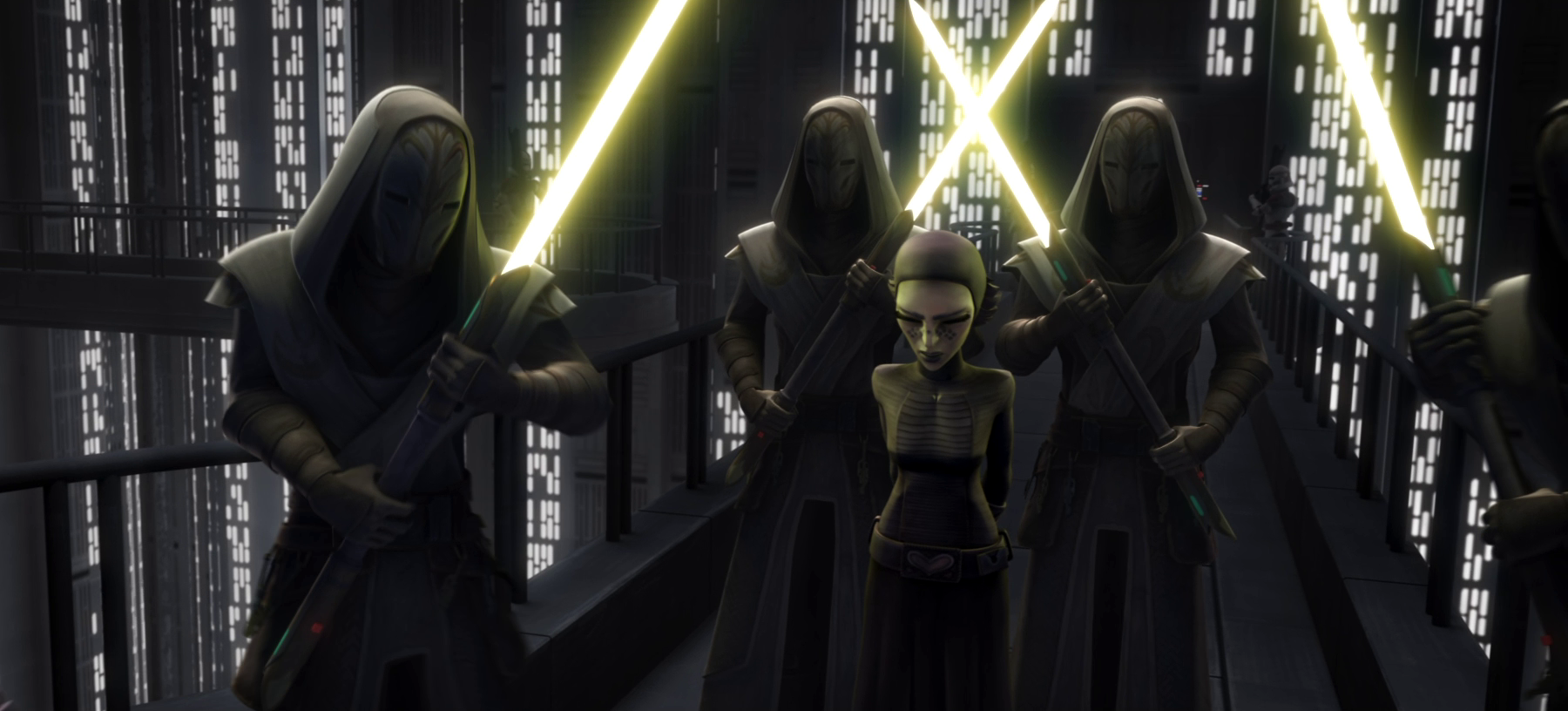
Barriss Offee was arrested for perpetrating of an attack on the Jedi Temple and conspiring to incriminate Ahsoka Tano.
Barriss Offee believed the Jedi had deviated from their course as peacekeepers and so arranged a bombing at the Jedi Temple, for which framed fellow Padawan Ahsoka Tano. Tano, in turn, left the Jedi Order unable to trust the Council after turning its back on her during her trial. Eventually, the High Council came to be aware of Dooku's hand in the creation of the clone army, and of the lies and mistrust that surrounded them, both inside the Temple and the Senate. Grand Master Yoda even foresaw that the Jedi would not win the Clone Wars, just as public support for the Jedi weakened due to their management of the conflict.
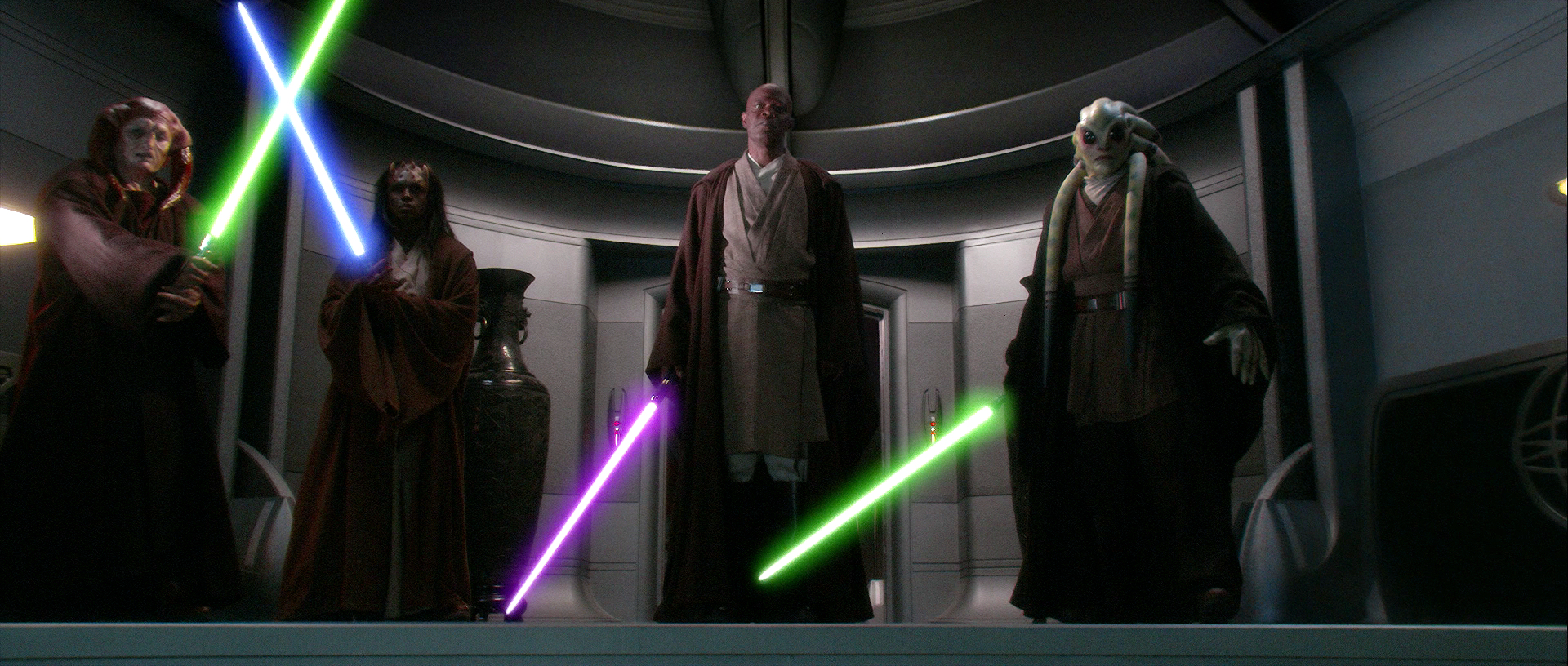
The High Council moved to arrest Supreme Chancellor Sheev Palpatine, revealed to be the Sith Lord Darth Sidious.
The war would come to an end in 19 BBY after Sidious betrayed and orchestrated Tyranus' death in the Battle of Coruscant in order to lure Skywalker to the dark side. The Jedi calculated a decisive Republic victory through the destruction of General Grievous, which was achieved by Obi-Wan Kenobi during the Battle of Utapau. However, Skywalker, whose turmoil clouded his judgment, learned that Palpatine was Sidious. Though he informed Windu of Palpatine's identity, Sidious resisted the Jedi's efforts to arrest him, killing three Jedi Masters—Kit Fisto, Agen Kolar, and Saesee Tiin—forcing Windu to duel the Dark Lord alone. Skywalker rushed to Palpatine's office as Windu and the chancellor fought, arriving moments after the Jedi champion disarmed the Sith Lord. Before Windu could kill Sidious, Skywalker betrayed him by severing his hand, which led to the Jedi Master's death. Believing Sidious had the power to save his secret wife, Padmé Amidala, Skywalker betrayed the Jedi and became Sidious' apprentice, and was given the name of Darth Vader.
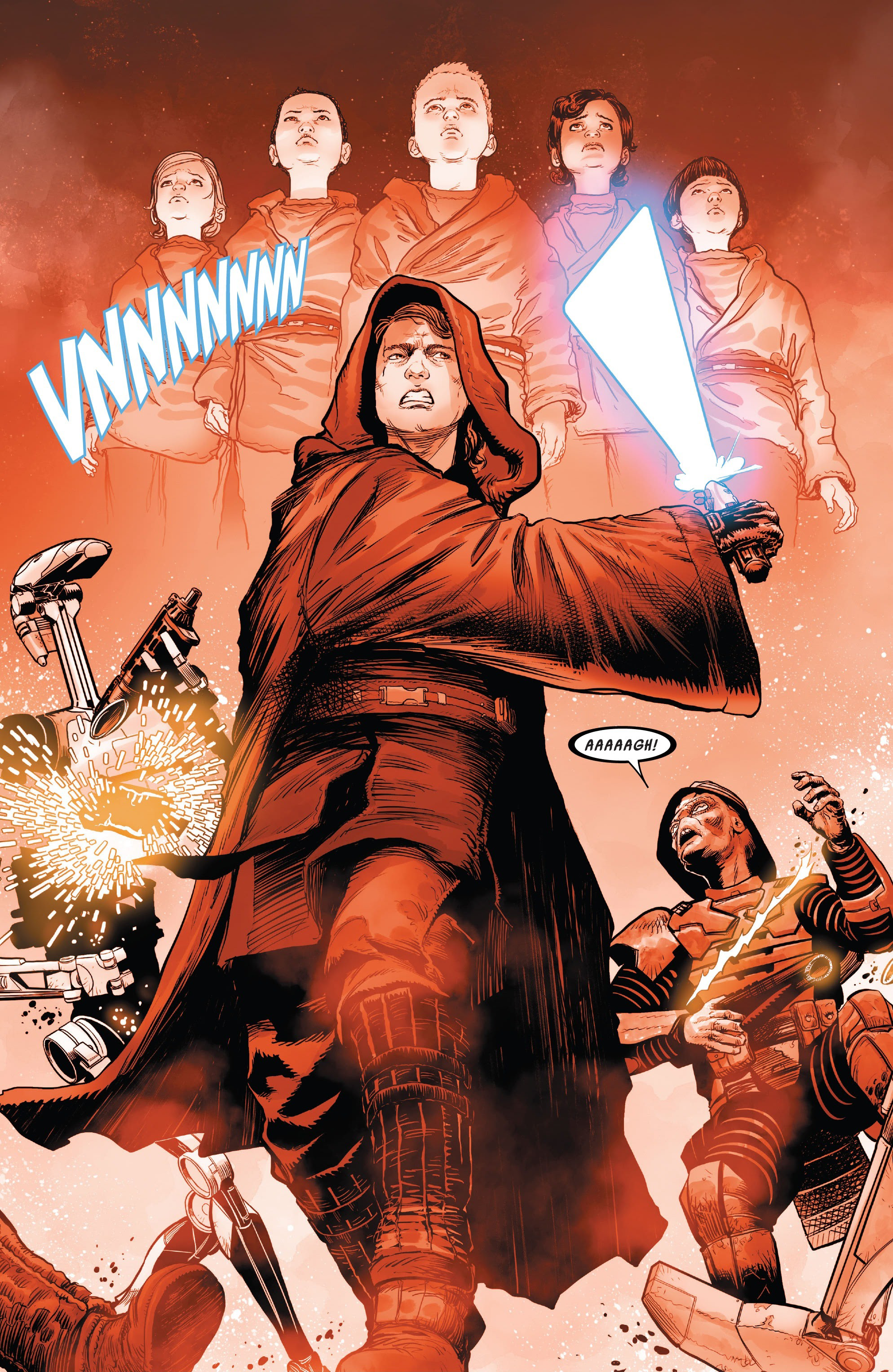
Converted to the dark side, Anakin Skywalker led the Great Jedi Purge as the Sith Lord Darth Vader.
Branding Windu's actions as treason, Palpatine declared the Jedi to be enemies of the Republic and sent Vader to oversee the siege of the Jedi Temple. As his new apprentice purged the Temple of its inhabitants, including the younglings, Sidious authorized his Clone Commanders to execute Order 66, thereby activating the biochips that programmed the clones to see the Jedi as traitors to the Republic. As a result, thousands of Jedi throughout the galaxy were betrayed and executed by their clones including Ki-Adi-Mundi on Mygeeto, Aayla Secura on Felucia, Plo Koon on Cato Neimoidia, Stass Allie on Saleucami, Depa Billaba on Kaller, and Jaro Tapal above Bracca.
Out of an estimated number of ten-thousand Jedi, just a few survived to see the proclamation of the New Order, marking the inception of the Galactic Empire and the rise of Palpatine as its Emperor. Survivors included Yoda, Obi-Wan Kenobi, Ahsoka Tano, Caleb Dume, Cal Kestis, Cere Junda and her Padawan Trilla Suduri, Taron Malicos, and at least initially, Uvell, Luminara Unduli, Oppo Rancisis, Eeth Koth, Coleman Kcaj, Jocasta Nu, Kirak Infil'a, Selrahc Eluos, Ka-Moon Kholi, Zubain Ankonori, Khandra, Mususiel, Nuhj, Ferren Barr, and possibly Quinlan Vos. During their self-imposed exile, Kenobi and Yoda, along with Senator Bail Organa, hid Vader's newborn children, the Force-sensitive twins Luke Skywalker and Leia Organa, from the Sith, hoping that in time they would become the key to the Jedi Order's future to stop the dark side.
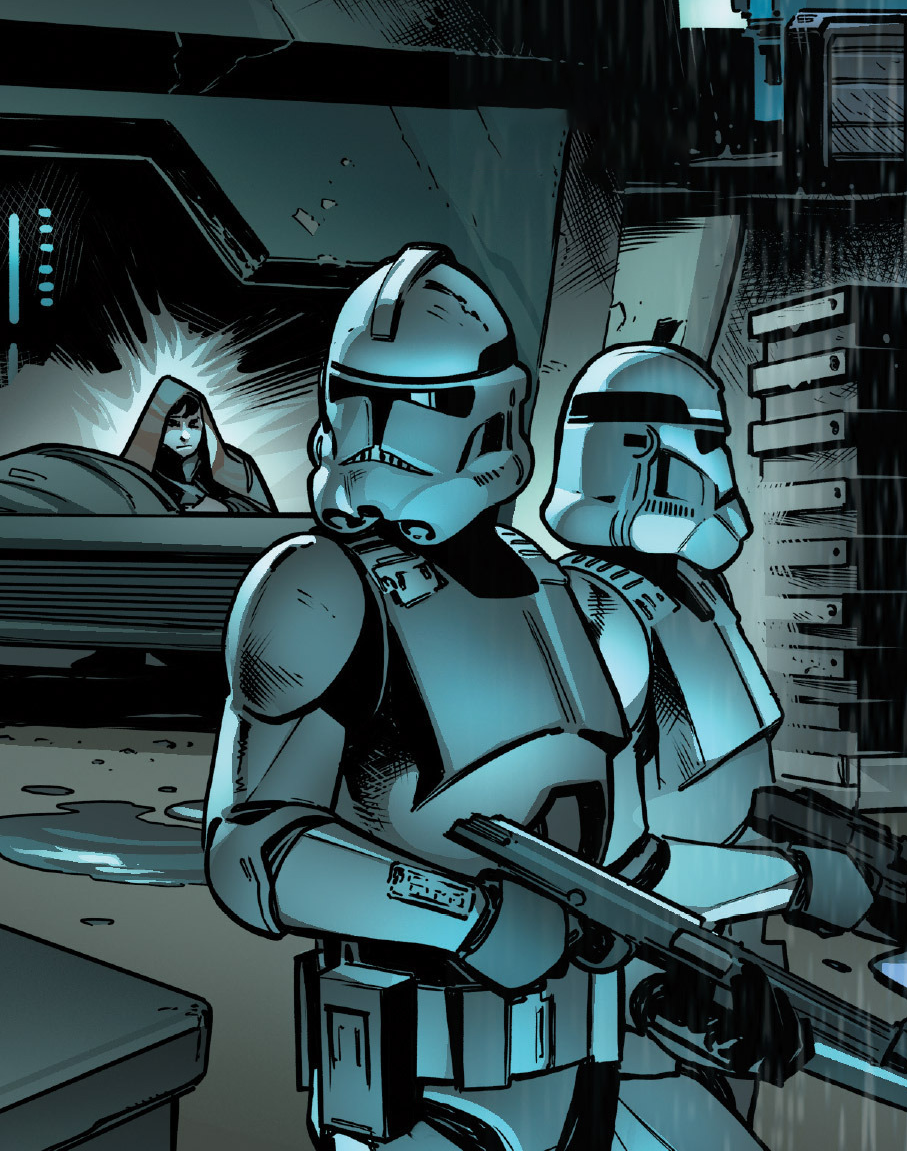
The Galactic Empire hunted the few remaining Jedi who survived the initial execution of Order 66.
Word about the supposed Jedi rebellion and the Order's destruction spread throughout the galactic population, and clone troopers were ordered to hunt down any Jedi survivors. According to Imperial Admiral Rae Sloane, the Jedi that had survived Order 66 made a last stand against a clone trooper charge led personally by the future war veteran and Shadow Council member Hodnar Borrum, who was known to hold disdain for the Force, on a mountain fortress on either or .
In addition to the Empire's suppression of all information relating to the Jedi, it was considered treasonous to be a Jedi or render assistance to a Jedi. Imperial laws also prohibited the use or study of the Force, resulting in the banning of educational studies concerning the Jedi. As a consequence, instructors who specialized in Jedi history lost their positions, including Sava Korin Pers and Sava Madelin Sun from the University of Bar'leth. Within five years of the Order's destruction, the Jedi were effectively erased from the collective consciousness in the galaxy due to the Great Jedi Purge, which also involved the systematic destruction of their temples and the unceasing, extensive hunts carried out by the Inquisitorius.
Jedi survivors that were captured were taken to Mustafar for interrogation and execution, as well as the Spire on Stygeon Prime, wherein the body of Luminara Unduli was preserved to lure out any surviving Jedi. Among the last reservoirs of knowledge of the Order were Antron Bach's vault in an abandoned colony, created at Uvell's behest, and Grakkus the Hutt's private collection on Nar Shaddaa. Safeguarding holocrons, lightsabers, journals, archives, and other artifacts, they partially preserved the teachings of the fallen Order. The surviving Jedi Nedriss Narr and Vanzell Mar-Klar attempted to train new younglings in a secret temple.
For nearly twenty years, the Empire was able to expand without opposition of a disbanded Jedi Order. A few of its former members, however, stayed true to their code of honor and continued to fight the Empire's injustice, albeit in different ways. Though former Padawan Ahsoka Tano had become disillusioned by the Council's actions and no longer identified as a Jedi, she came into contact with Bail Organa from Alderaan, with whom she worked to coordinate the efforts of a rebellion under the codename "Fulcrum," fifteen years after the fall of the Republic.
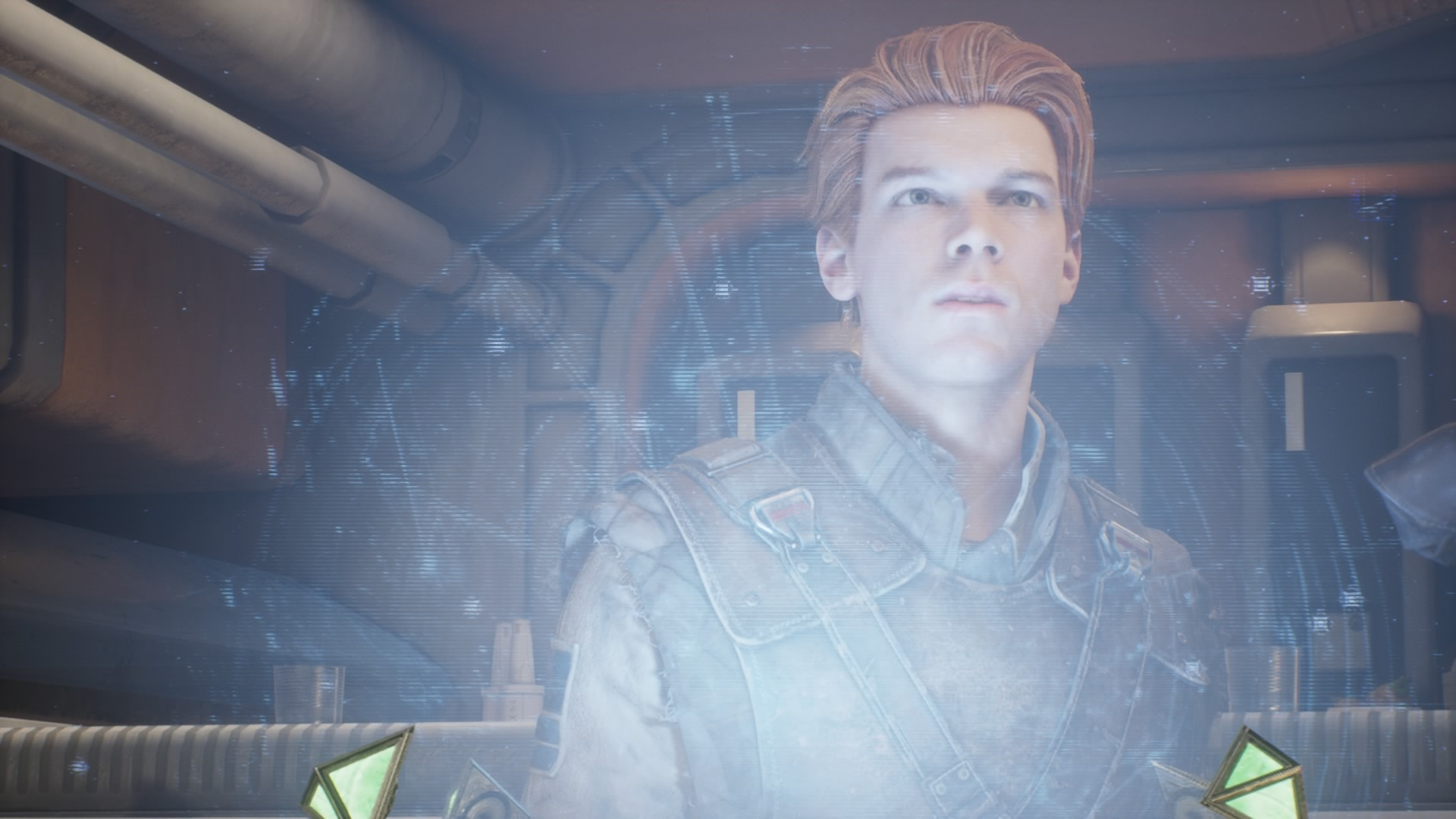
Having survived the execution of Order 66, Padawan Cal Kestis endeavored to resurrect the fallen Jedi Order.
Five years after the rise of the Empire and the destruction of the Jedi Order, there was an attempt to bring the Order back. Padawan Cal Kestis, who had been hiding on Bracca since Order 66, was recruited by the former Jedi Knight Cere Junda, who believed that the return of the Jedi Order was the best option to defeat the Empire. To accomplish this, they sought to recover a holocron that had been hidden on the planet Bogano by Jedi Master Eno Cordova. This holocron contained a list of the locations of Force-sensitive children across the galaxy.
After scouring ancient ruins for clues left behind by the extinct Zeffo civilization, Kestis succeeded in unlocking the Vault that contained the holocron, but the artifact was taken by the Second Sister, an Inquisitor who had been Junda's Padawan before the Purge. Junda proclaimed Kestis a Jedi Knight, and together they pursued the Second Sister to the Fortress Inquisitorius on the ocean moon Nur. They succeeded in retrieving the holocron from the Second Sister, who was executed by Darth Vader. The Dark Lord overpowered both Jedi, wounded Kestis for refusing to surrender the holocron, and goaded Junda to embrace the dark side. Ultimately, though, Kestis and Junda managed to escape from Vader with their allies' help. Despite Kestis' commitment to the restoration of the Jedi Order, the young Jedi Knight destroyed the holocron to protect the Force-sensitive younglings, entrusting their fate to the will of the Force.
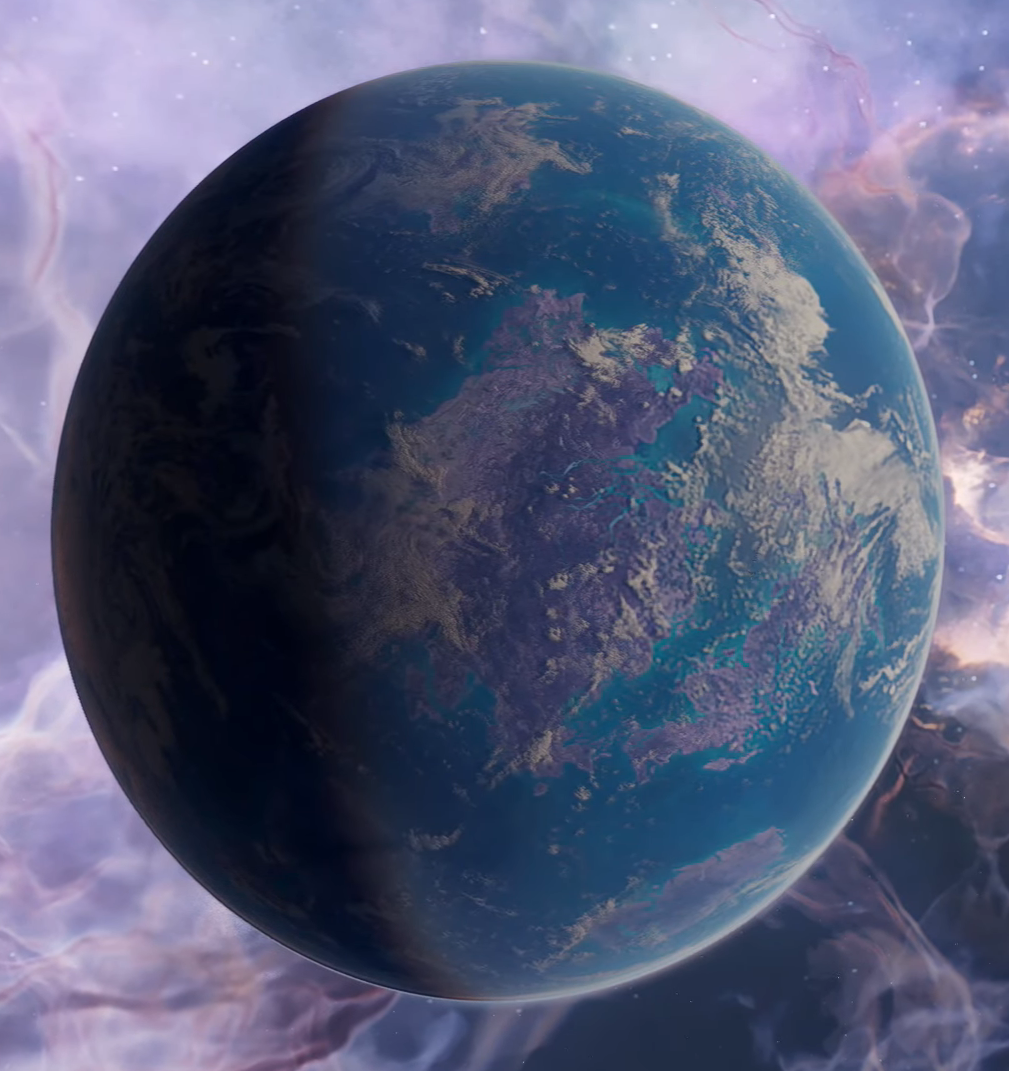
Hidden in the deadly Koboh Abyss nebula, Tanalorr was a world that was abandoned by the Jedi Order.
Over the five years following the holocron's destruction, Kestis has become an extremely important target for the Empire, having attracted the attention of not only the Inquisitorius, but the ISB as well. In 9 BBY, on the planet Koboh, Kestis encountered something from the Jedi's golden age. Kestis encountered the Jedi Dagan Gera, who has been preserved in bacta since the days of the High Republic. Kestis freed the old Jedi and asked for his help in his fight against the Empire. However, Gera fell out with the Jedi Order, who he believed had betrayed him because the Jedi had given up on Tanalorr, a hard-to-reach world Dagan had become obsessed with, after an attack by the Nihil. Gera fell to the dark side and bled the kyber crystal from his lightsaber, starting a duel with Kestis afterwards. Dagan escaped with the help of his old ally, the Gen'Dai Rayvis, and intended to return to Tanalorr and create an army led by Force users trained by himself to fight the Empire. However, due to the clouded view of Gera by the dark side, Kestis opposed his plan. Along with Bode Akuna, Kestis killed Dagan and obtained the compass that would guide them to Tanalorr, a place that Kestis intended to transform into a refuge for those persecuted by the Empire.
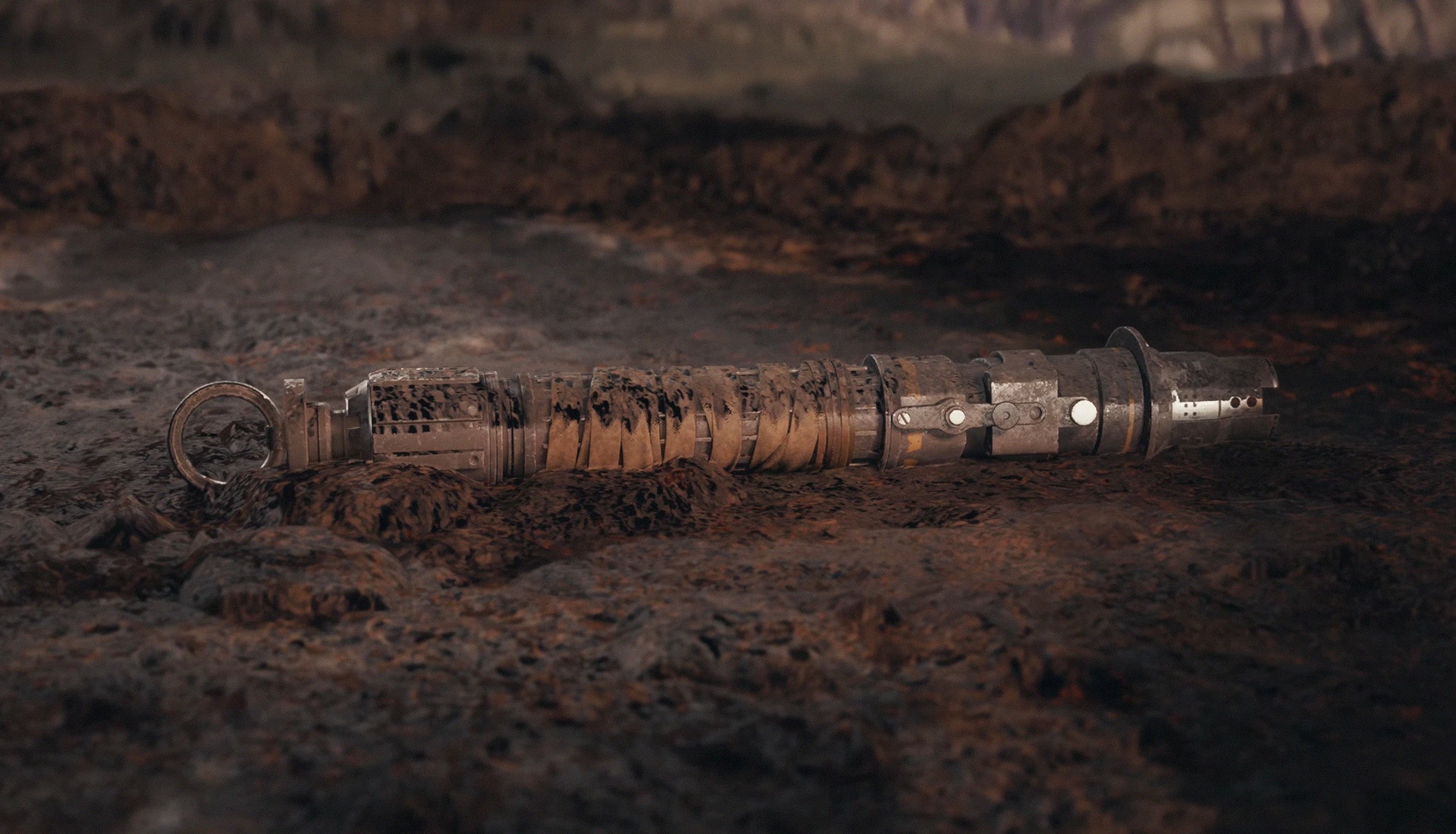
Cere Junda's death left Jedi Cal Kestis determined to build something that would outlast the Empire.
However, the compass was stolen by Akuna, who was an ISB's spy and a survivor of the Jedi Purge. Akuna intended to flee to Tanalorr with he daughter so that they could live free from the Empire forever, which, in he opinion, Kestis' intentions for Tanalorr jeopardized. Kestis followed Akuna to Tanalorr, and along with he ally, the Nightsister Merrin, slew him. Kestis and his friends took in Bode's daughter and held a Jedi funeral for Akuna, Cere Junda, and Eno Cordova, who were trying to restore knowledge from the Jedi archives and were killed due to Akuna stealing the compass. With the compass in their possession, Kestis and his allies began to prepare Tanalorr for use in the Hidden Path's operations.
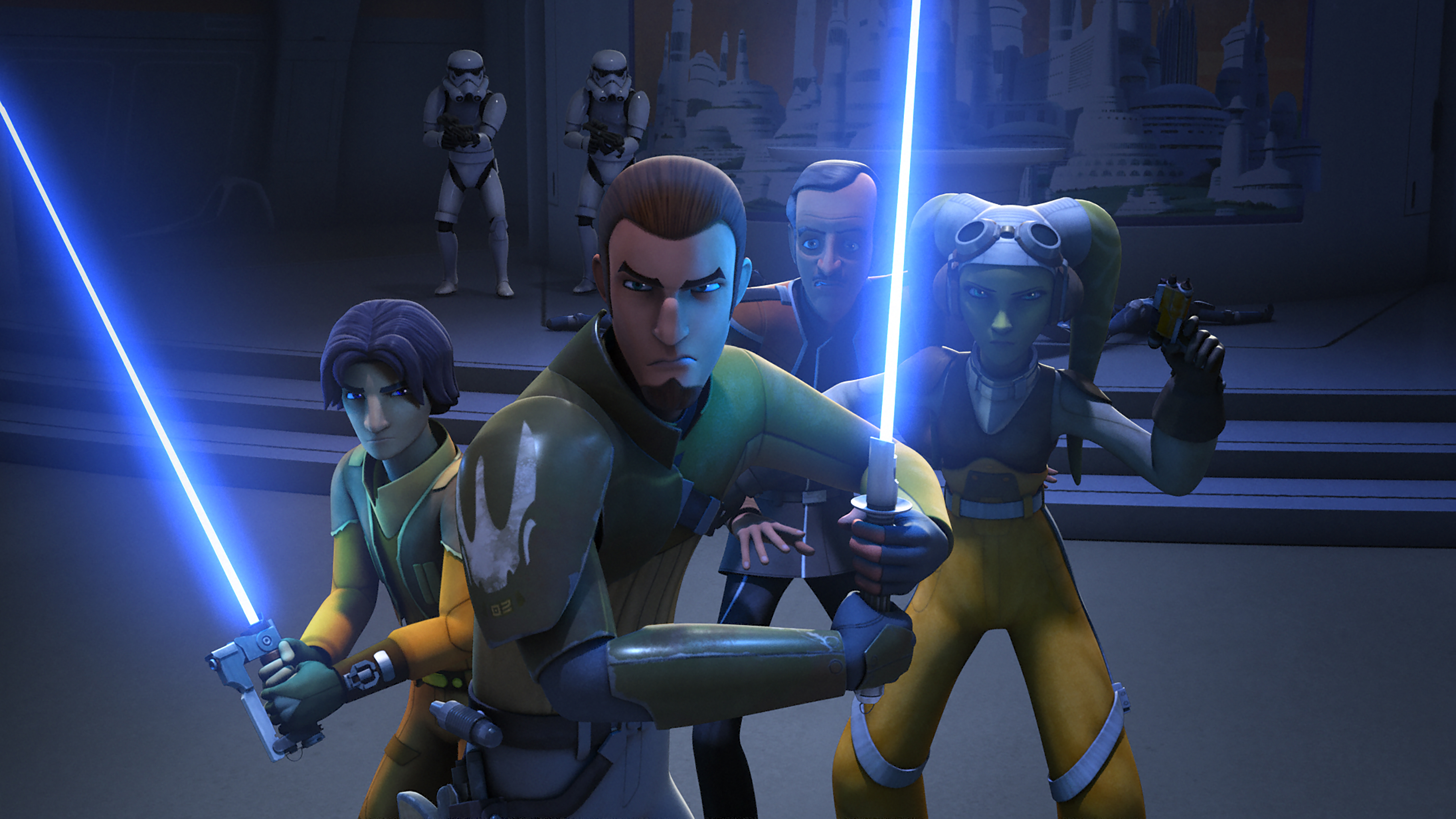
The Jedi Kanan Jarrus and Ezra Bridger supported the early Rebellion against the Empire.
Eight years after the end of the Clone Wars, Caleb Dume, who had assumed the identity of Kanan Jarrus, joined forces with the Twi'lek rebel fighter Hera Syndulla. Together, the two established a small rebel cell based on the starship Ghost. Fifteen years into the Imperial Era, a number of inaccurate tales about the Jedi started to appear. For example, the bounty hunter duo Gowski and were under the impression that Jedi aged backward, were able to fly, and had unusually dense bones. About five years before the Battle of Yavin, Jarrus took on a Force-sensitive teenager named Ezra Bridger as his apprentice.
Jarrus' decision to ignite his lightsaber on Kessel drew the attention of the Grand Inquisitor, whom Vader had tasked with hunting down Jedi and recruiting the "children of the Force." Under Jarrus' tutelage, Bridger trained as a Jedi while evading the Grand Inquisitor and other Imperial agents. Bridger completed his Jedi Trials at the Lothal Jedi Temple under the guidance of Master Yoda, who also counseled Jarrus to continue training Bridger. At the instigation of Grand Moff Wilhuff Tarkin, the Grand Inquisitor and Agent Alexsandr Kallus concocted a trap that captured Jarrus. However, Bridger and the other rebels mounted a mission to rescue Jarrus and killed the Grand Inquisitor. In the process, they encountered other members of the rebellion including the former Padawan Ahsoka Tano, who had become a key rebel leader.
During a mission, they inspired not only the people of Lothal to fight the Empire, but also the early "Alliance" to finally organize and to bring several Rebel cells together, paving the way for the Alliance to Restore the Republic. An underground faith known as the Church of the Force emerged in support of the Jedi and their ideals, believing that only their return could restore balance to the Force.
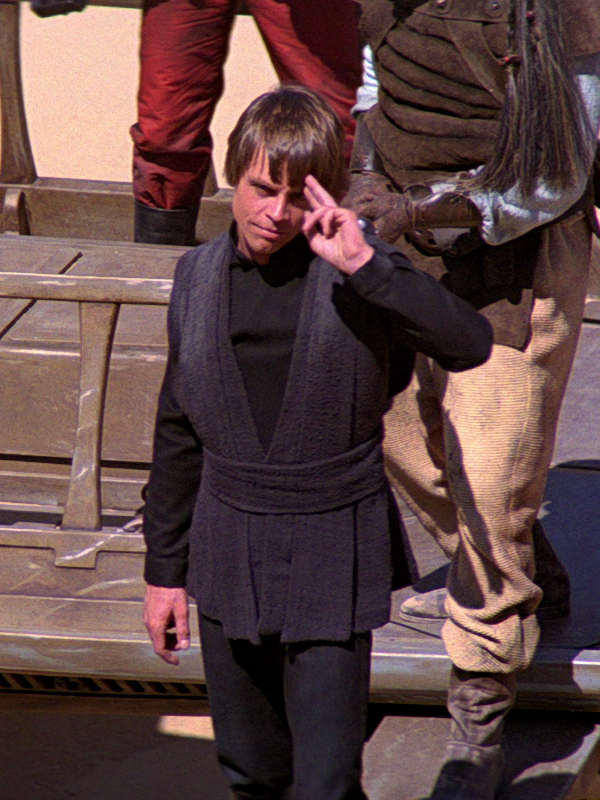
The galaxy found a new hope in Anakin Skywalker's son, Luke Skywalker, who became a Jedi like his father before him.
In 0 BBY, Obi-Wan Kenobi emerged from his exile on Tatooine, not only to help deliver the plans of the Death Star to the Rebel Alliance as requested by Rebel leader Princess Leia Organa but to begin training Luke Skywalker to become a Jedi Knight, in the hopes that Skywalker would be able to defeat both Vader and the Emperor. Through Skywalker, with Kenobi's guidance, the Rebel Alliance achieved a significant victory in the Battle of Yavin, which meant a turning point for the Alliance in the Galactic Civil War, though at the cost of Kenobi who sacrificed himself to save Skywalker. In 3 ABY, Skywalker received training from Yoda on Dagobah. Hailed as "the last of the Jedi," Skywalker was told by Yoda to pass on what he had learned so that the legacy of the Jedi Order could go on, before passing.
Forced to duel Vader while Sidious watched during the Battle of Endor, Skywalker briefly gave into anger and cut off his father's hand. Satisfied, Sidious betrayed Vader by ordering Luke to take his place on Sidious' side, but Skywalker rejected his anger and proclaimed he would always remain a Jedi, which led to him being tortured by the furious Emperor. In agony, he begged his father to save him, convincing the former Anakin Skywalker to save his son, leading to the redeemed Jedi Knight to destroy his master. By destroying his master and the Sith, Anakin brought balance to the Force for the time being, ultimately fulfilling his role as the Chosen One. While the injuries he sustained in the process of destroying Sidious, led to his death shortly after, Anakin made peace with Luke before passing and becoming a Force ghost alongside Yoda and Obi-Wan, who assured him that his son likely had a bright future ahead.
After the Battle of Jakku, the Empire officially surrendered to the New Republic by way of the Galactic Concordance, which put strict provisions on the rump state. In the Unknown Regions, however, fleeing Imperial officers and nobles conspired to rebuild their armies and fleets, culminating in the rise of the hermetic First Order. In the meantime, Skywalker gained a new ally in an individual named Lor San Tekka, a member of the Church of the Force during the dark times, who believed the return of the Jedi was necessary to have balance in the Force and aided Skywalker in retrieving lost Jedi lore.
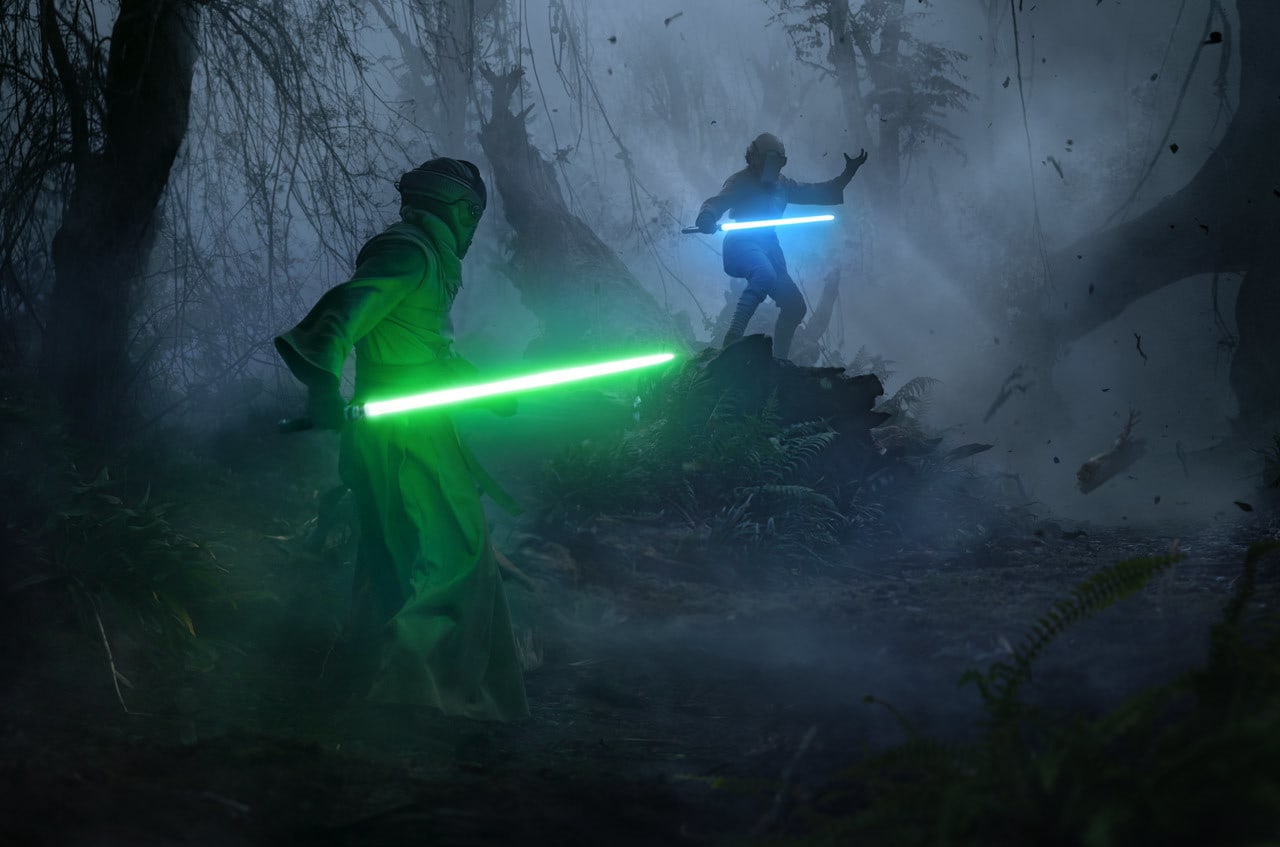
As the last Jedi, Skywalker carried the mandate of restoring the Jedi Order.
Following the Battle of Endor, the Alliance General Han Solo and the former Princess of Alderaan, Leia Organa, were married and after the final defeat of the Empire at Jakku, they had a son named Ben Solo. Ben was Luke Skywalker's nephew, as Organa was his twin sister, a fact Skywalker only learned from the Force spirit of Obi-Wan Kenobi following Yoda's death. Before her wedding, Skywalker had spoken to Organa about training her and affirmed that she did not need to give up her marriage to Solo if she went down the Jedi path. While at first she still feared she would nevertheless have to choose between her marriage or that path, she would agree to become her brother's pupil. On Ajan Kloss, Skywalker trained Organa in the ways of the Jedi as his first student. She even constructed her own lightsaber, but after seeing a vision of her son's death as the culmination of her Jedi training, Organa declined to progress further. She then directed her focus to the future of the New Republic.
Around five years after the Battle of Endor, Skywalker helped rescue Grogu, a mysterious child of the same species as Yoda, survivor of the siege of the Jedi Temple and who had performed great feats in the Force. Skywalker expressed his desire to train the child in the ways of the Force and took Grogu in with the approval of the child's protector, the Mandalorian Din Djarin. With Ahsoka Tano helping to oversee the effort, the Jedi Temple of Luke Skywalker was founded as a training center when Skywalker attempted to restore the Jedi Order, with Grogu becoming Skywalker's first student. After Tano parted ways with them for the time being, Skywalker gave Grogu a choice; he could remain with his new Jedi Order or return to Din Djarin. Grogu chose to return to Djarin, ending his Jedi training and having Skywalker send R2-D2 to pilot Grogu to Tatooine to reunite him with Djarin.
Although Skywalker regarded Kenobi and Yoda as the greatest masters in Jedi history, he knew that his training was unorthodox. As a Jedi Master, Skywalker aimed to provide his apprentices with a more traditional approach to the Jedi arts, and as such, his Padawans followed a training regime similar to the one that existed during the Republic Era. The New Jedi Order began as a class of Force-sensitive younglings, beginning with Skywalker's nephew, Ben Solo, whom he agreed to train in the ways of the Force at his sister's behest. In many ways, Solo reminded his parents of his grandfather, Darth Vader, therefore Organa wanted him to train with his uncle in the hope that he would not turn to the dark side as well.
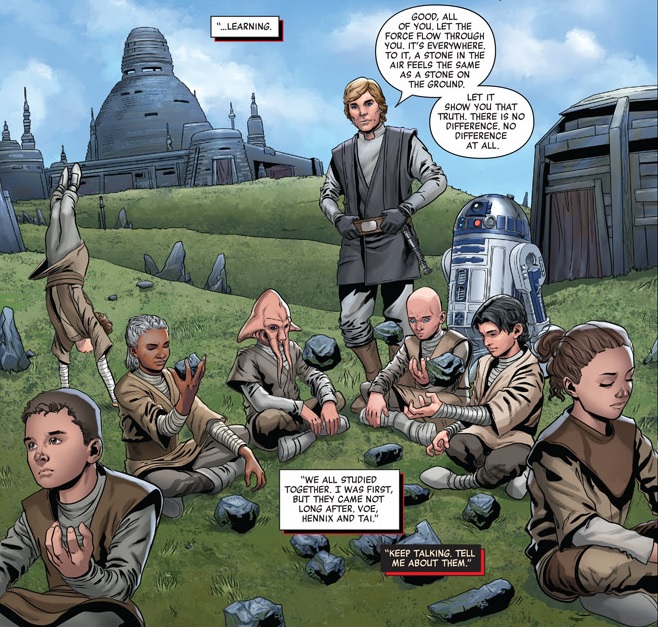
Skywalker founded a temple where he could train a new generation of Jedi apprentices, including his nephew Ben Solo.
In addition to Solo, Skywalker recruited several other students including Hennix, Tai, and Voe during his visits to many worlds over two decades. During this time, Solo was trained in lightsaber combat and became skilled with the Jedi weapon. While Solo was still an adolescent, Skywalker traveled with his nephew and Lor San Tekka to the Jedi outpost on Elphrona seeking Jedi artifacts. The trio were accosted by a dark side sect known as the Knights of Ren. Master Skywalker used his Force powers to defeat the Knights. Before leaving, the Knights' leader Ren told Solo to contact the Knights should he ever consider exploring the dark side further.
By 21 ABY, the new Jedi Order had grown to the point where it already had senior pupils on top of a new class of younglings in training. Around this time, Luke Skywalker experienced visions that distracted him from some of his basic duties at the academy, leaving some of his senior students to take over for him on this duties. A Twi'lek woman named Enyo served as an instructor on lightsaber combat, running a class of younglings through a series of exercises with training blades. When Skywalker went on a mission with Lor San Tekka that distanced him from his temple, Ben Solo, who had also taken the duties of running training exercises on the younger students, stayed to oversee the academy.
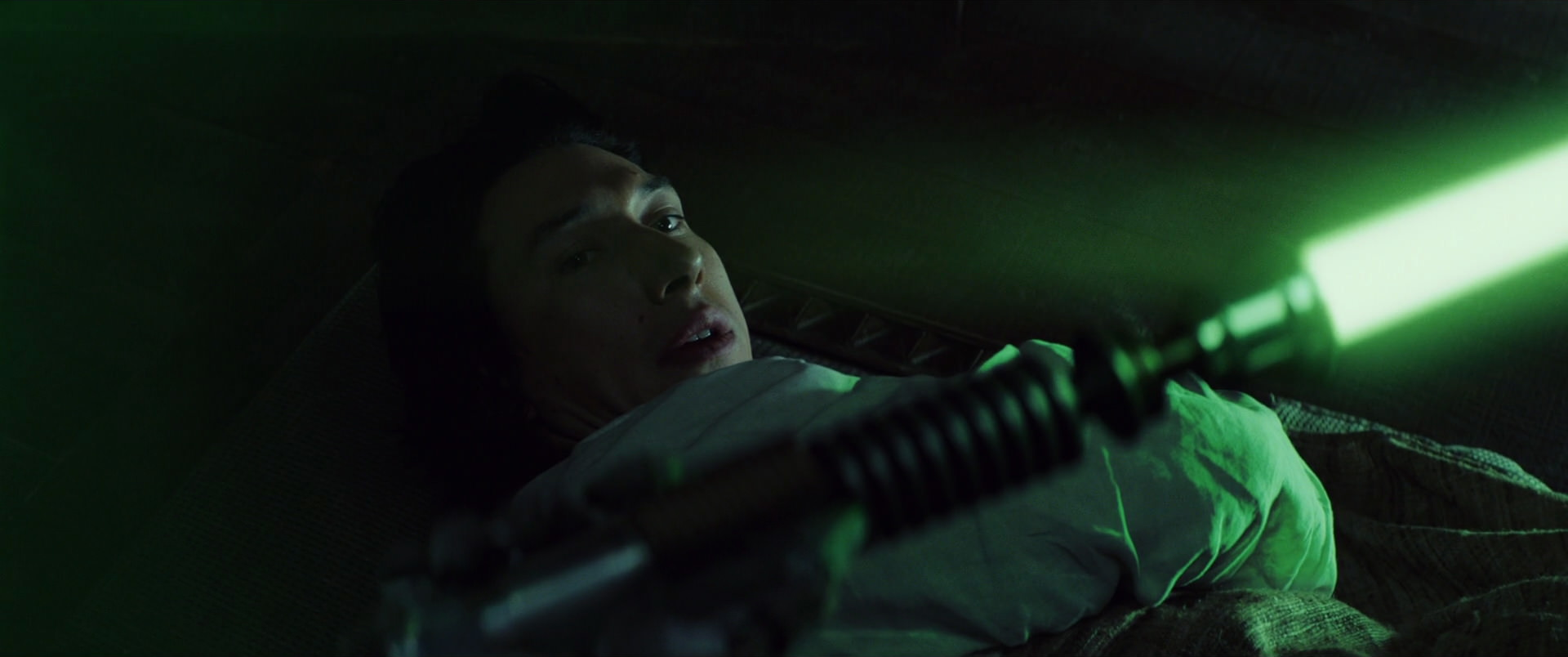
The confrontation between Skywalker and his nephew had fateful consequences for the New Jedi Order.
Solo's family would ultimately learn that he was gradually seduced to the ways of the dark side through the machinations of the First Order's ruler, Supreme Leader Snoke. Organa blamed Snoke as the sole cause of her son's descent into darkness, culminating in the destruction of the Jedi Temple, but Skywalker felt responsible for his nephew's fate. Sensing the dark side's influence within Solo, Skywalker probed his nephew's mind and beheld visions of the dark warrior that he was becoming. Skywalker instinctively raised his lightsaber to kill his nephew while he slept, believing Solo would destroy all that he loved; however, he stopped himself from killing his sister's son, and was overcome by shame. He then saw that Solo had awoken. He saw fear in the eyes of his young nephew, and in that moment Skywalker felt he had failed as a Jedi Master.
Solo reached for his blade and razed the hut using the Force, collapsing it in on his uncle. As Solo struggled to comprehend the situation and lost control of his emotions, the Jedi Temple was destroyed by a powerful lightning storm, killing most of Skywalker's other students. Shortly later, Hennix, Tai, and Voe returned from an offworld trip. They confronted Ben Solo, who told them that Skywalker had tried to murder him. Skeptical, they tried to detain him but Solo fled following a brief skirmish and sought Snoke. Hennix, Tai, and Voe resolved to find Solo and investigate what had happened. Meanwhile, Solo sought out Snoke and the two decided to seek out the Knights of Ren.
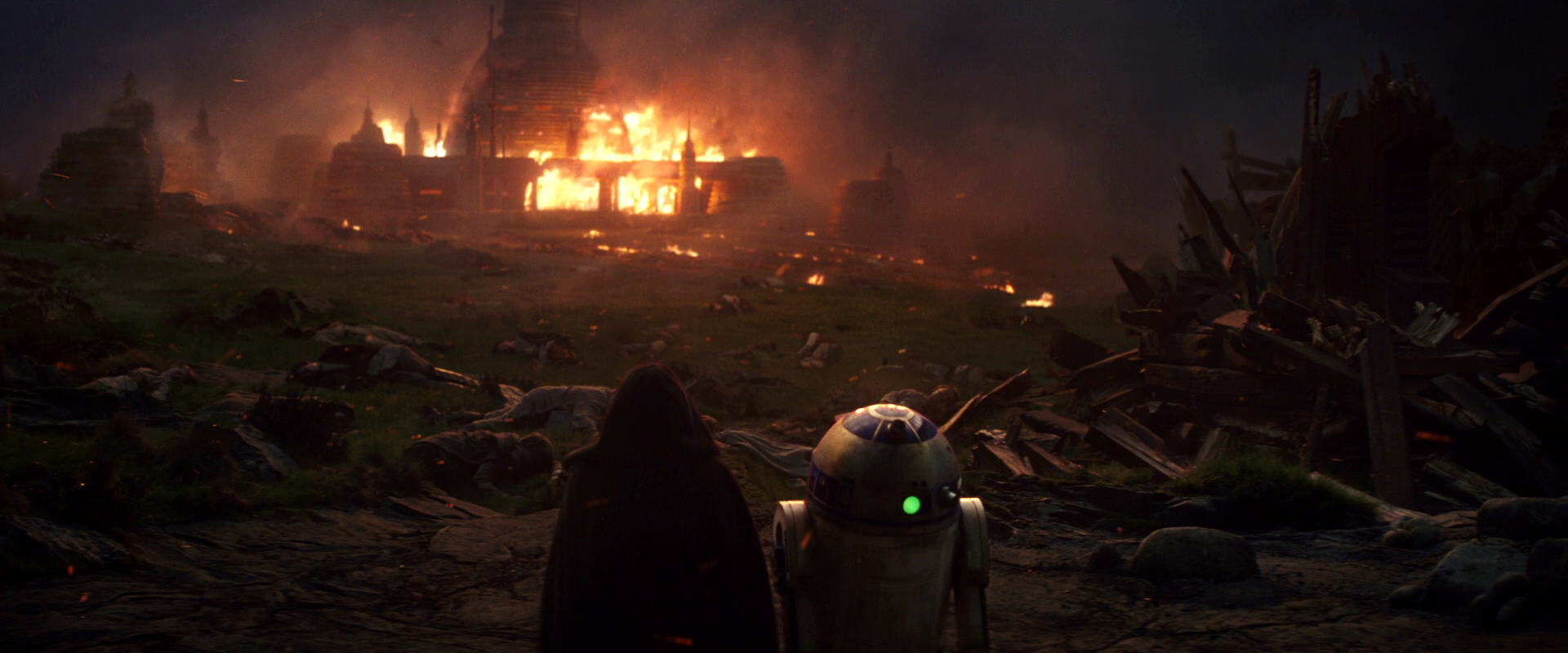
With his temple destroyed, Skywalker exiled himself to Ahch-To, vowing to never train another student.
Skywalker regained consciousness in the rubble of his nephew's hut too late to prevent Solo's destruction of the Jedi temple and the deaths of the students inside. Solo had already fled, and Skywalker could only witness his temple still burning alongside his astromech droid, R2-D2. Skywalker felt responsible for the ordeal and decided to exile himself, although those closest to him learned that he was also searching for the first Jedi Temple. Skywalker only left traces of his location in a single star map, with the remaining data being present in old Imperial records. Skywalker eventually found the first Jedi temple on the aquatic world of Ahch-To, where he took up refuge and lived in exile as a hermit. Skywalker vowed to never attempt another rebirth of the Jedi Order, and therefore resolved to die as the last Jedi.
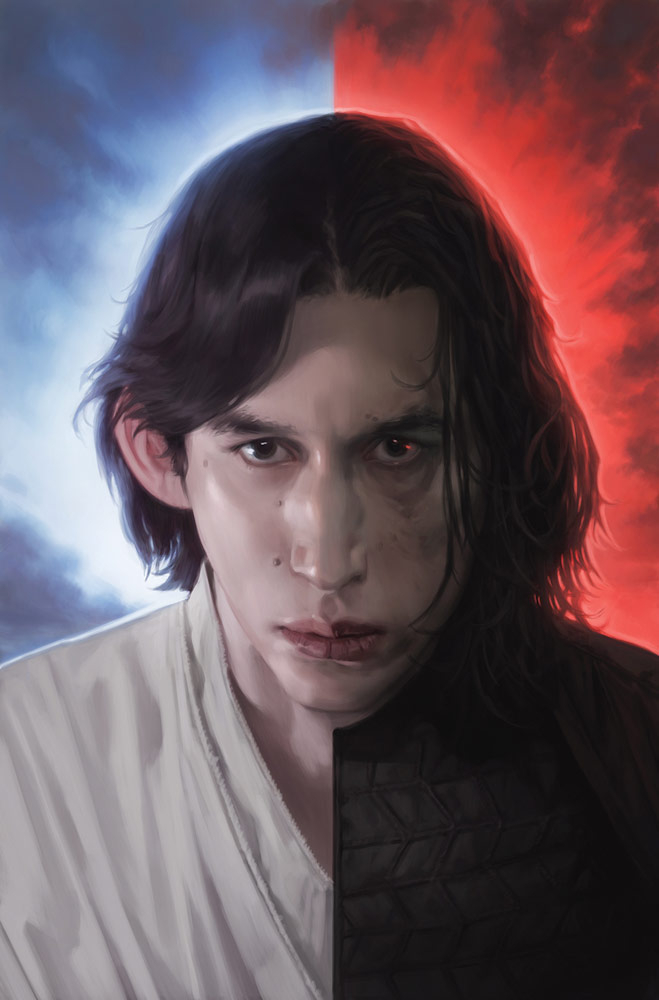
Rejecting the Jedi and his family, Ben Solo adopted the identity of Kylo Ren.
Traveling to the Jedi outpost on Elphrona, Solo contacted Ren, who told him to find the Knights of Ren on Varnak. However, Hennix, Tai and Voe caught up with the fugitive Solo. Though Tai preferred to reason with Solo, Voe and Hennix fought him, believing that he had a role in destroying the Jedi Temple and killing their brethren. Solo killed Hennix in self-defense before fleeing to Varnak. However, Ren was still unsatisfied that Solo was worthy to become a Knight of Ren but took him on a trial run.
To test Solo's worthiness for the dark side, the Knights of Ren enlisted his services in obtaining a Force relic called the Mindsplinter from a group of Mimbanese on the Minemoon. Using Tai's connection to Solo, Tai and Voe tracked him down there. During the ensuing skirmish, Tai tried to reason with Solo but was murdered by Ren, who deemed him unworthy. Consumed by rage and grief, Solo killed Ren and Voe, embracing the dark side. Taking the path of darkness, Solo became the master of the Knights of Ren, adopting the name "Kylo Ren" and bleeding his kyber crystal.
Solo turned to the dark side of the Force and became an apprentice of Snoke, joining the First Order and the Knights of Ren in the process and taking on the new identity of Kylo Ren. By the time of the outbreak of the First Order/Resistance War, Ren had gained a reputation of a "Jedi killer" due to Ren's skills with his lightsaber and his role in destroying Skywalker's new Jedi and his hopes of fully restoring the Jedi Order. Ren was determined to live up to the legacy of his grandfather, whom he considered to be Darth Vader instead of Anakin Skywalker.
As Luke Skywalker's efforts to rebuild the Jedi Order had seemingly failed, the Jedi Master's fabled return became a symbol of hope for those who believed in him and the Jedi. For others, he remained a myth, but he also posed a threat for those who feared his reappearance, such as Supreme Leader Snoke and the First Order, who believed Skywalker's return would also mean the rise of the new Jedi. It was by this time that an awakening occurred within the Force. Snoke and Ren both sensed it; Snoke was certain that as his apprentice grew stronger with the dark side, his counterpart in the light would rise as well. Convinced that it was Skywalker, Snoke directed Ren to seek out and destroy his former master.
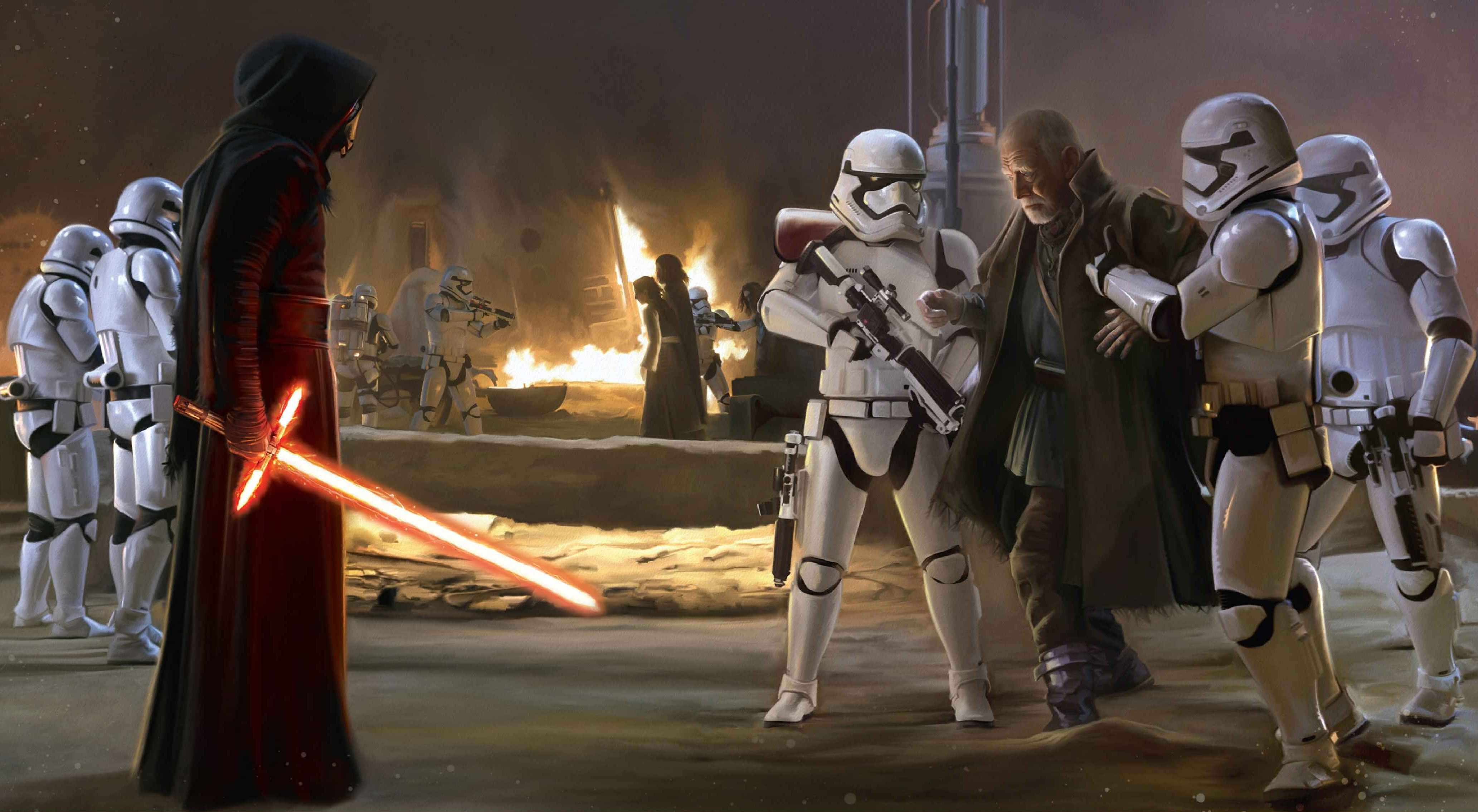
Ren hunted Skywalker across the galaxy, searching for clues to the whereabouts of his old master.
While Skywalker's location was unknown to the galaxy at large, his old ally, Lor San Tekka, came into possession of a piece of a star map to the first Jedi Temple some thirty years after the Battle of Endor. When the Resistance, a splinter cell of the New Republic Defense Force led by General Leia Organa that opposed the First Order, learned of this, General Organa dispatched Poe Dameron to attempt to retrieve the map from San Tekka's residence on Jakku. The First Order, however, also seeking Skywalker in an effort to destroy the last of the Jedi, likewise learned of San Tekka's findings and attacked Jakku in an effort to retrieve it. An astromech droid named BB-8, with the map in tow, successfully escaped from Jakku with the aid of a Force-sensitive scavenger named Rey and a First Order stormtrooper deserter named Finn, who previously helped Dameron escape the First Order's custody. They met and traveled alongside Han Solo and his Wookiee partner, Chewbacca, in a journey to return BB-8 to the Resistance.
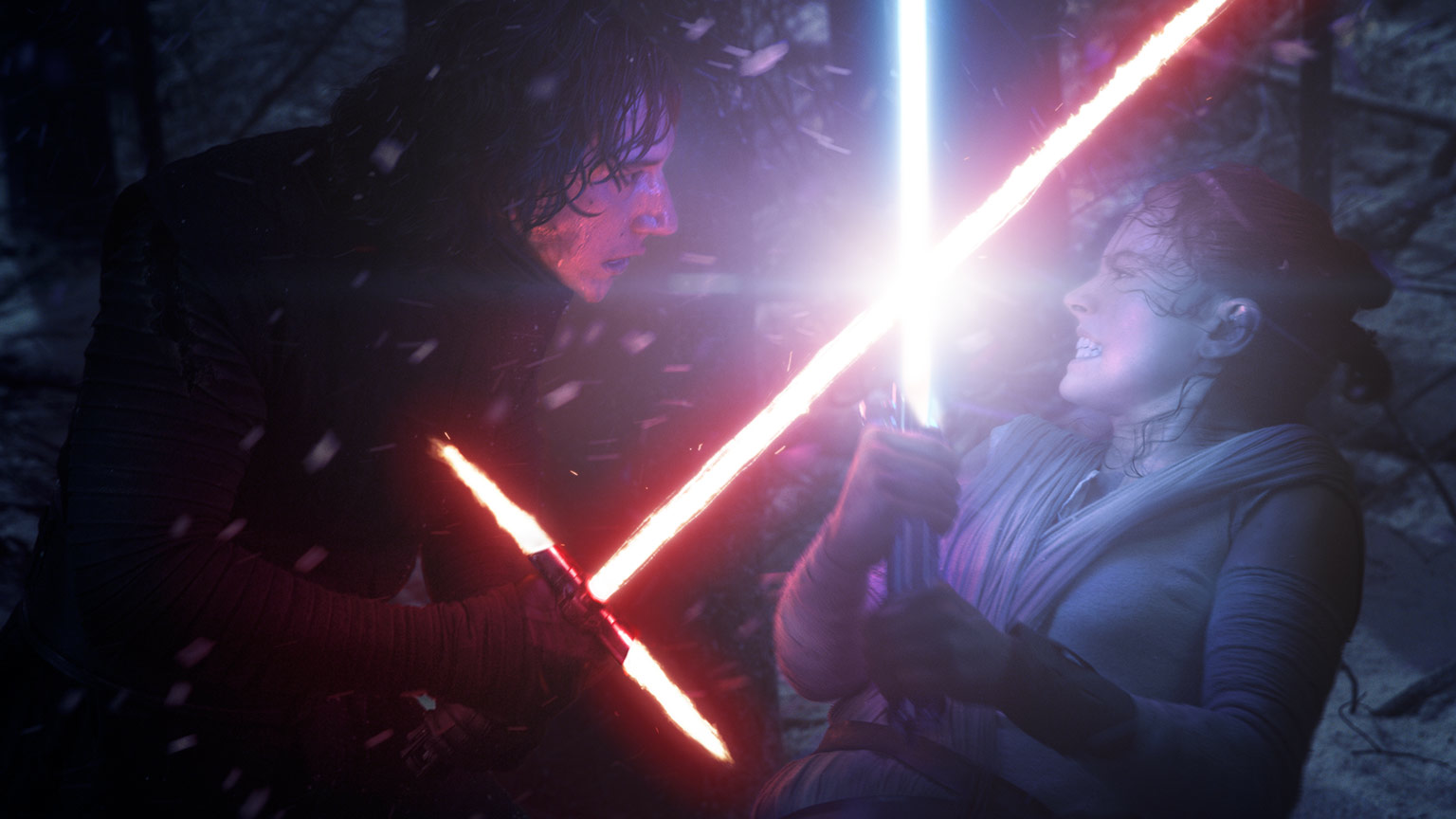
During the search for Skywalker, Ren discovered Rey, a Force-sensitive scavenger with a mysterious past.
After a devastating attack against the New Republic's capital by the First Order's Starkiller Base, the Resistance sought to destroy the First Order superweapon. Once there, Han Solo attempted to turn his son back to the light, but he was killed by Ren instead, who was attempting to fully commit to Snoke and the dark side. Rey subsequently defeated Ren in a lightsaber duel and Starkiller Base was destroyed, after which the Resistance finally pieced together the map to Skywalker with help from R2-D2. Organa, relieved to finally find her brother, sought to bring him home. She sent Rey, along with Chewbacca and R2-D2, to Ahch-To, where the young girl found Skywalker among the refuge of the first Jedi temple.
There, Rey presented the Jedi Master with his father's lightsaber—which he had lost on Cloud City decades prior— as a symbol of the only hope the galaxy had left in defeating Kylo Ren, Snoke, the First Order and Knights of Ren by bringing about the return of the Jedi Order.
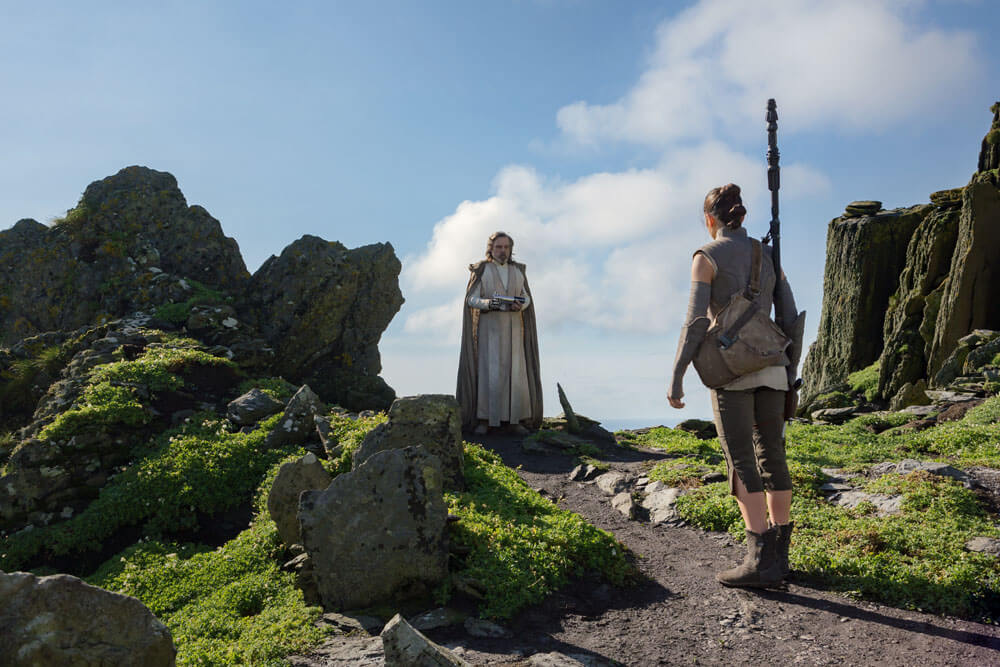
Rey sought out Skywalker, but the Jedi Master was unwilling to train her or help the Resistance.
Rey was surprised to find that Luke Skywalker, the last Jedi, instead rejected her plea for help, tossing his father's lightsaber over his shoulder and confining himself within his hut near the first Jedi Temple. Undeterred, in part thanks to her past as a Jakku scavenger, Rey followed Skywalker as he carried on his daily routine despite Skywalker telling her and Chewbacca that he would not face down the First Order. Skywalker was intrigued by Rey, however, when she felt voices calling her through the Force to an uneti tree containing the sacred Jedi texts. After sneaking aboard the Millennium Falcon and being shown a hologram of his sister's call for help to Jedi General Obi-Wan Kenobi decades earlier by R2-D2, however, Skywalker changed his mind and agreed to teach Rey the ways of the Jedi—and why, in his mind, it was time for the Jedi to end.
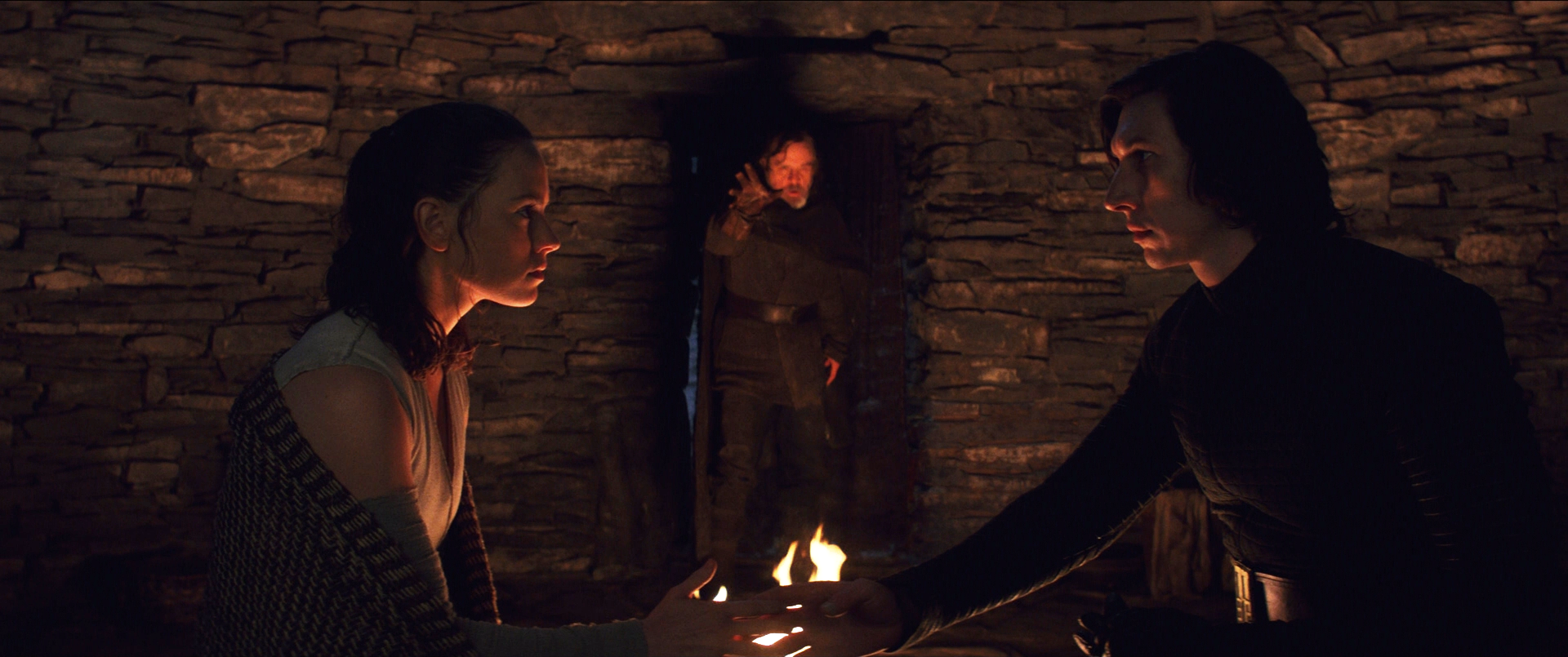
The bond between Kylo Ren and Rey allowed them to communicate with each other through the Force.
Meanwhile, however, a Force-bond had opened up between Rey and Kylo Ren, something that Rey decided not to tell her new master. When Skywalker discovered this, he abruptly ended his training of Rey, telling her to leave. After a brief duel, Skywalker finally confessed to Rey the truth of the night his nephew destroyed his fledgling New Jedi Order. Rey, who had grown sympathetic to Ren's conflict over their shared feelings of abandonment, decided to leave Skywalker in an attempt to redeem Ren in the light side, as Skywalker had done to his father decades earlier.
Rey traveled to the Supremacy, where Ren took her before his dark side master, Supreme Leader Snoke. Snoke proceeded to use the Force to tortuously probe Rey's mind, finding Skywalker's location. Snoke vowed to obliterate the last Jedi after dealing with the Resistance. Rey defied Snoke, trying to lash out at him; deeming her to have "the spirit of a true Jedi," he commanded Ren to execute Rey. Instead, however, Ren used his grandfather's lightsaber to bisect the Supreme Leader. Ren and Rey then fought Snoke's Elite Praetorian Guard, defeating them. However, Ren did not turn back to the light side as Rey believed, rather he usurped his master, fully engrossed in the dark side. Ren offered Rey the chance to rule the galaxy by his side, but instead, the two fought over Skywalker's lightsaber, eventually breaking it in half using the Force, knocking both unconscious.
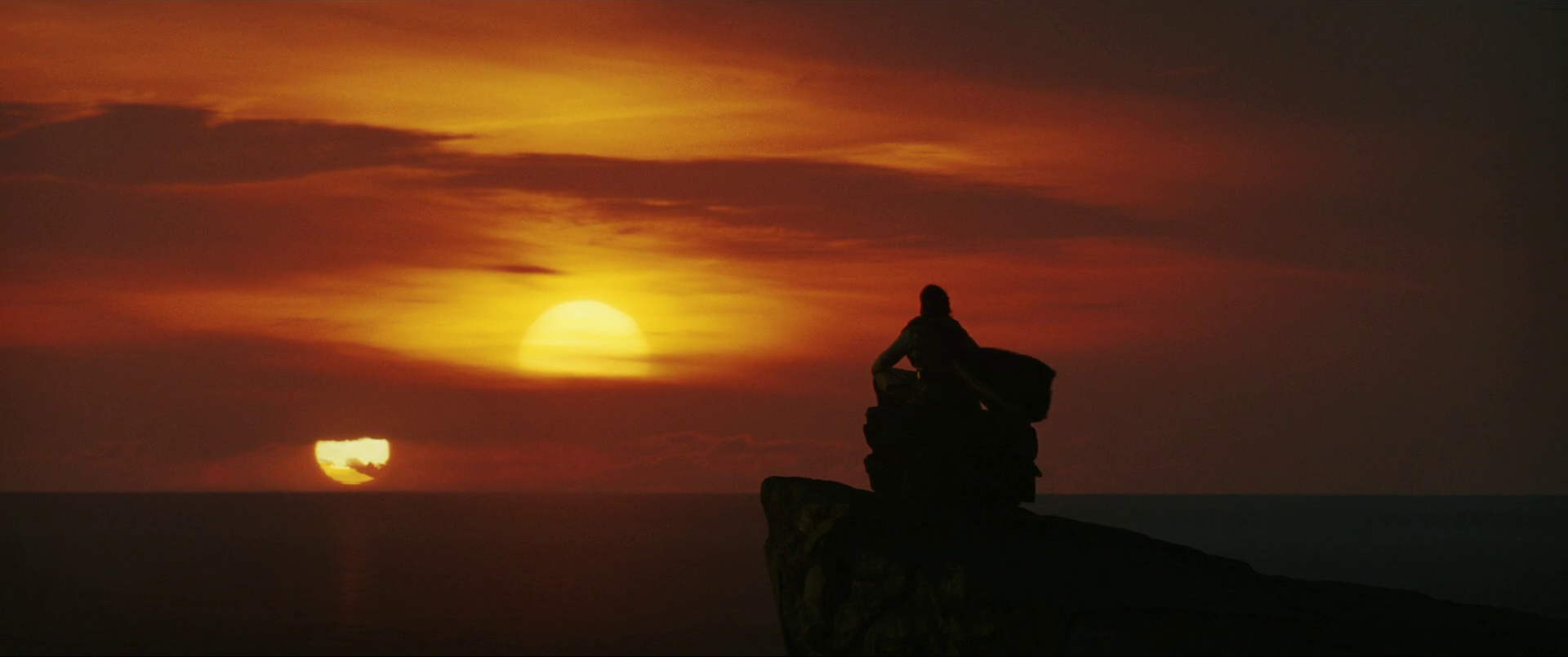
Although Skywalker sacrificed himself for the Resistance, his death did not mark the end of the Jedi.
After regaining consciousness, Rey escaped the Supremacy, regrouping with Chewbacca and R2-D2 above the Millennium Falcon. They came to the aid of the Resistance during Ren's siege of Crait—as did Luke Skywalker. After reuniting with his sister Organa, Skywalker faced his nephew before the First Order Army. However, Skywalker was in fact projecting himself across the galaxy from Ahch-To, buying time for the Resistance's survivors to escape. By the time Ren realized this, it was too late; the remaining survivors of the Resistance, including Poe Dameron, Finn, and Leia Organa, had escaped aboard the Millennium Falcon with Chewbacca and Rey, who Skywalker acknowledged as a Jedi. Skywalker's projection disappeared and back at the first Jedi Temple, Skywalker, having exerted a great amount of energy, passed away, becoming one with the Force before the twin suns of Ahch-To. Rey, meanwhile, had recovered Skywalker's lightsaber and began working with the Resistance on the process of building a rebellion against the First Order, while Skywalker's heroic tale spread across the galaxy, inspiring others as the First Order rose to power.
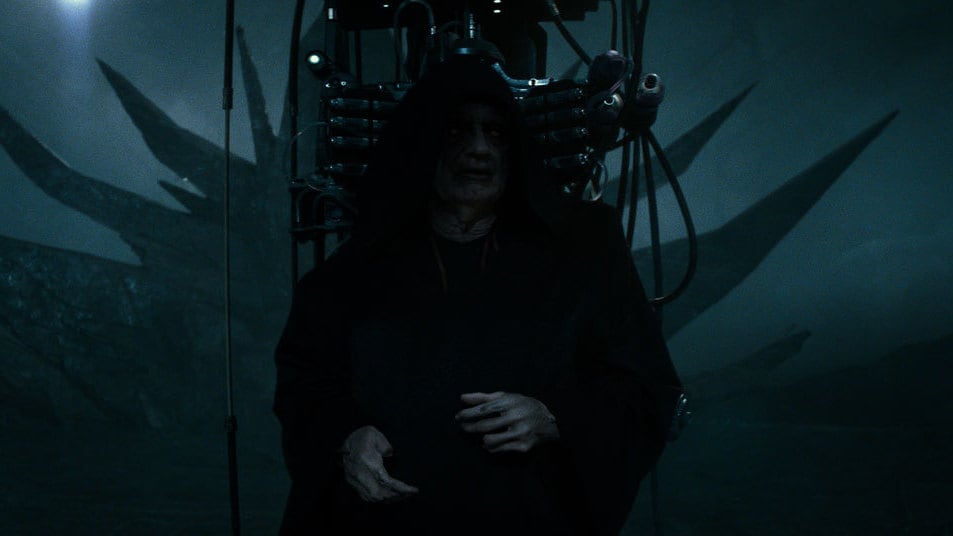
Darth Sidious returned after his first death to herald the rebirth of the Sith and the ultimate destruction of the Jedi Order.
In the year following the Battle of Crait, Rey repaired the Skywalker lightsaber continued her Jedi training under Luke Skywalker's twin sister, Leia Organa, who had once briefly trained under her brother as a Jedi herself. Meanwhile, Kylo Ren and the First Order cracked down on any worlds that spread the tale of his defeat at the hands of Luke Skywalker. During that time, a cult of loyalists to the extinct Sith, the Sith Eternal, revealed themselves to the galaxy from the Unknown Regions by broadcasting the voice of the late Emperor Palpatine, the public identity of Darth Sidious, who was thought to be dead since the Battle of Endor. After obtaining a Sith wayfinder from Mustafar, Ren traveled to Exegol and found that Sidious still lived. The Emperor promised Ren the Sith Eternal's fleet of Xyston-class Star Destroyers, the Final Order, if he killed Rey, the last Jedi and the granddaughter of Sidious.
After traveling to Pasaana and Kijimi, Rey was confronted by Ren in the Death Star ruins on Kef Bir. Ren, having revealed to Rey her true lineage, attempted to turn her to the dark side. Their duel was interrupted when Ren sensed his mother's death across the galaxy, allowing Rey to wound the Supreme Leader while he was distracted. After healing Ren, Rey stole his TIE Whisperer and returned to the first Jedi Temple on Ahch-To to exile herself as her master had, afraid of her powers and her potential for the dark side as a descendant of Darth Sidious. The spirit of Luke Skywalker appeared before Rey to motivate and encourage her, teaching his student one last lesson: that confronting fear was the destiny of all Jedi. Skywalker gave Rey his sister's lightsaber and lifted his old starfighter out of the Ahch-To seas with the Force, allowing her to use Ren's wayfinder to travel to Exegol. Rey charted her path through hyperspace and transmitted the coordinates to the Resistance, allowing them to travel to Exegol as well.
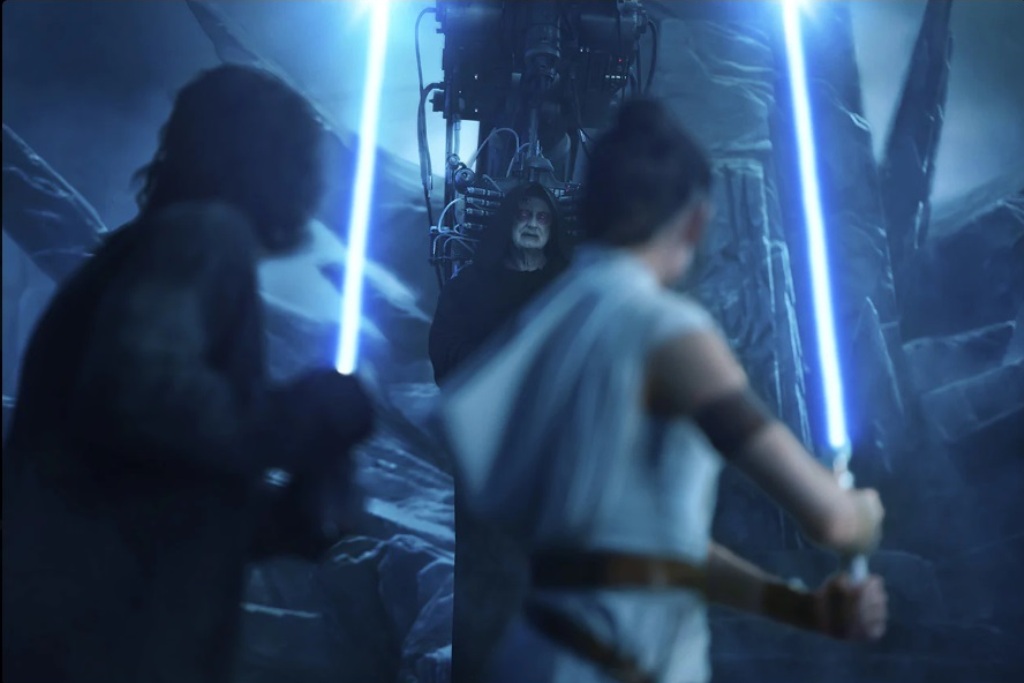
During the Battle of Exegol, Ben Solo and Rey stood together as Jedi against the Sith Emperor.
The Battle of Exegol was fought between the Resistance and the Sith Eternal. It was during the battle that Rey confronted her grandfather Sidious, who offered her the Throne of the Sith and asked her to take her revenge for having her father and mother killed by sacrificing him as part of a ritual, allowing the Sith to reborn and ending the Jedi. However, a redeemed Ben Solo, who had renounced the dark side and shed his identity as Kylo Ren, arrived to help Rey. Solo defeated the Knights of Ren, but he and Rey were caught by the Dark Lord of the Sith, who learned that the two were a prophesied Force dyad. Sidious used their bond to heal himself, drawing on their combined life force to restore his body before tossing Solo into a nearby abyss to take his revenge on the Skywalker family for killing him years earlier at the Battle of Endor. The Sith Lord then unleashed his Force lightning on the Resistance and their Citizens' Fleet above. However, Rey was able to reach out to the past Jedi. The Jedi Order was gone, but their strength remained.
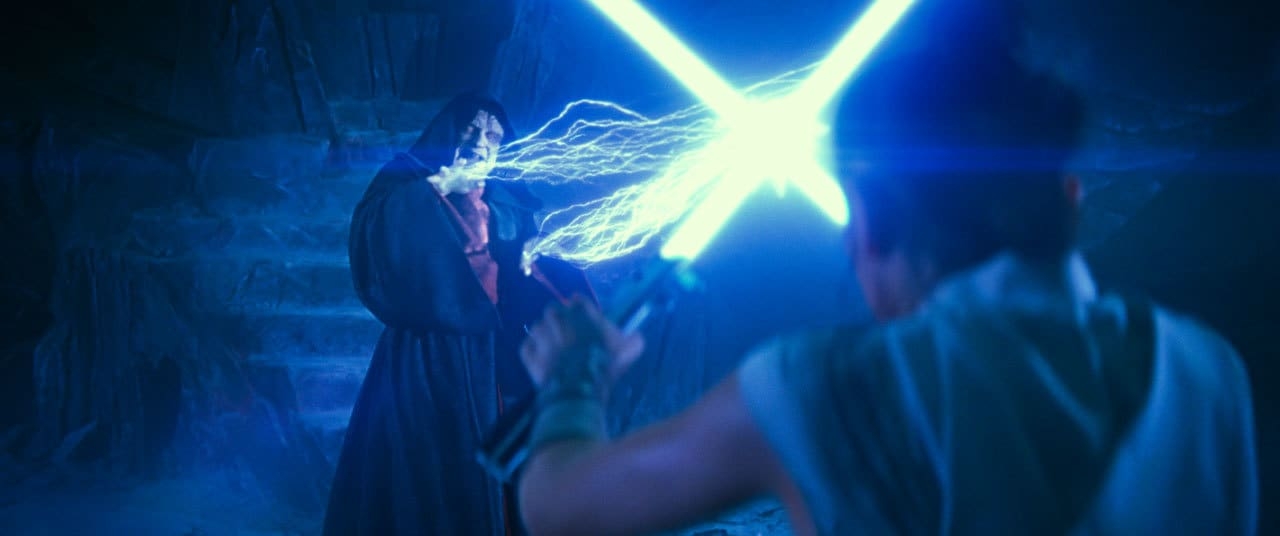
The Emperor was destroyed by his granddaughter Rey, who was strengthened by the spirits of the Jedi.
Upon hearing their voices call to her, Rey was strengthened and rose to face her grandfather. Palpatine redirected his Force lightning towards Rey, who defended herself with the lightsabers of her masters. As Sidious boasted that he was all the Sith, Rey responded that she was all the Jedi, and she deflected Sidious's lightning back towards him, causing the Sith Lord to disintegrate and be destroyed at last, preventing the rebirth of the Sith. A massive explosion burst out and erupted, causing the Sith Citadel beneath Exegol to collapse and crumble on the Sith Eternal cultists. Rey sacrificed herself to stop the Emperor, and Solo sacrificed his life in turn to resurrect Rey. With his death, the Skywalker bloodline became extinct.
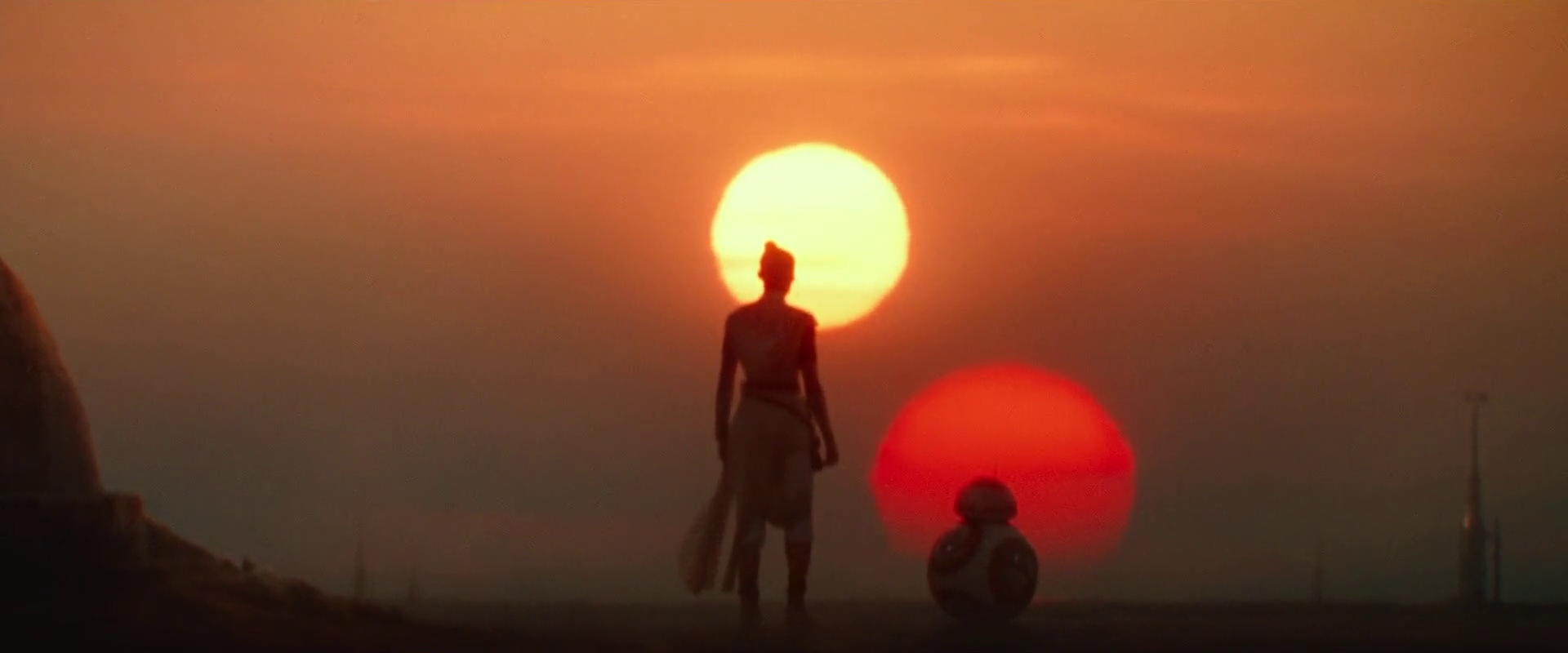
The destruction of the Sith marked a new era in galactic history, to be shaped by the Force in ways as yet unknown.
Some time later, Rey buried her mentor's lightsabers at the Lars moisture farm on Tatooine, the homeworld of the Skywalkers, and unsheathed her own lightsaber. When a local elderly woman stumbled upon Rey using her lightsaber, she asked the scavenger her name. Seeing the spirits of Luke and Leia in the distance, Rey responded that she was "Rey Skywalker." In the aftermath of the First Order/Resistance War, the Jedi Order was still in the process of rebuilding itself. Rey eventually gained the status of Jedi Master while fighting to restore galactic peace, but the Order had not yet returned to its former glory.
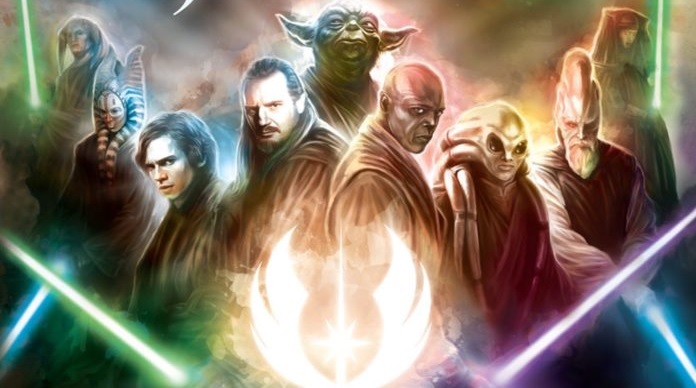
The Jedi Order was mythologized after its extinction, surviving in memory as a symbol of hope in the galaxy.
After the fall of the Empire, the Jedi Order's memory was rehabilitated and mythologized. The Jedi were romanticized during the New Republic Era, becoming deified symbols of a bygone era. Despite the Order's extinction, Supreme Leader Snoke endeavored to eradicate all traces of its past, believing that the Jedi inspired hope in the enemies of the First Order.
Luke Skywalker, a legendary Jedi Master, devoted years to rediscovering the Order's history which he chronicled in the book The Secrets of the Jedi. Although Skywalker held individual Jedi, such as Mace Windu, Yoda, or Qui-Gon Jinn, in high esteem, he became disillusioned by the Order's failure toward the end of its history prior to the rise of the Empire. He faulted the Order for not thwarting the machinations of Darth Sidious, causing the extinction of the Jedi. Skywalker also believed that his old mentor, Obi-Wan Kenobi, was responsible for his father's transformation into Darth Vader. After his faith in the Jedi was restored by Rey and Yoda, Skywalker's final stand allowed the legend of the Jedi to spread once more, bringing hope to the galaxy as the First Order advanced. Later, to Rey, the spirit of Skywalker admitted that he had been wrong and encouraged her to keep the Jedi way and fight Sidious.
The Jedi Order (as formal organization, not just scattered surviviors) first appeared in the current canon in Star Wars: Episode I The Phantom Menace, though it previously appeared in various Star Wars Legends sources beforehand. The lore of the Jedi Order and of the Force was greatly expanded upon during the Star Wars: The Clone Wars television series and other media. The role of the Jedi Order in preserving the peace of the Republic, the controversy of them stepping into the role of military leaders, and their rules against attachment in order to keep to the light are pivotal plot points that Darth Sidious all exploits, which eventually leads to the Order's downfall in Star Wars: Episode III Revenge of the Sith. Prior to that, they had been mentioned indirectly as the Jedi in the original trilogy as Luke Skywalker encounters Jedi Master Obi-Wan Kenobi and later Master Yoda. In Star Wars: Episode VI Return of the Jedi, Yoda charges Luke with carrying on the lessons and legacy of the Jedi Order.
For the word "Jedi," Lucas took inspiration from the Japanese term "Jidaigeki," which refers to a drama set during the Edo period of Japanese history, when samurai were still in activity.
The Jedi Order originated in the rough draft of Star Wars as the Galactic Emperor's bodyguard. They became affiliated with the Republica Galactica in the second draft. Later, when composing background information for licensees in 1977, George Lucas described the Jedi Order as being "several hundred thousand" strong before the Purge.
Ahead of release, George Lucas claimed that The Phantom Menace depicted "the heyday of the Jedi," during which time there were thousands of Jedi and they acted as the "guardians of peace and justice in the galaxy, sort of like the old marshals out West." In the overall story of Star Wars, however, The Phantom Menace kicks off the prequel trilogy, which depicts the downfall of the Jedi Order. Canonical works also show that the Jedi were already losing their way by the time of The Phantom Menace. Still, Lucas felt he needed "to establish Jedi as what they were, which is sort of peacekeepers who moved through the galaxy to settle disputes." He described the Jedi as "warrior-monks who keep peace in the universe without resorting to violence." Star Wars: Episode II Attack of the Clones would depict the Jedi compromising their morals by taking up a military position in the newly formed Republic Military.
Rather than being "superheroes," Lucas noted how the Jedi Knights brought peace into the galaxy by "being ambassadors and trouble-shooters," who had the "moral authority" to keep the governments of the planets from becoming tyrannical or start wars. In that capacity, he said they had the power to "send the whole force of the Republic, which is 100,000 systems, so if you don't behave they can bring you up in front of the Senate" to "cut you off at the knees, politically." That Jedi peacekeeping philosophy is challenged by the Clone Wars, where the Jedi take on positions as military commanders. The Star Wars: The Clone Wars animated series produced under Lucas continued to study the themes of the Jedi Order and the road to its downfall. Supervising director Dave Filoni once noted that, in his mind at least, one of the story elements of the prequels was showing how the Jedi "almost forgot to care" and "[lacked] compassion" for Anakin Skywalker's situation, which leads to his fall to the dark side and the destruction of their Order.
Luke Skywalker's new generation of Jedi was first mentioned in the 2015 film Star Wars: Episode VII The Force Awakens, along with the film's novelization and junior novelization. Further background details about the Jedi and their massacre, which saw the end of Luke's students, can be found in the reference book Star Wars: The Force Awakens: The Visual Dictionary by Pablo Hidalgo. On the contrary to what happened in the final films, George Lucas planned the Jedi Order to be restored by Luke Skywalker, who raised a new generation of Knights with the help of the surviving Jedi masters. Even then, however, Lucas's own plans for the sequel trilogy would have featured Skywalker in a dark state of mind, something of "a Colonel Kurtz type."
Writer Cavan Scott explained a theme of the Star Wars: The High Republic is seeing the Jedi live out amongst local communities, instead of being, comparatively, "locked away in their temples. Charles Soule also explained, "The thing to know about The High Republic's Jedi is that the rules that exist in the prequel trilogy still exists. They still take the same vows, they still have the same feelings about it, but their understanding of the strength of the Order and flexibility within the Order and the interpretation of those rules ... they're more diffuse, I would say."